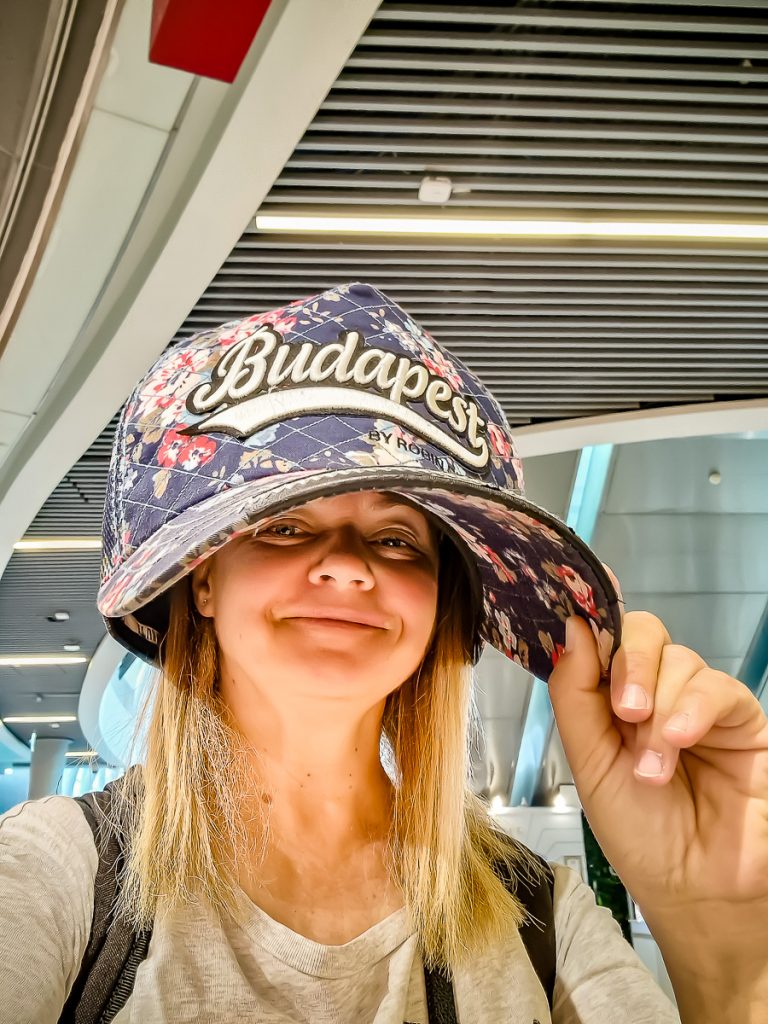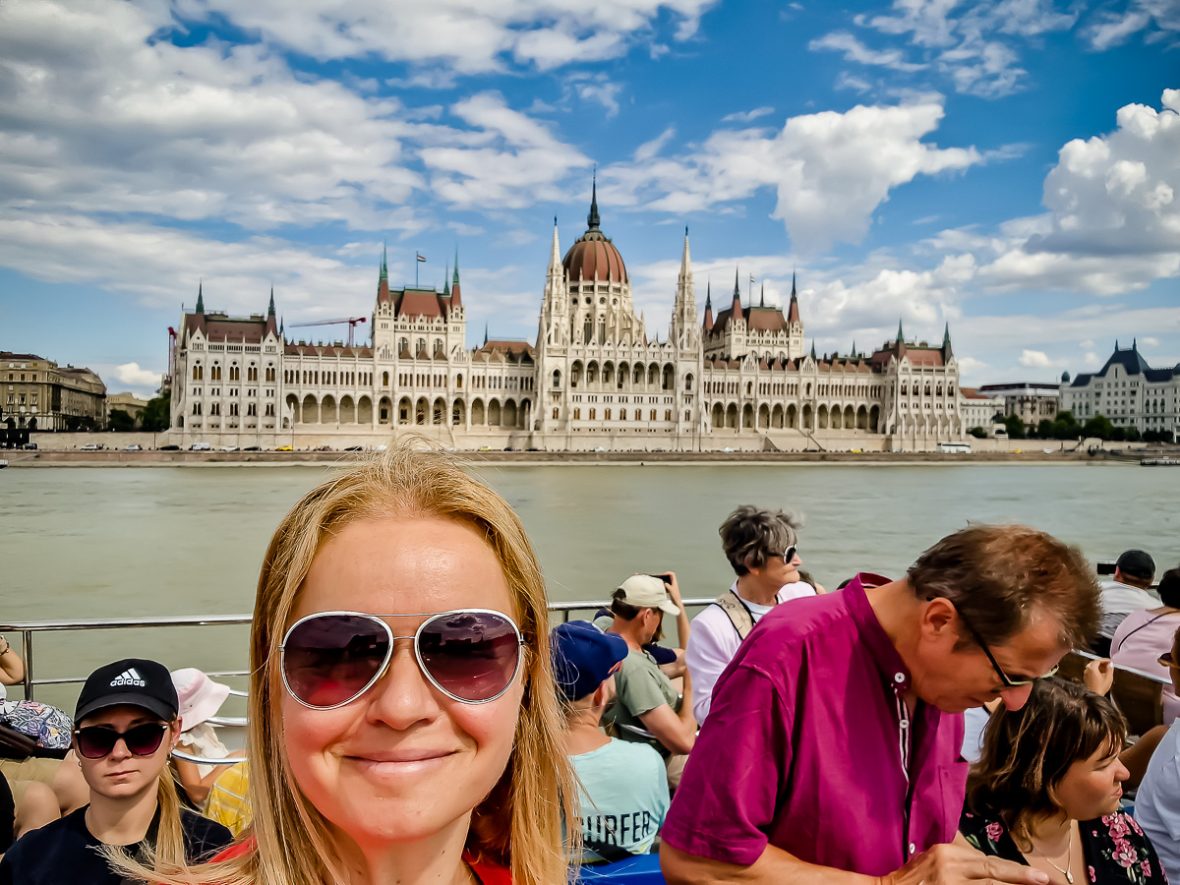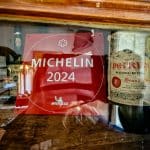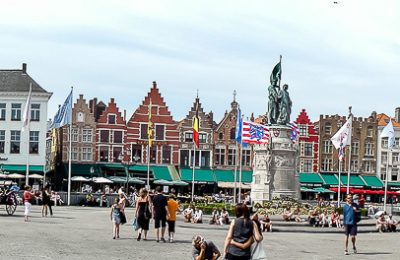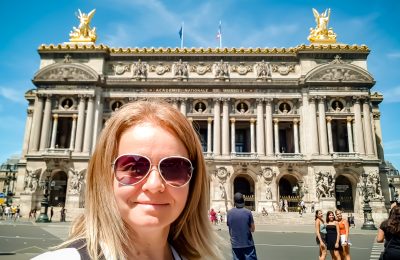Even though it’s just a stone’s throw away from Romania, I almost never had a clear desire to visit Budapest.
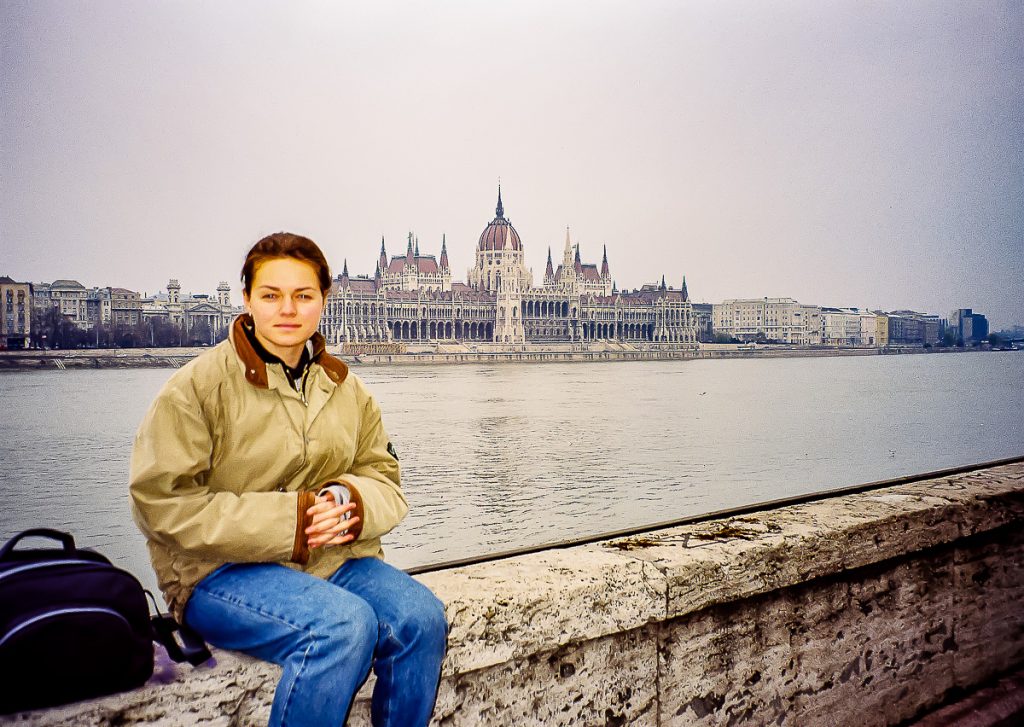
It happened in 1998, dude. In another millennium!
We came by train, and for us, it was a super cool trip.
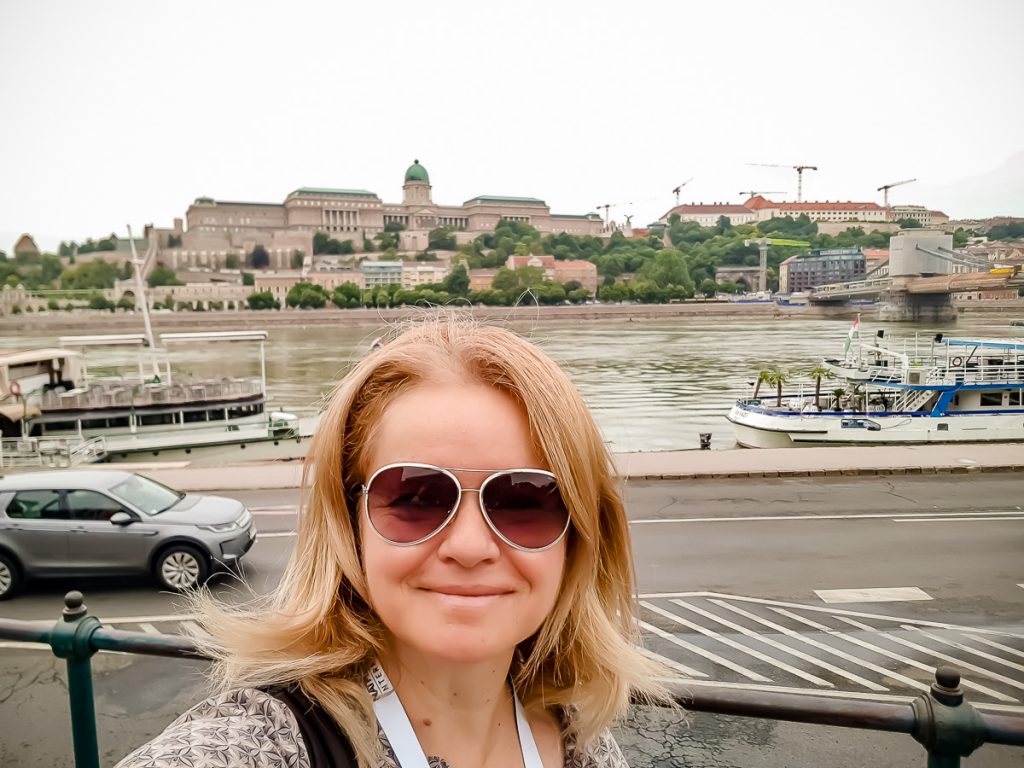
Later, I went back twice for work (in 2019 and 2022) and twice just for fun, for Robbie Williams‘ concert.
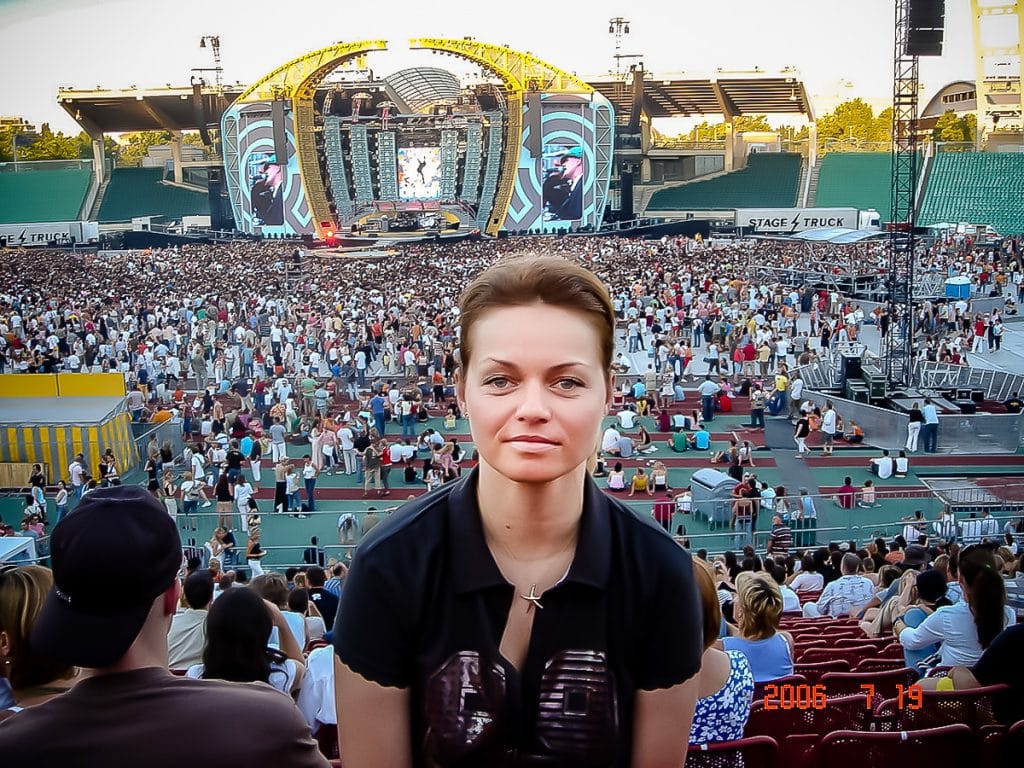
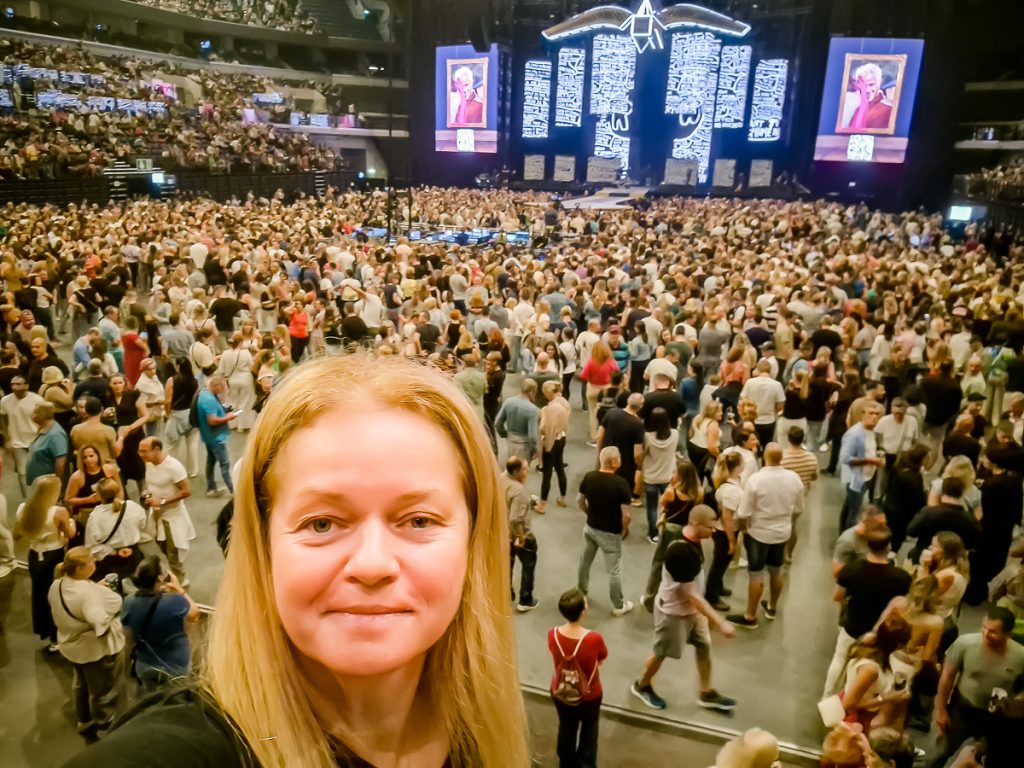
One hour flight from Bucharest, a taxi from the airport (about 35 euros) and, in 30 minutes, I arrive in the Chain Bridge area, a place where I like to start exploring the city on foot.
Budapest is divided by the Danube into two different cities. (In fact, they were actually two independent cities.)
Buda – the part with the most important museums, the Hungarian kings’ castle, Fisherman’s Bastion, the famous thermal baths, and other places worth seeing.
Pest – the livelier, more crowded part. Here are the long streets with shops, restaurants, bars, clubs. But tourist attractions aren’t missing either.
TOURIST ATTRACTIONS IN BUDA
BUDA CASTLE
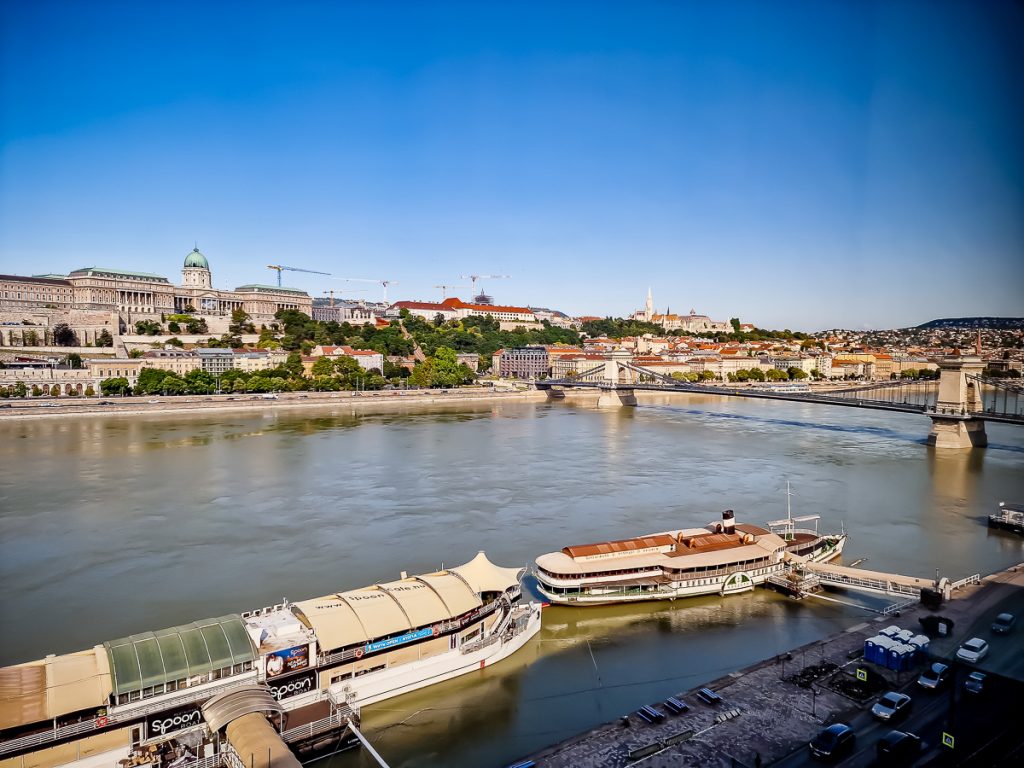
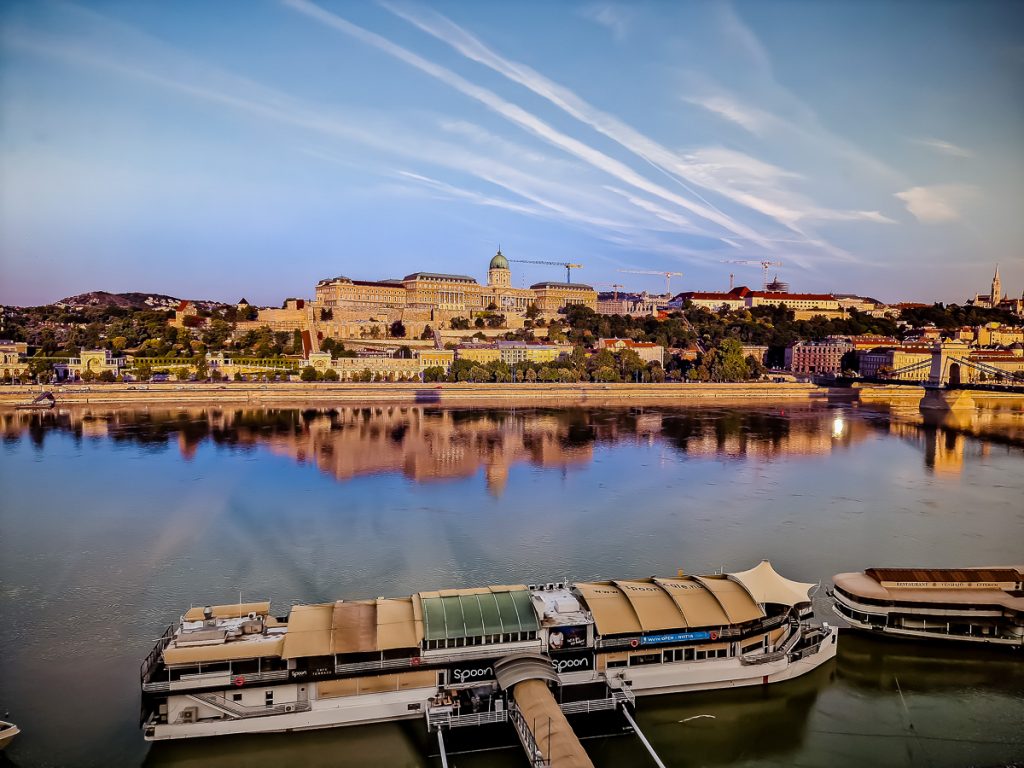
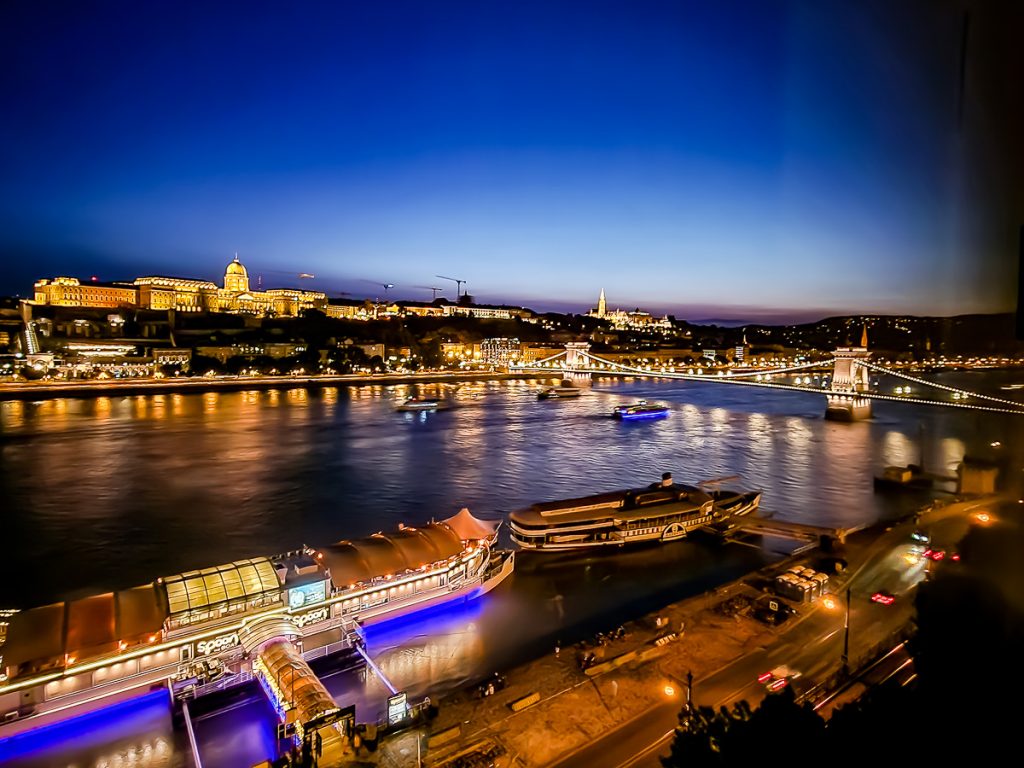
I’m taking advantage of the view from my hotel room and staring at Buda Castle (the Royal Palace) from morning till evening. No, not continuously 🙂
It was built between 1247-1265 to serve as the residence of King Béla IV. Declared a historic monument, it was included in the UNESCO World Heritage List in 1987.
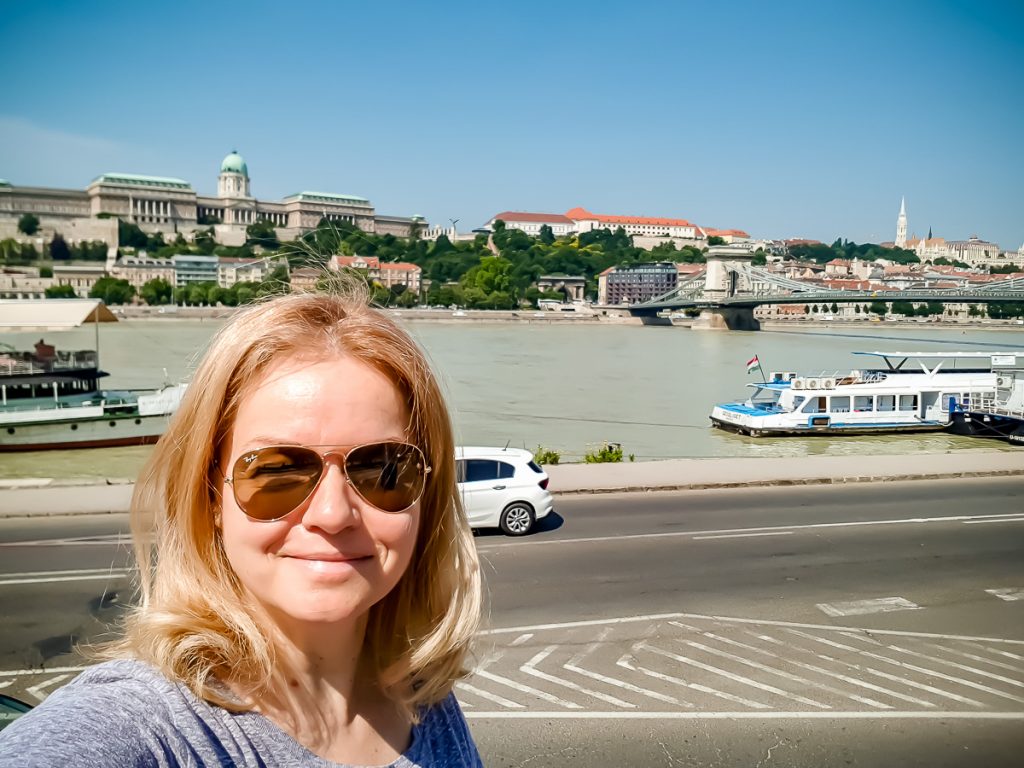
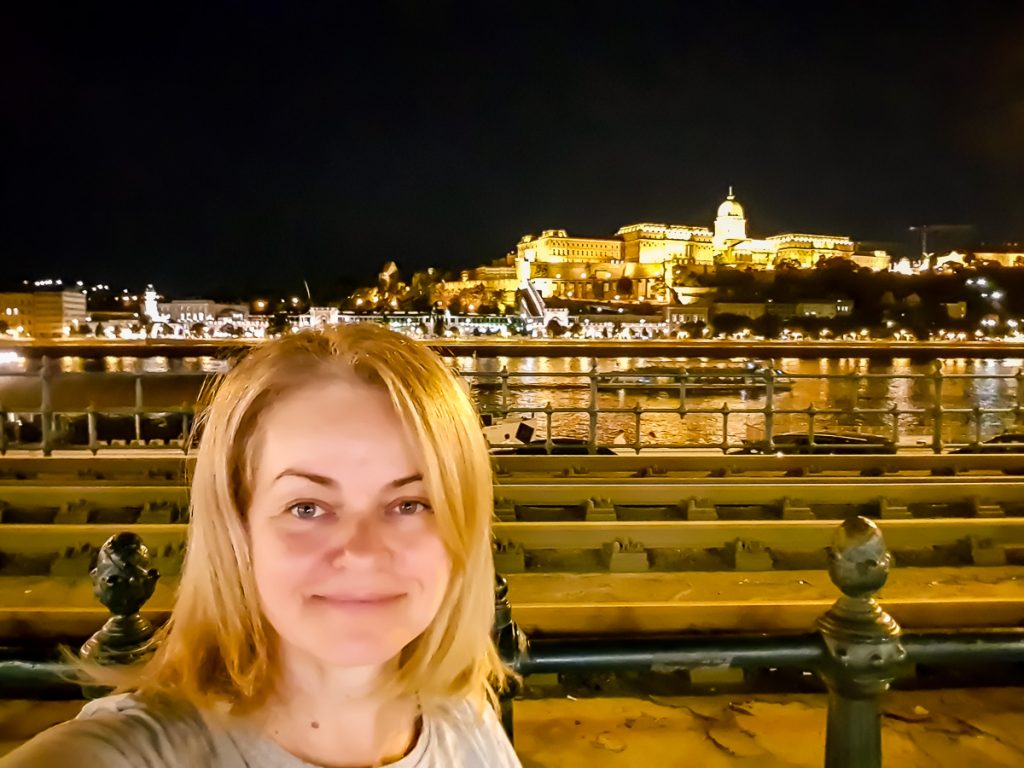
I’m not taking a selfie with it now since I already did that in two different years…
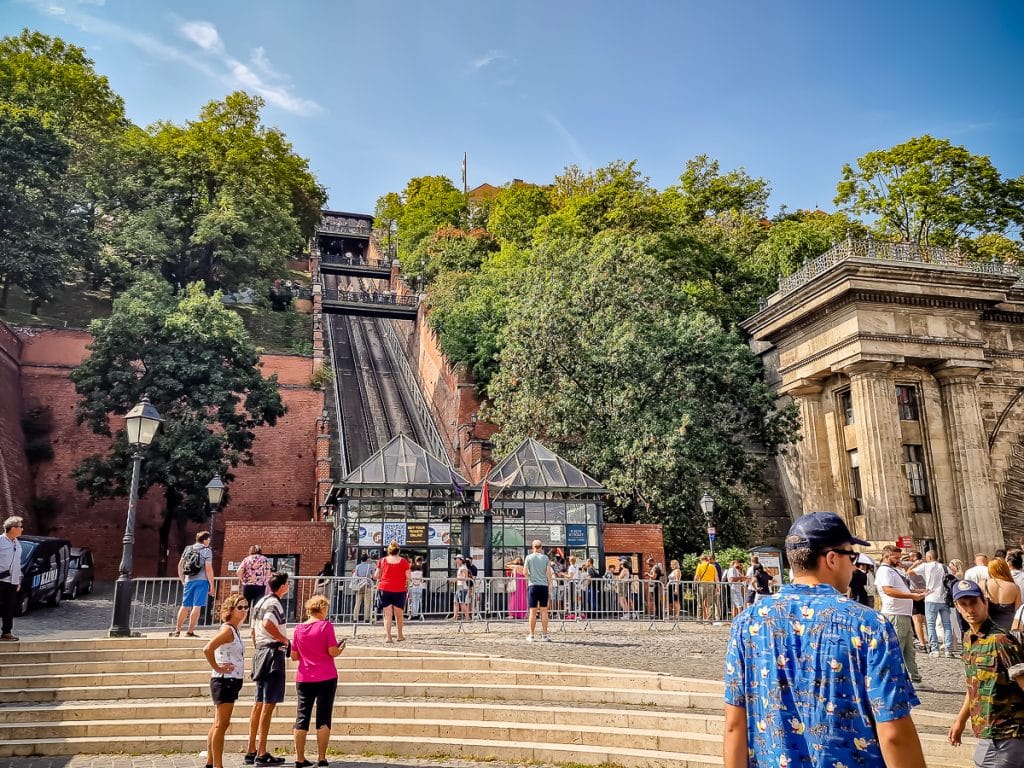
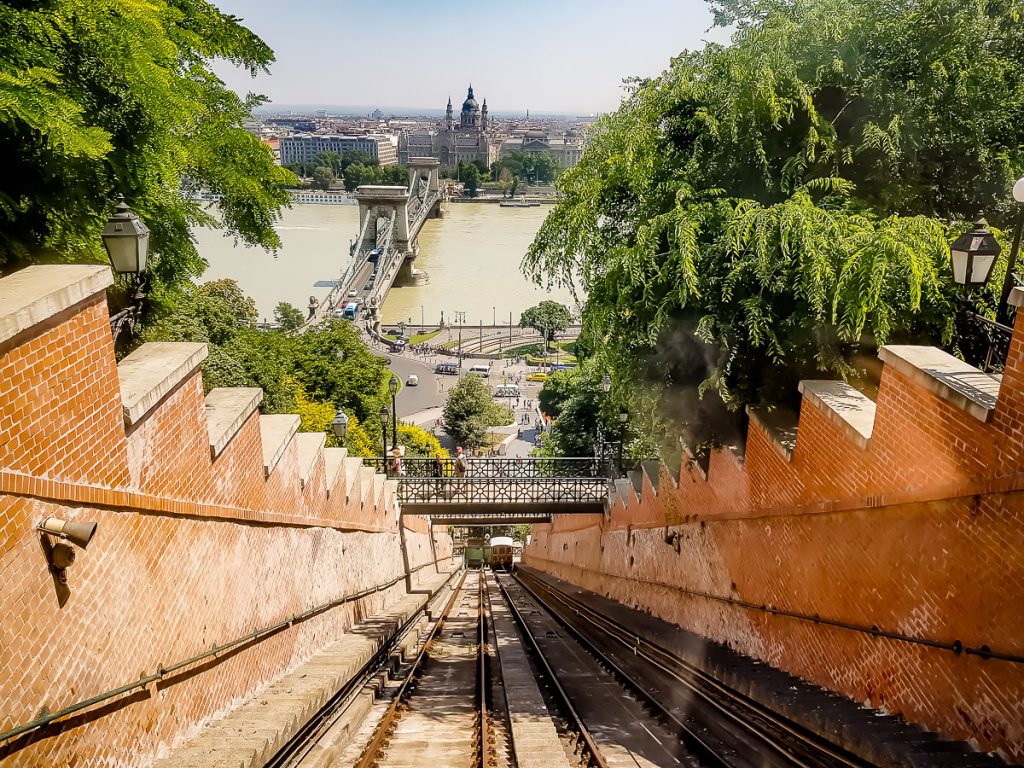
The shortest way to get up to the Castle is by taking the funicular at the base of the hill. That is, if your legs don’t feel like climbing and if you make it within its operating hours – 8:00 a.m. to 10:00 p.m.
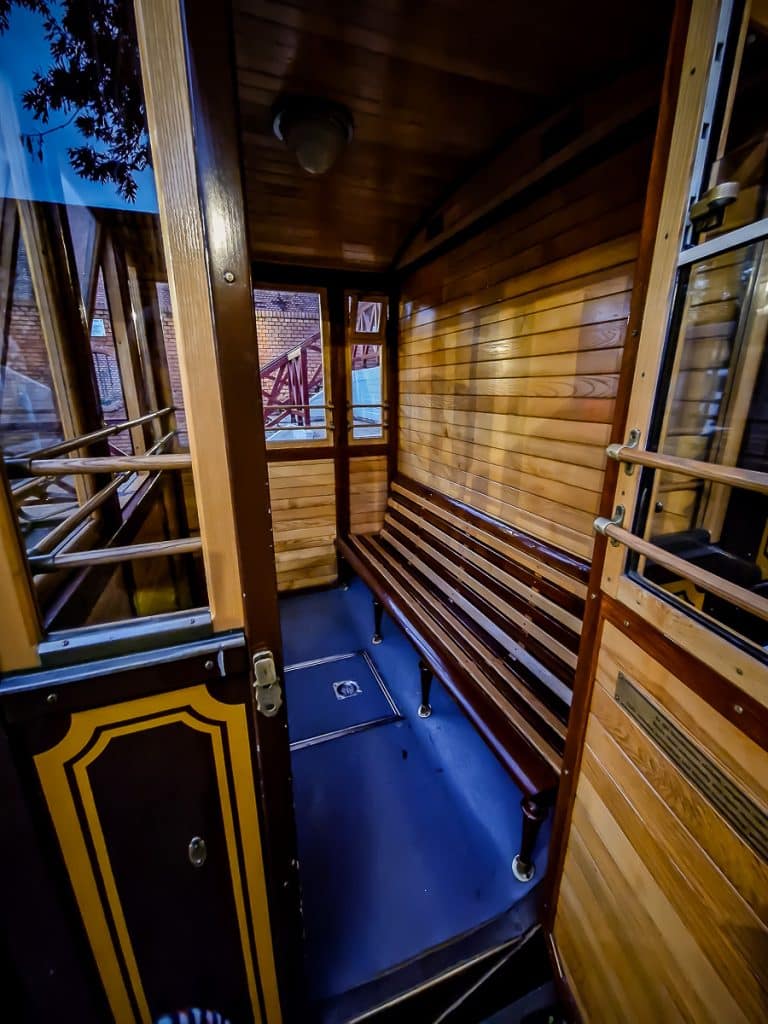
Built in 1870, man, this funicular still does its job well and has long become a tourist attraction, not just a means of transport.
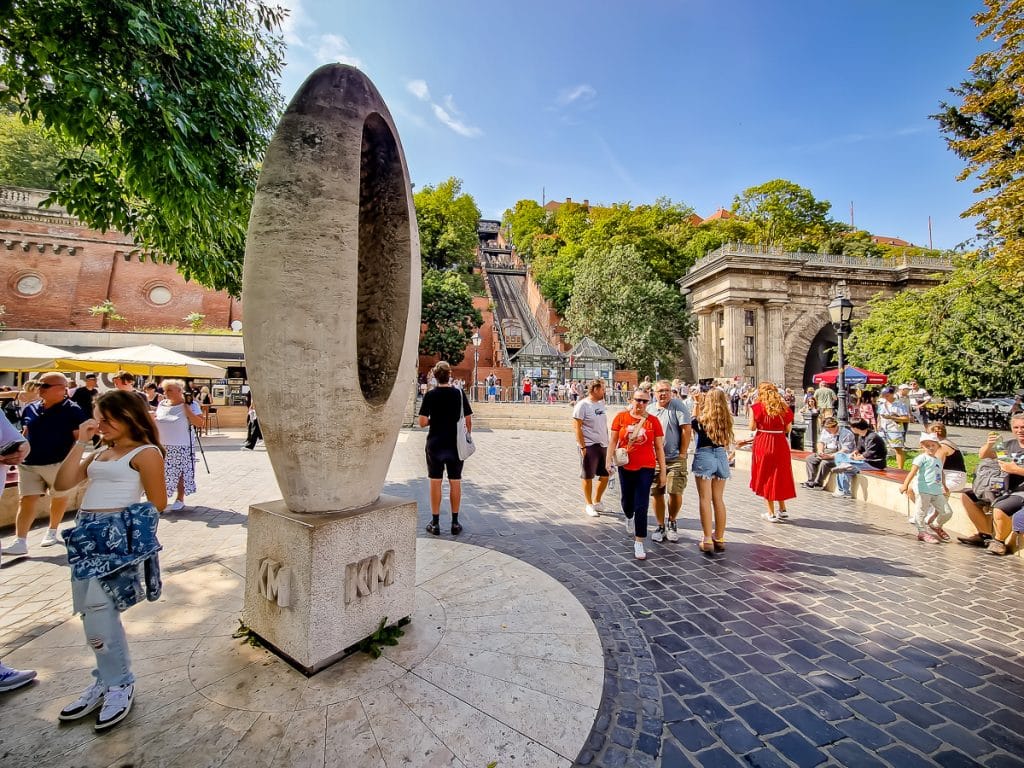
Right before you reach the funicular, you’ll see a stone marking Budapest’s Kilometer Zero.
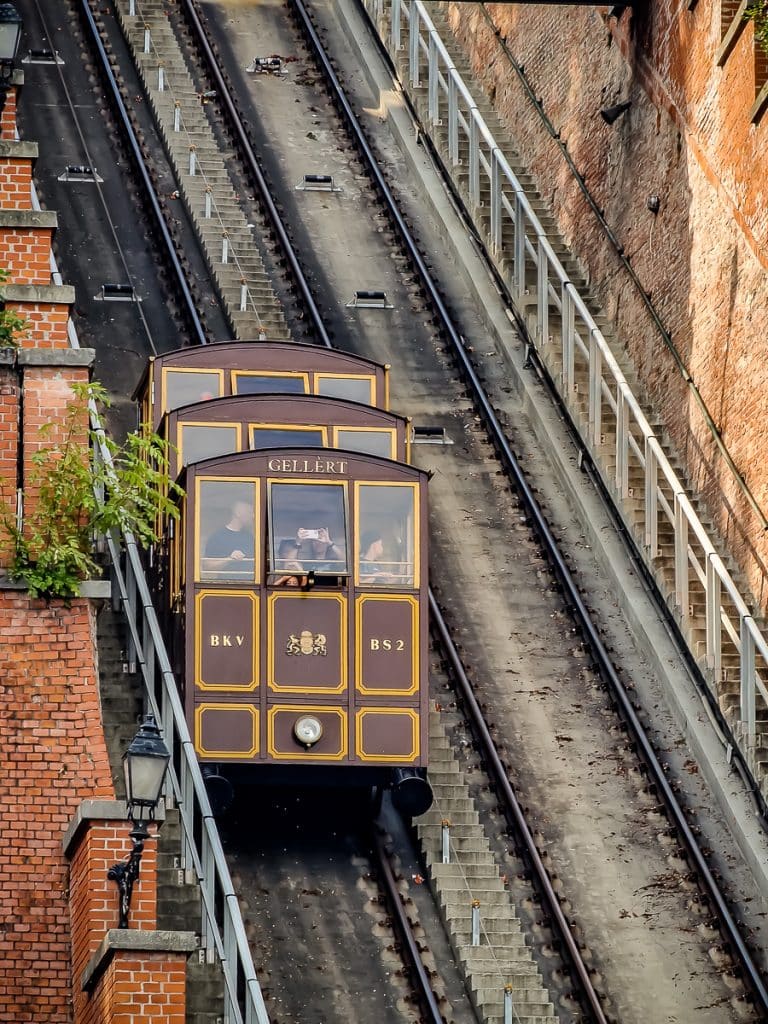
Tip: if you want a good front view of the city while you’re on the funicular, get into the lowest cabin. But don’t expect a panoramic view – not really. It’s more like seeing the city through blinkers 🙂
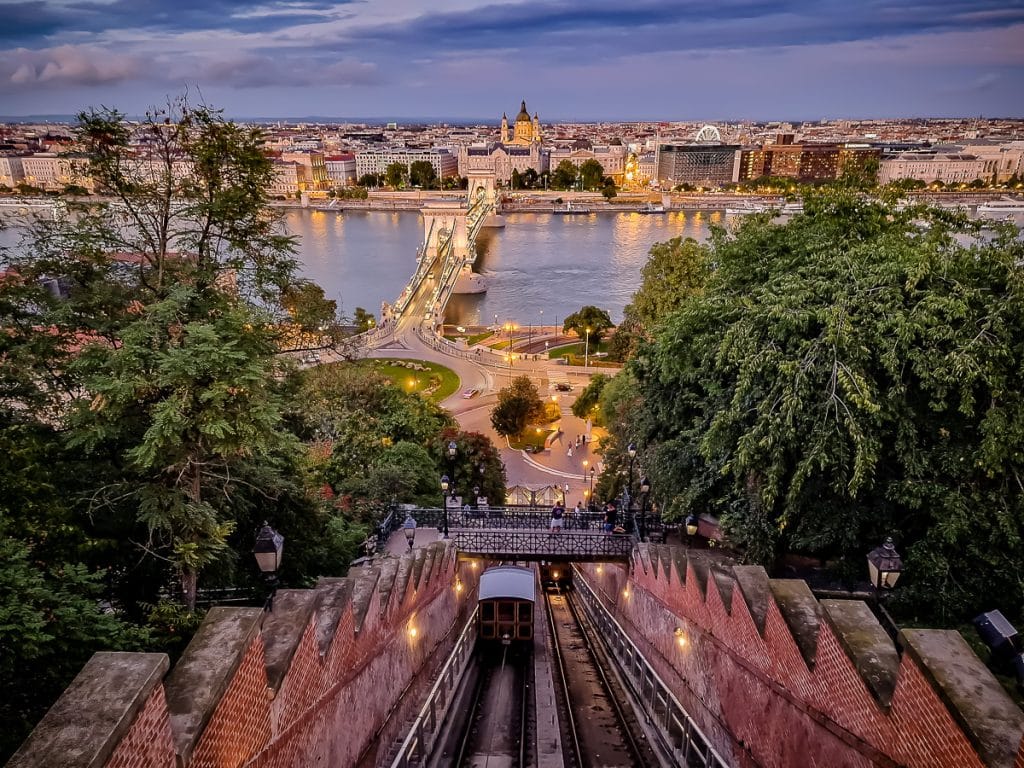
It only takes about three minutes to go up / to go down.
The ticket isn’t exactly cheap: it costs 5,000 forints round trip (around 13 euros – 2025 price). And unfortunately, even if you plan to go up by funicular and walk down – which only takes about 5-7 minutes – you still have to pay for a full ticket.
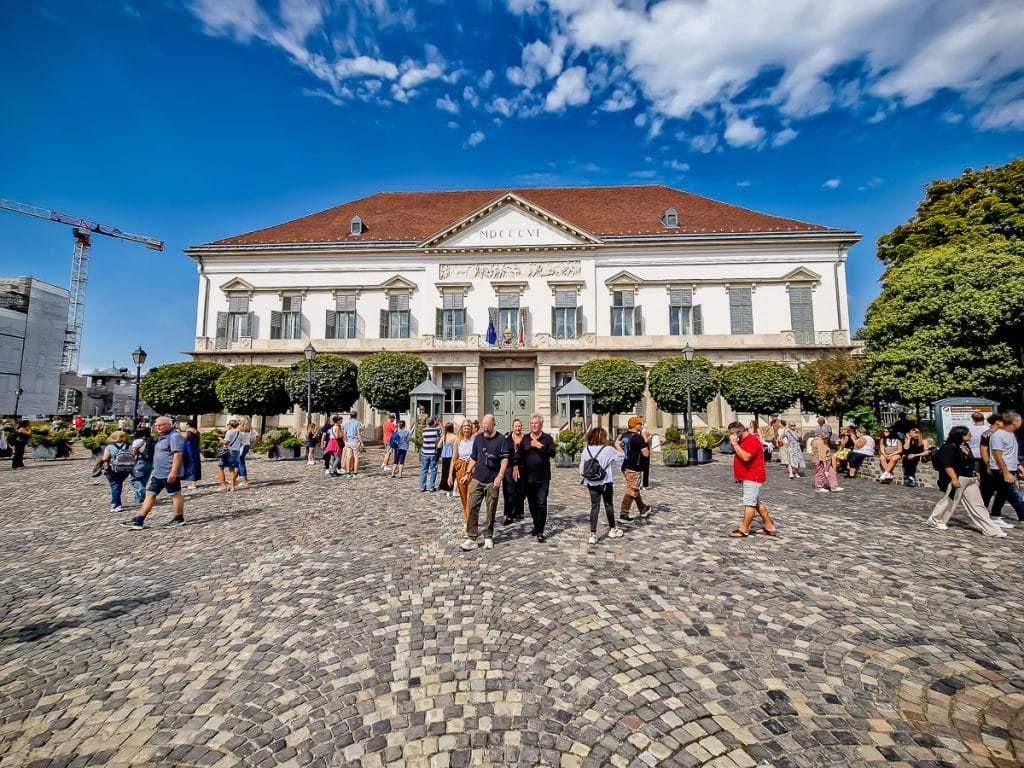
Right next to the funicular you’ll find Sándor Palace, the official residence of the President of Hungary.
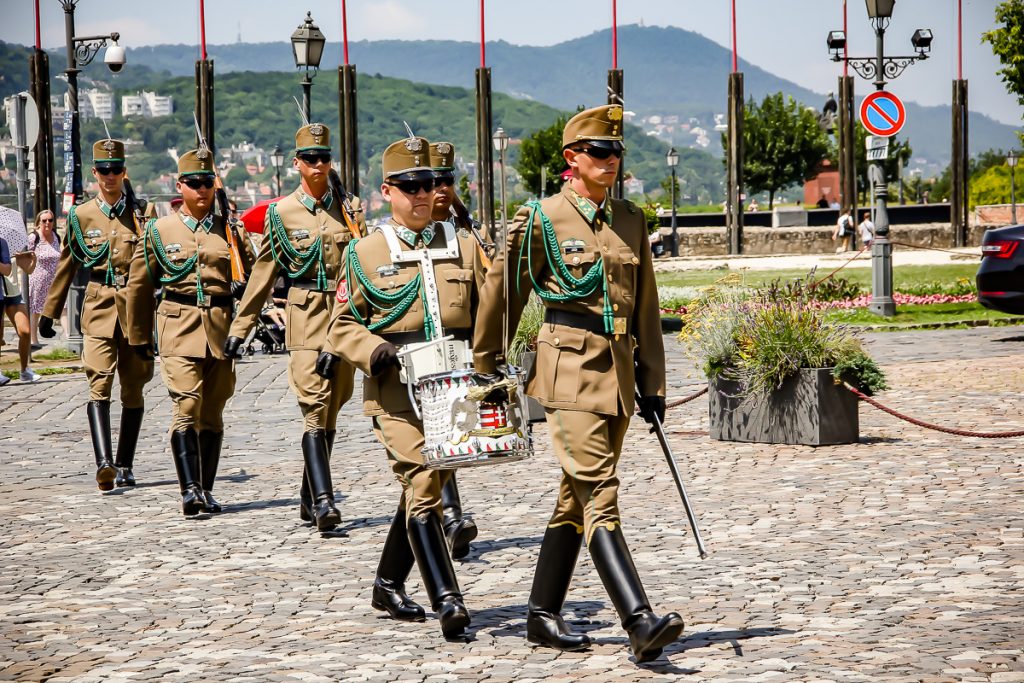
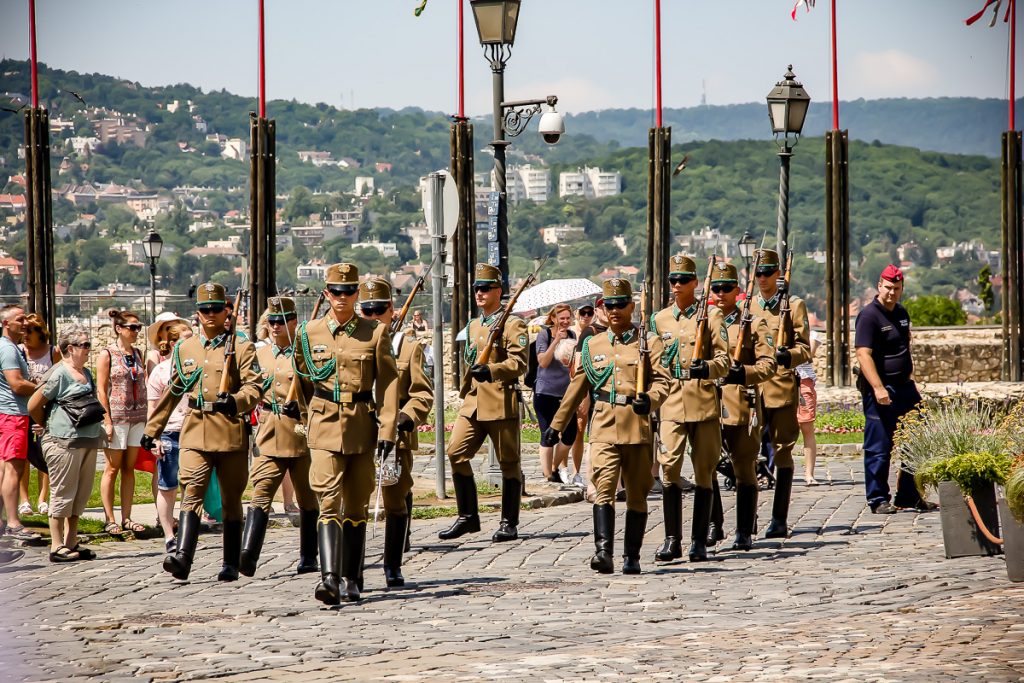
If you’re lucky (or know the schedule), you might catch the Changing of the Presidential Guard.
From here, the view over Budapest is stunning! I could have stayed there for hours, especially in the evening.
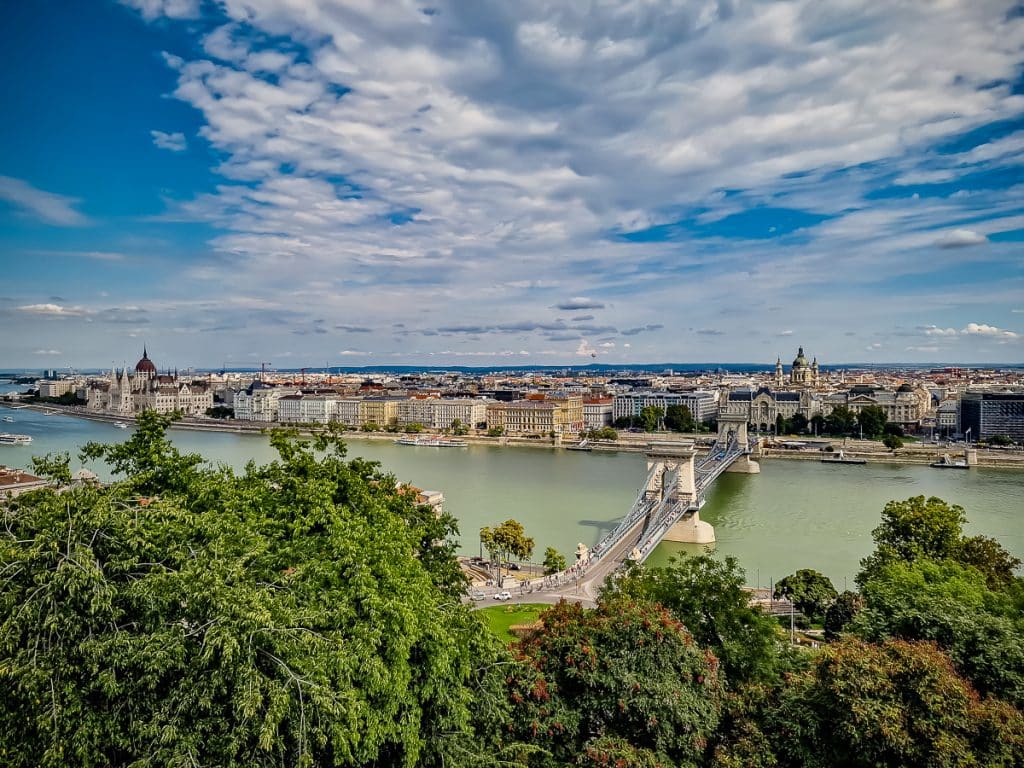
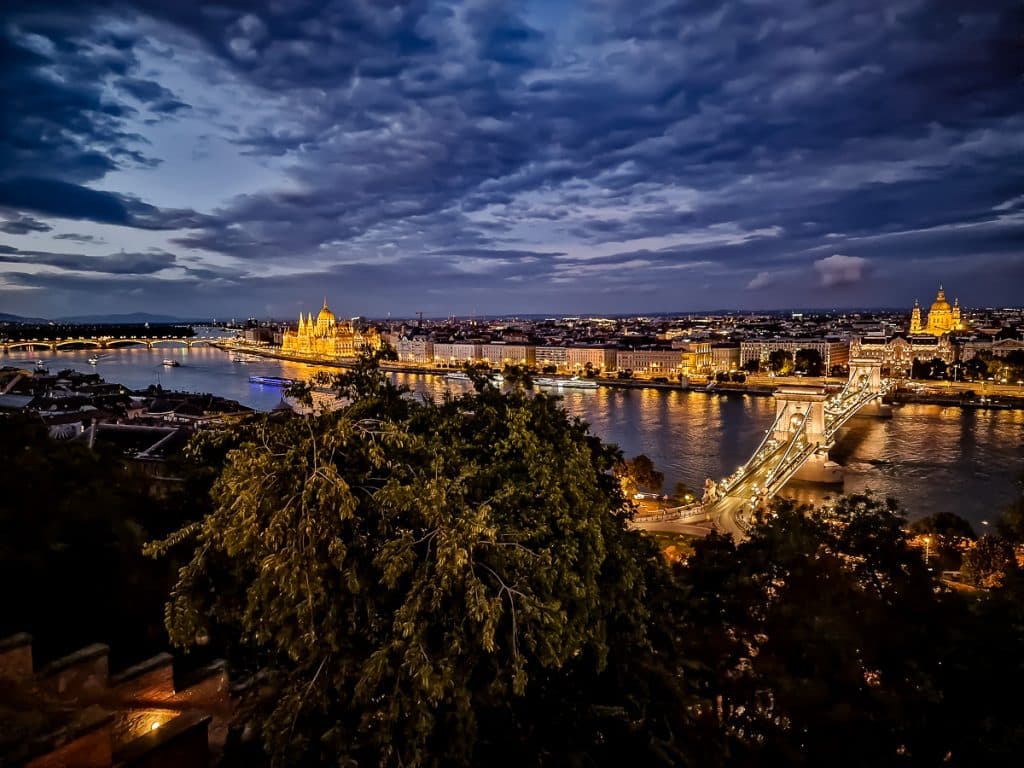
If you’re not in the mood for visiting the Castle exhibitions, you can just stroll around on foot – you’ll soon reach a really lovely area.
FISHERMAN’S BASTION
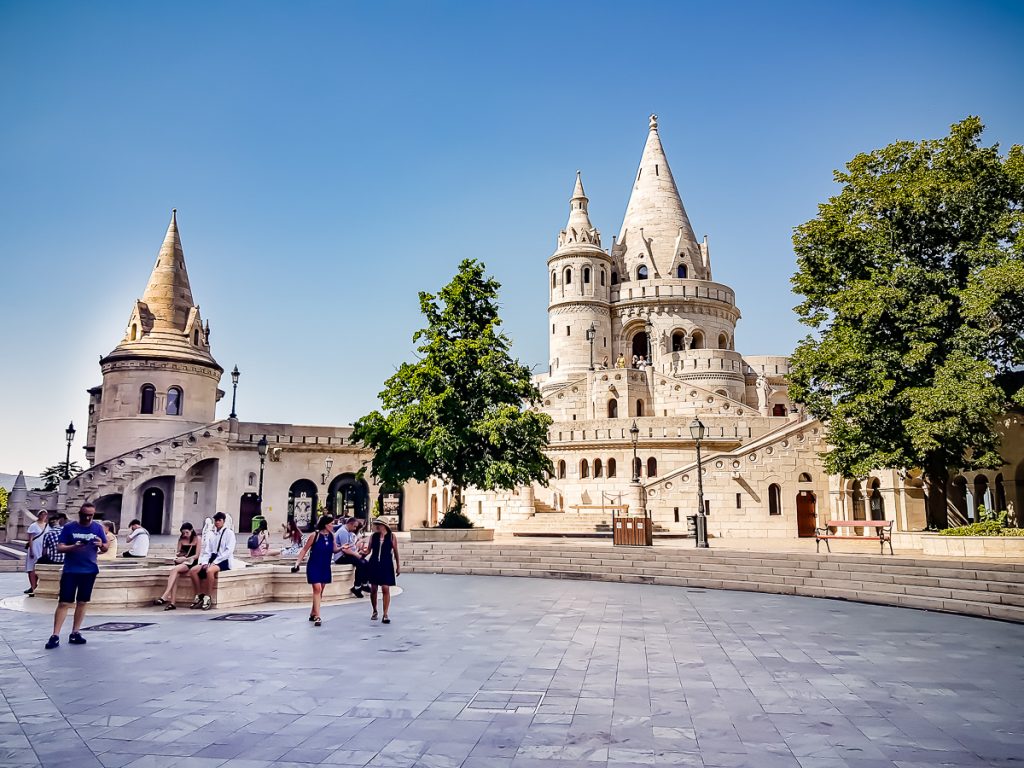
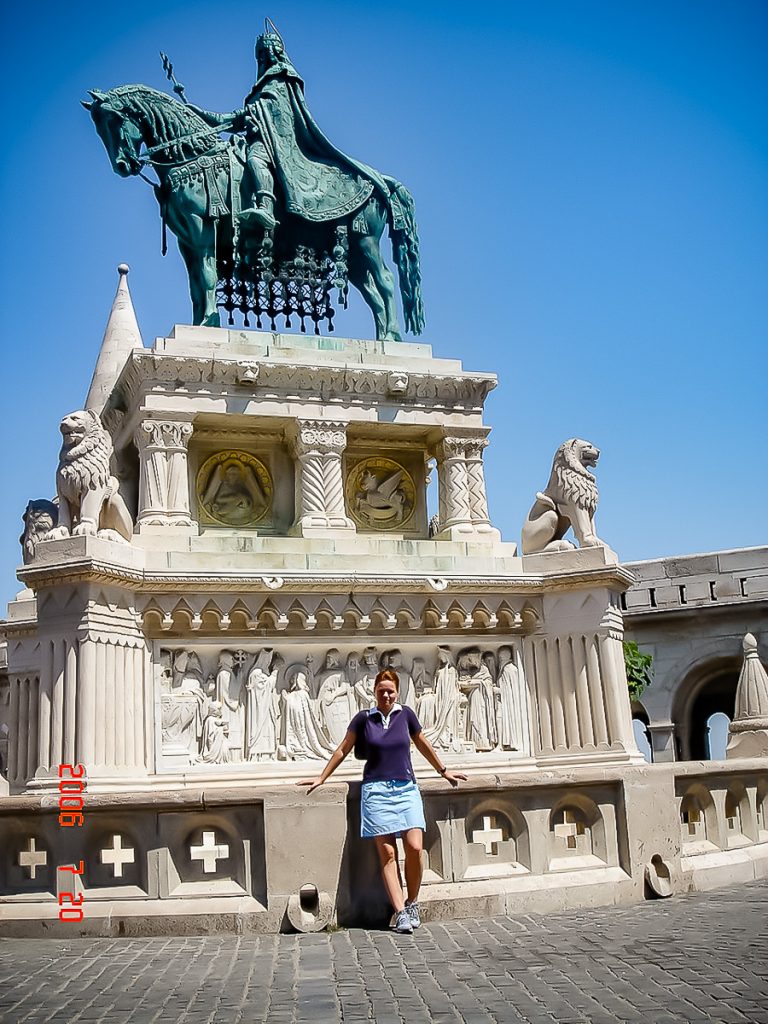
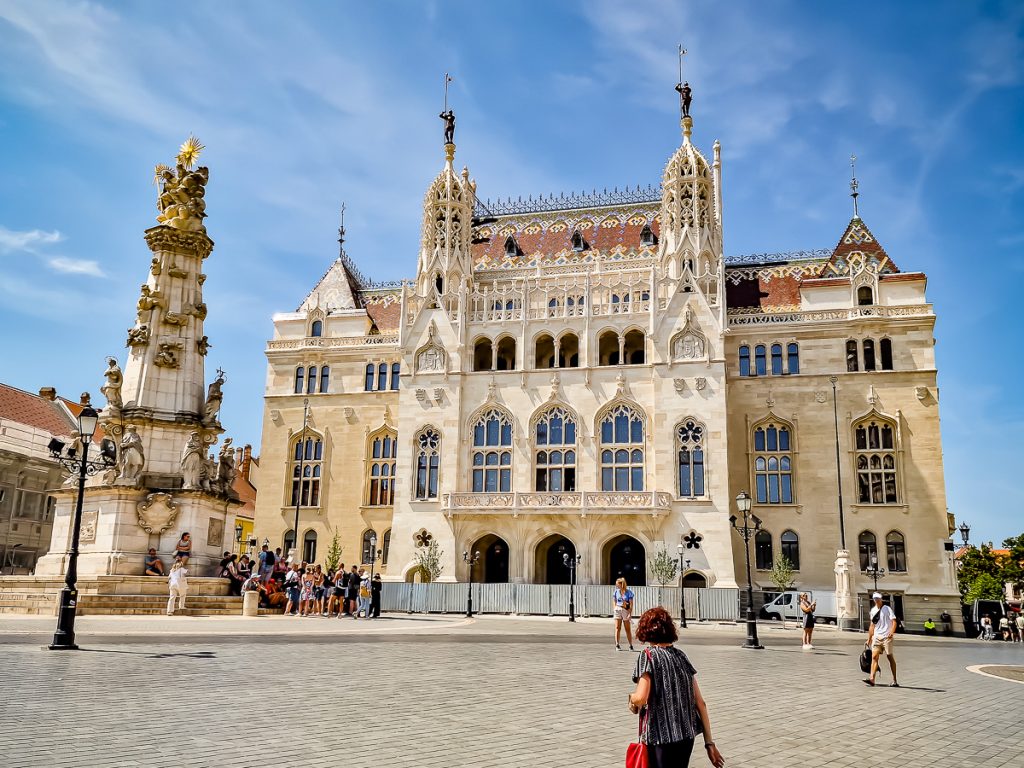
Whether you walk up (from the metro, you climb the hill), take a public bus, or a taxi, it’s worth spending a few hours here. There’s plenty to do. You can visit, take photos, eat, and, of course, buy souvenirs.
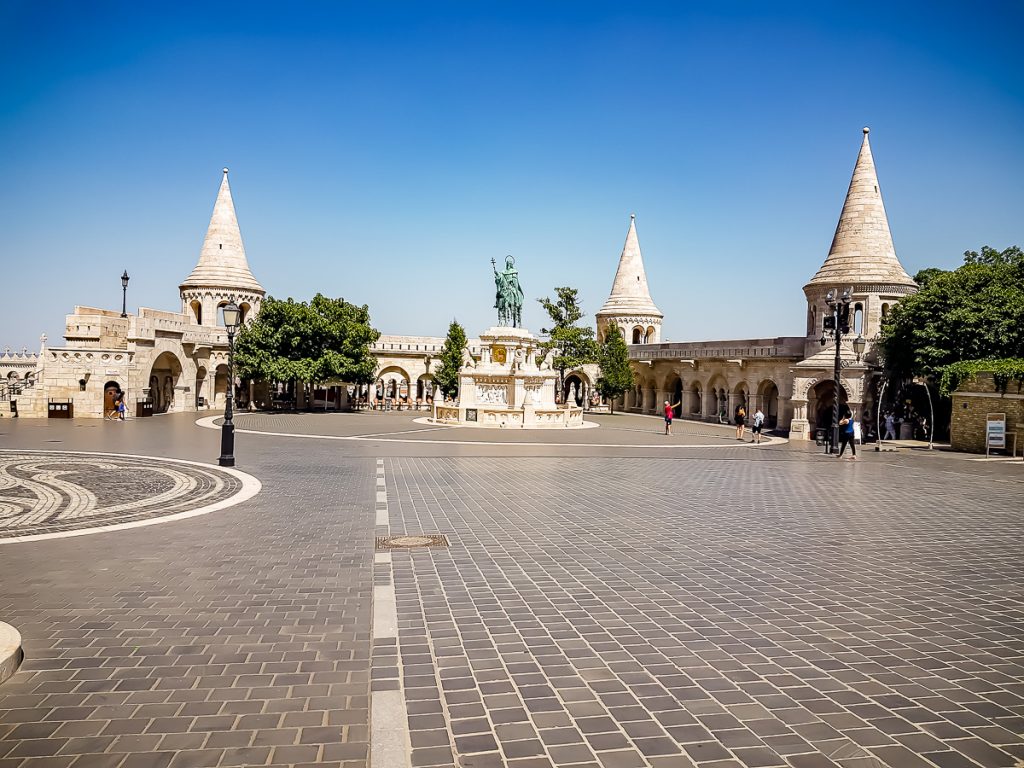
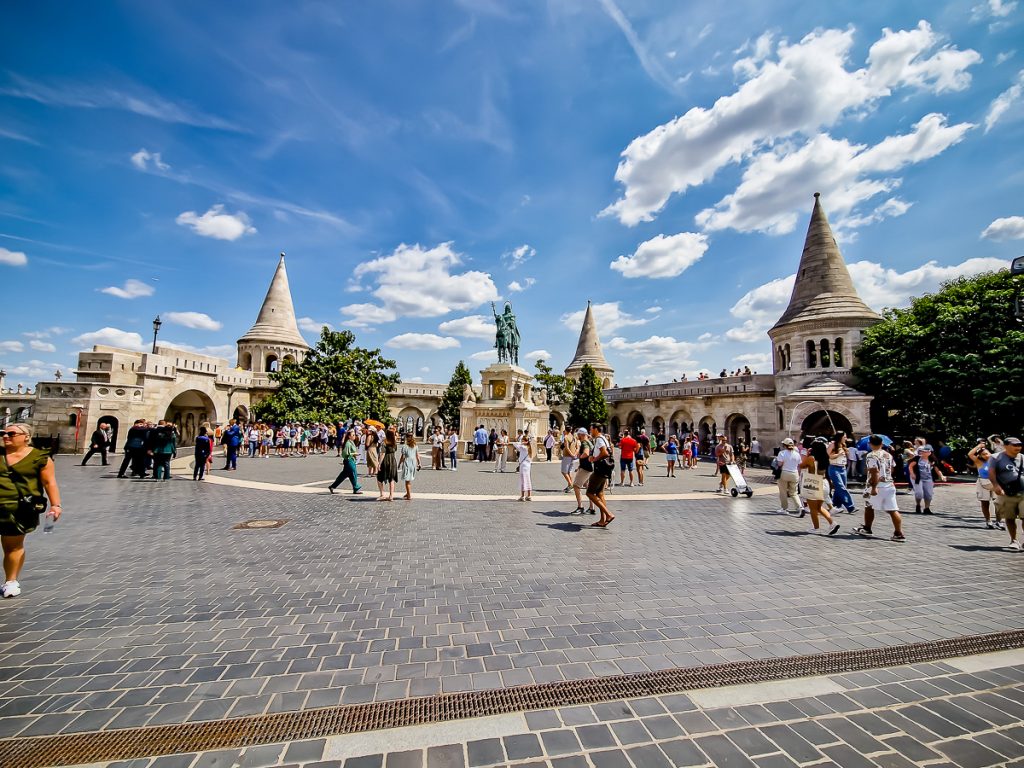
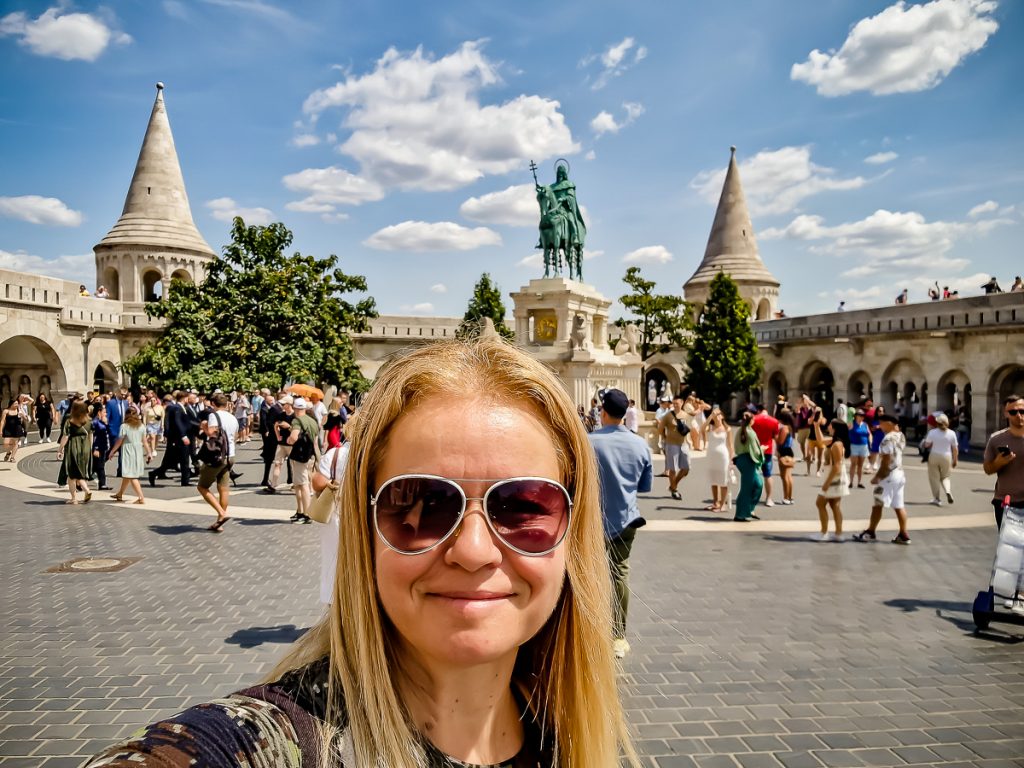
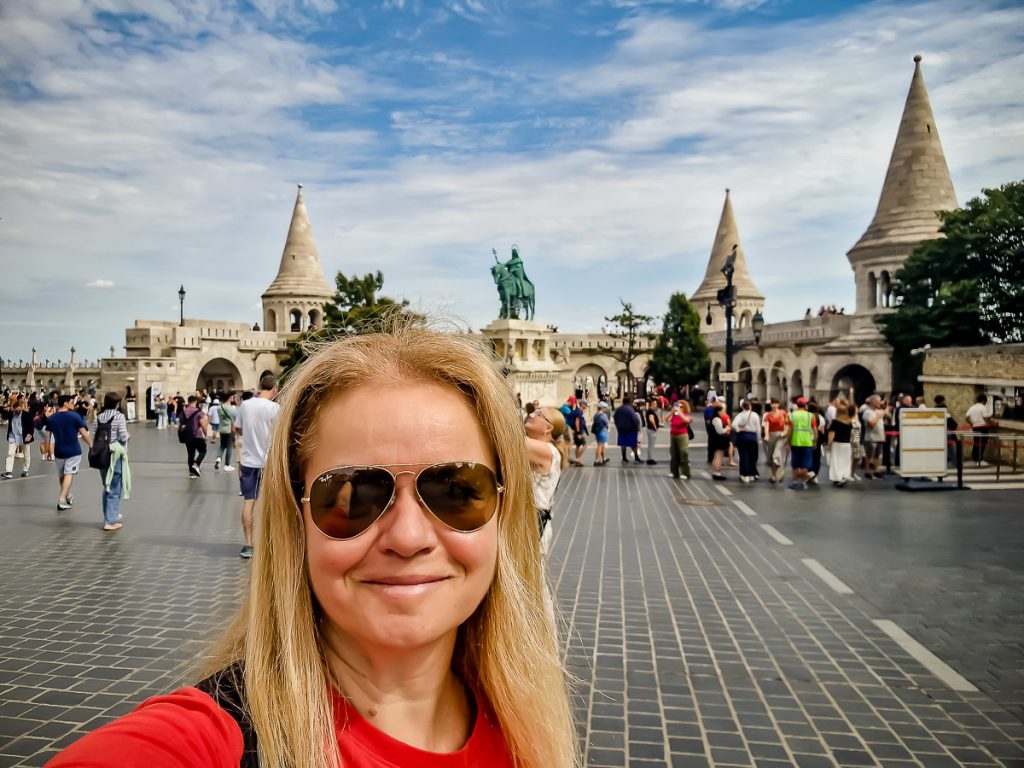
Fisherman’s Bastion is an impressive structure. It has 7 towers, representing the 7 Hungarian tribes that first arrived in the Pannonian Plain.
But what about the fishermen? Where are they?…
Apparently, the name comes from the Middle Ages, when the city walls were defended by fishermen. Anyway, with a loooong fishing rod, I could almost catch a fish from the Danube.
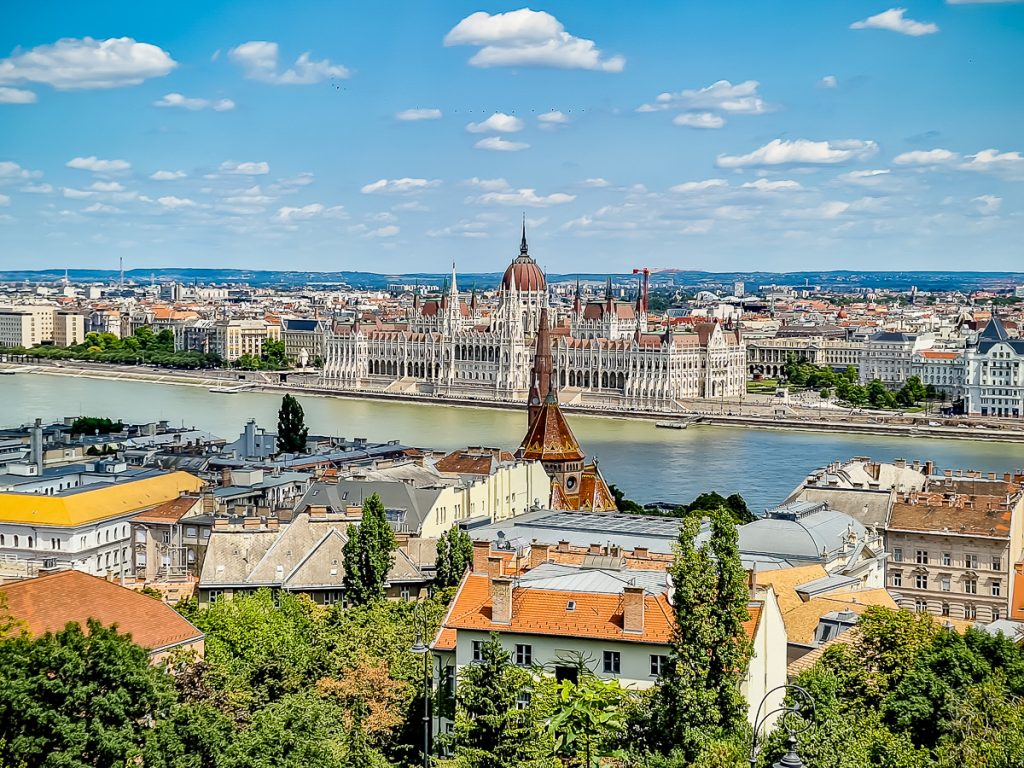
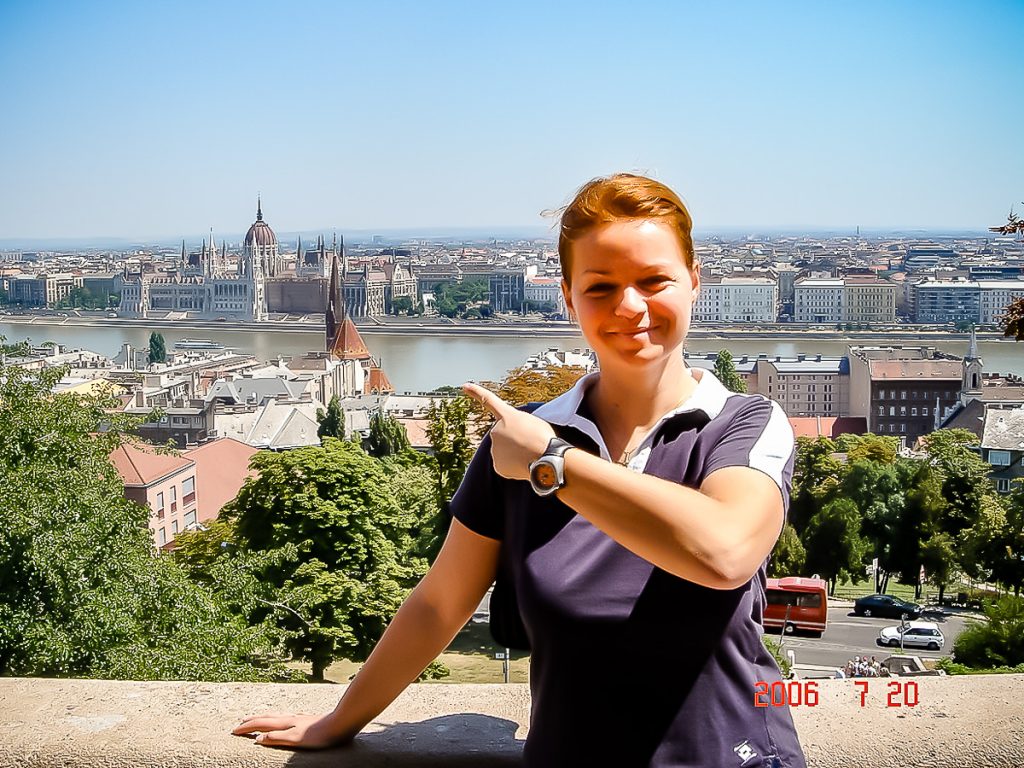
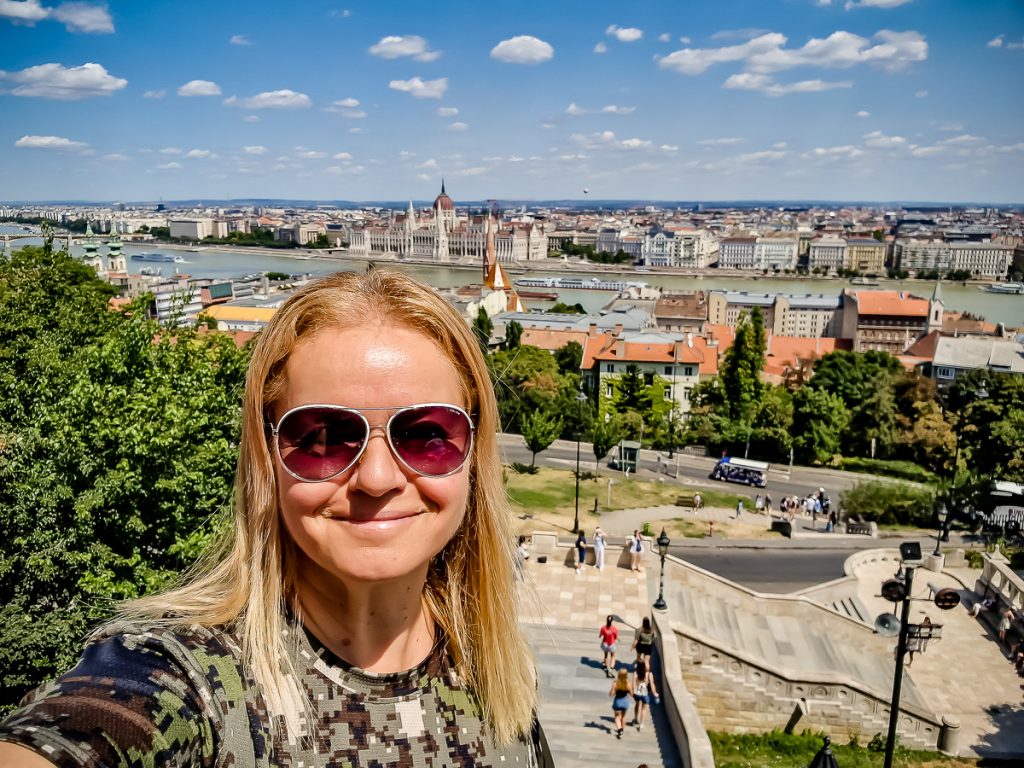
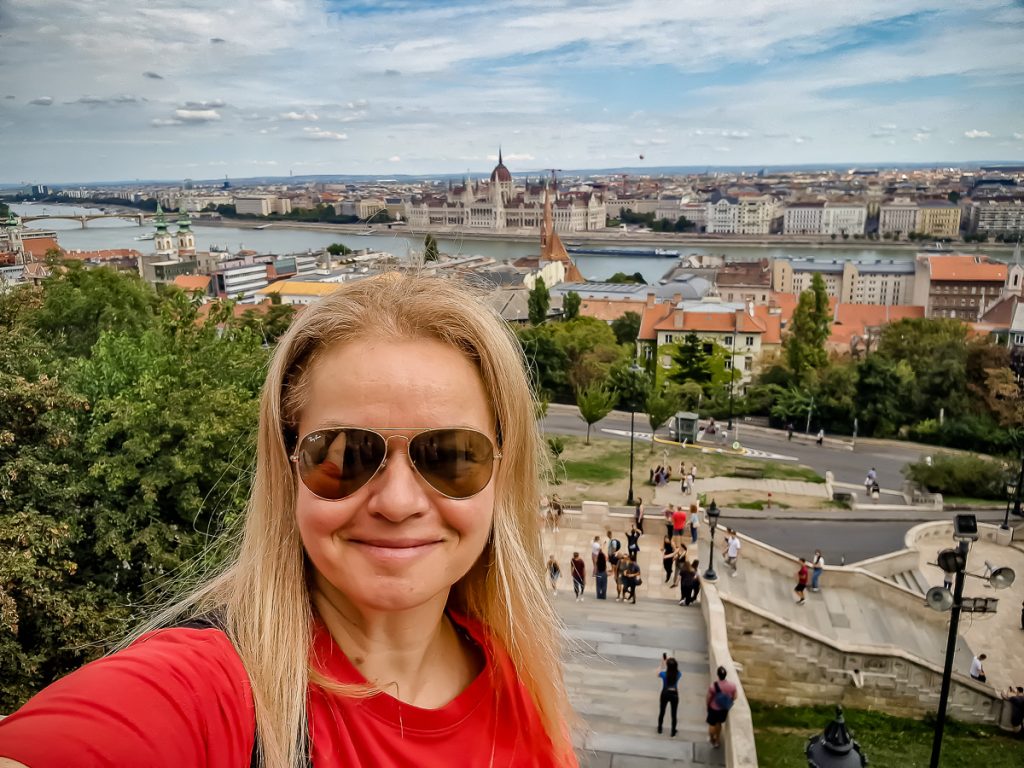
Beyond the architecture, the beautiful square, the shops, and terraces, this place attracts those who want to take photos of Budapest from above. The truth is, the view is really cool, and the Parliament building is perfectly framed for a photo from here!
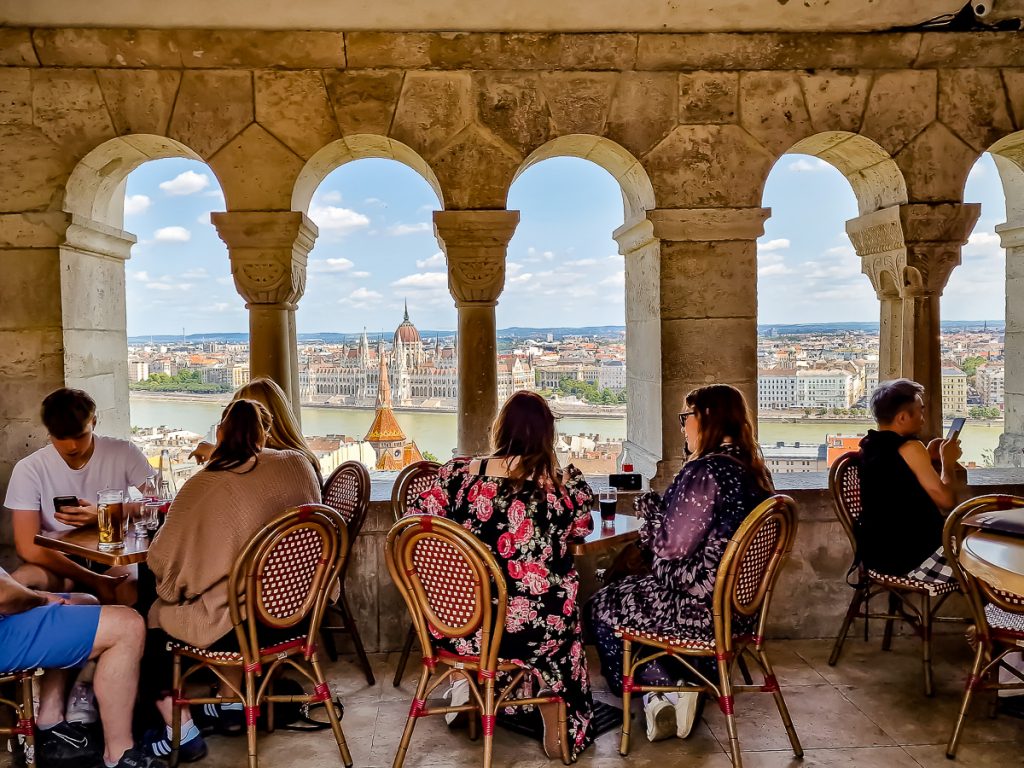
There’s a covered terrace with a view of the Parliament and the Danube – Panoramia. It’s a fight for seats, especially the ones on the edge. You can sit nicely in the shade, drink a beer, a lemonade, eat a salad, a burger, and enjoy the scenery.
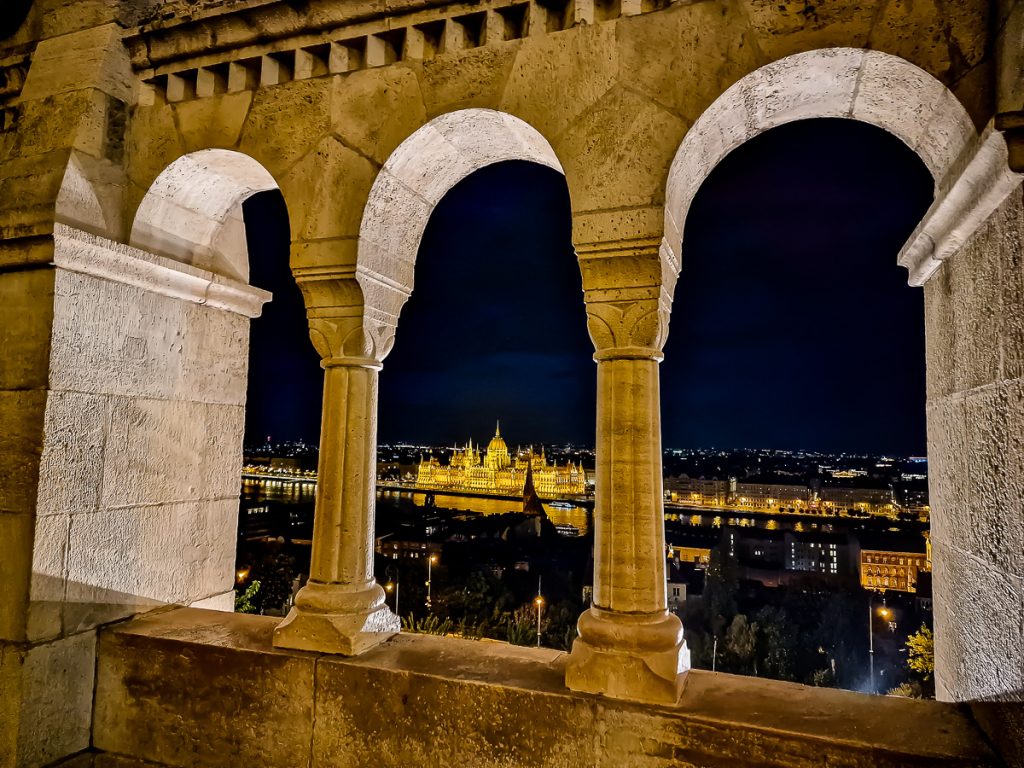
But you can still enjoy the view without spending a dime – just move a bit to the left. And in the evening, it’s nothing like the daytime rush, when everyone crowds under the arches to take pictures.
MATTHIAS CHURCH
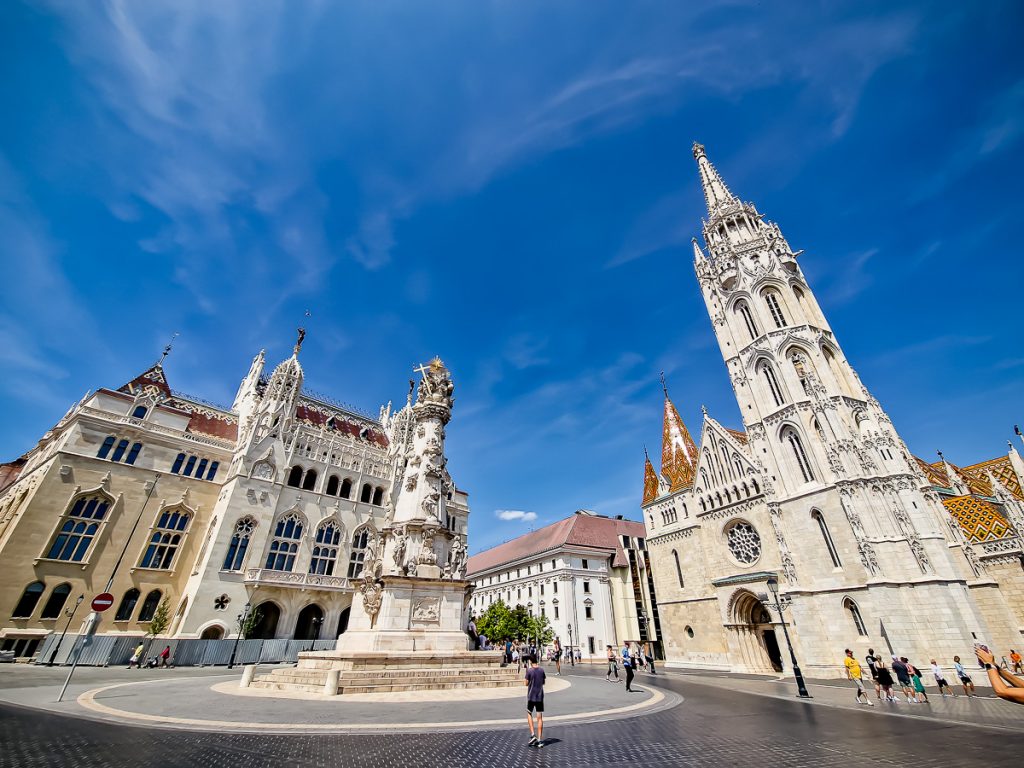
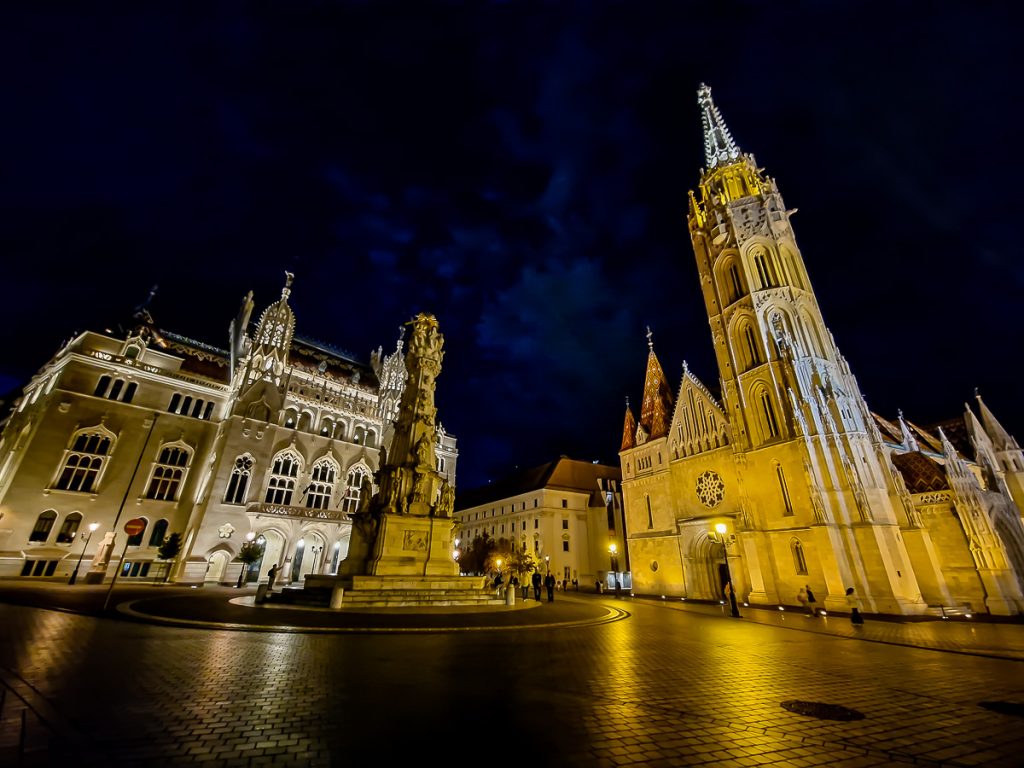
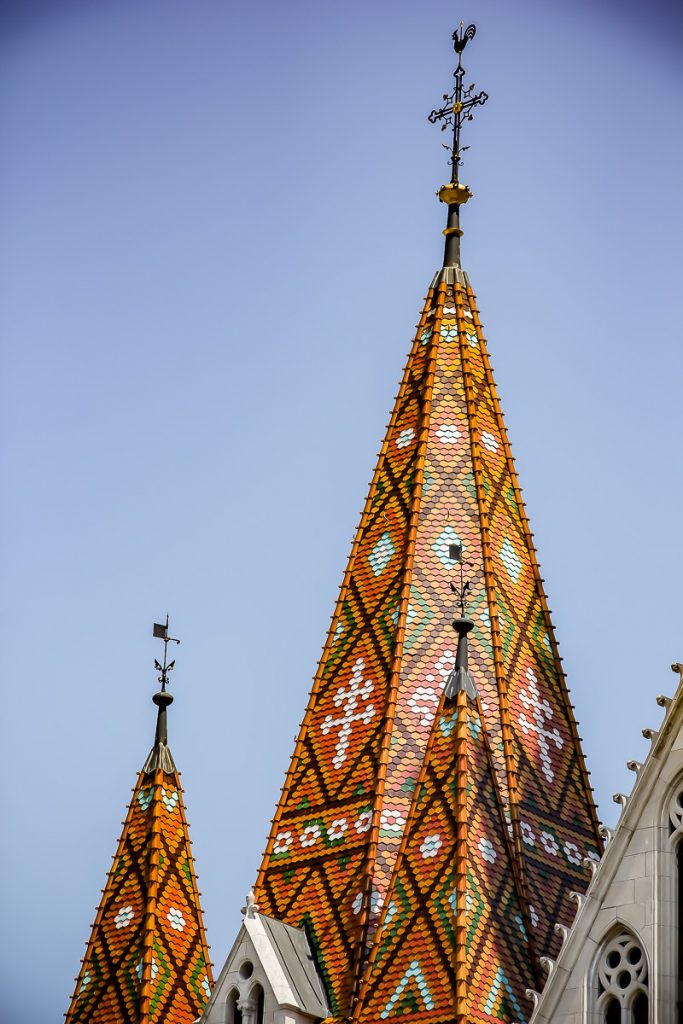
Matthias Church stands proudly on this plateau, with its distinctive architecture and colorful tiles that make you envious: these guys really have all their tiles in place!
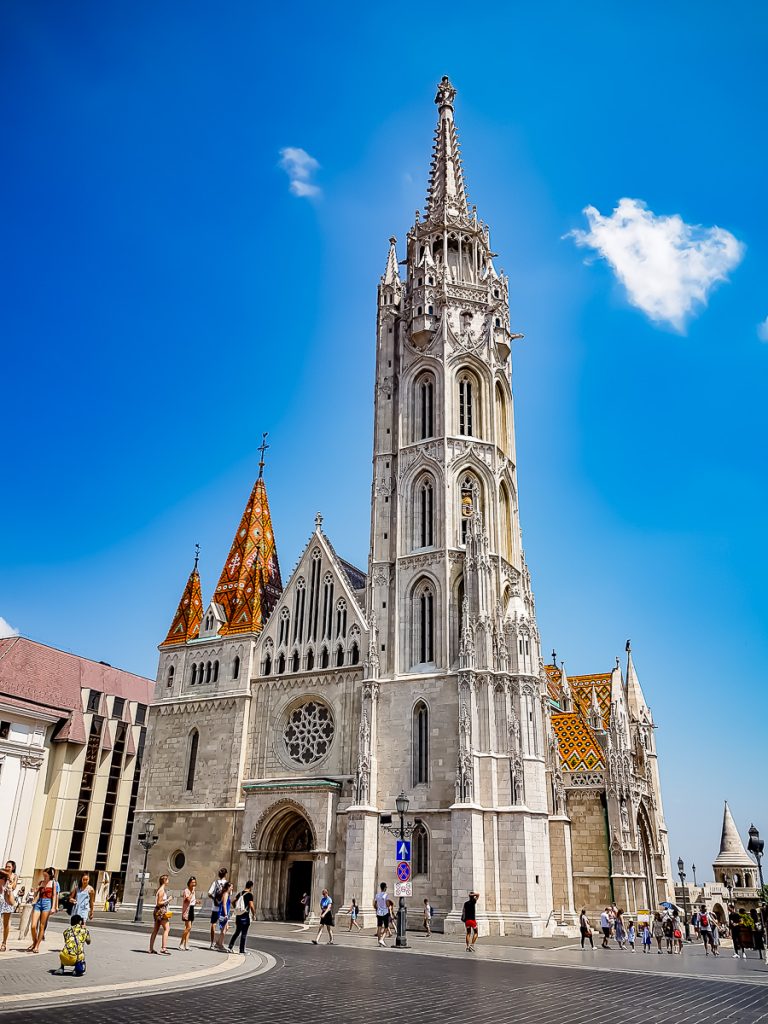
Here, right in this church, the coronation ceremonies of the most important kings took place, including Franz Joseph I and Queen Elisabeth (Sissi).
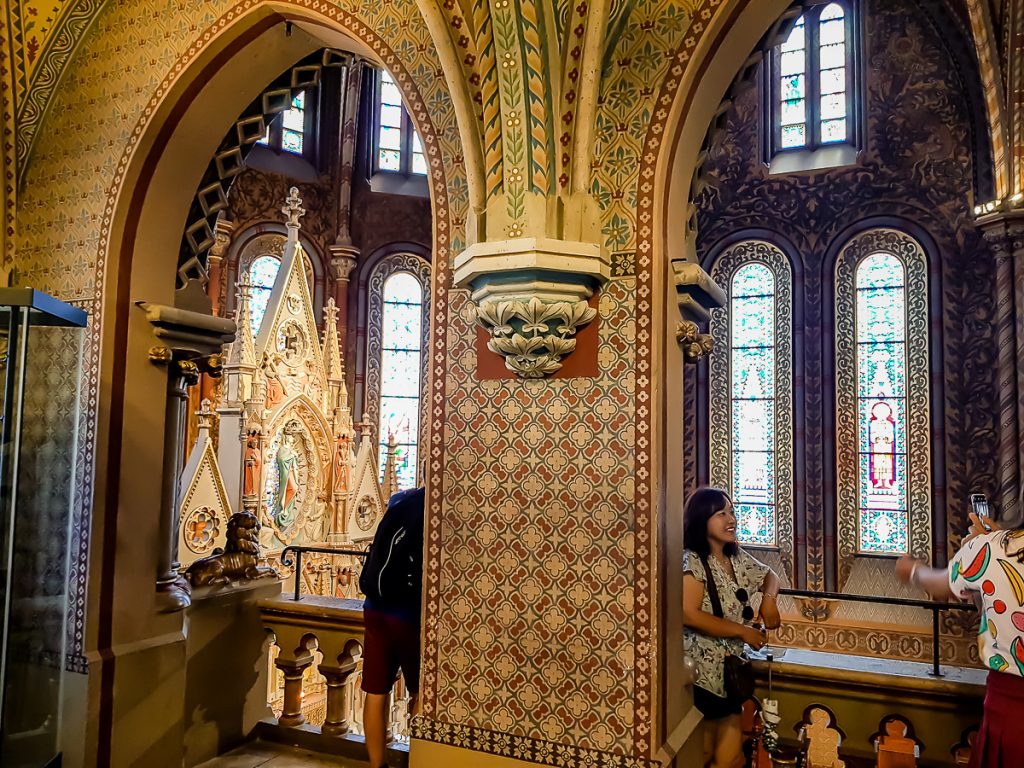
If you want to enter, it costs about 8 euros. But there are discounts for certain categories.
HOUDINI
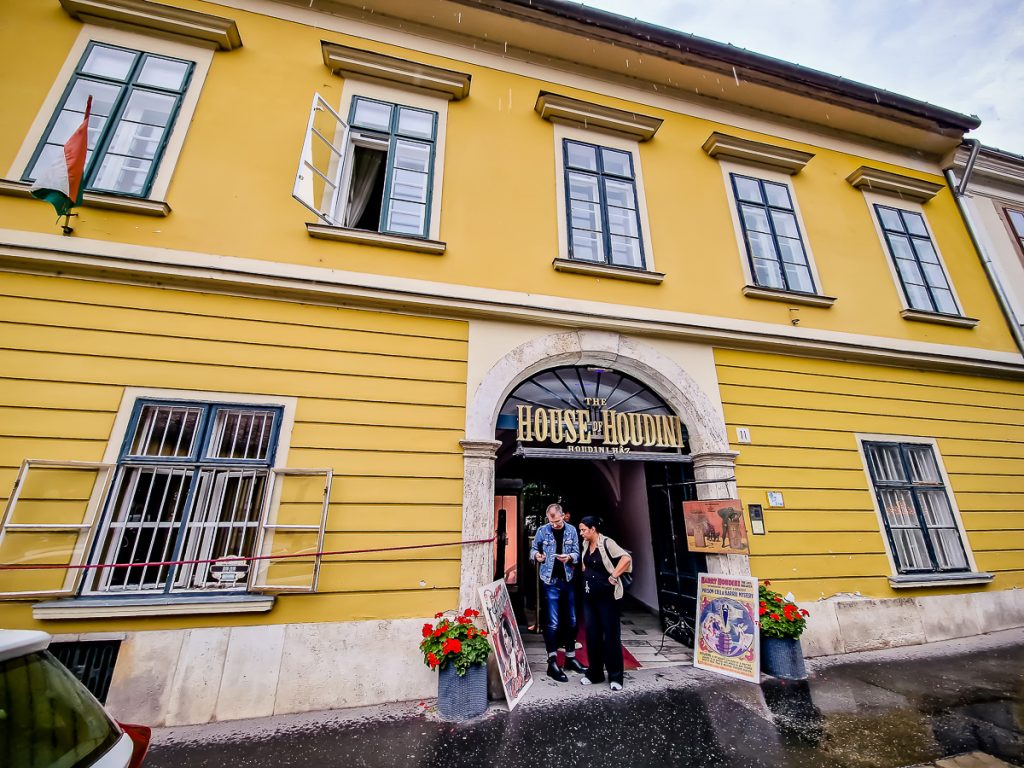
Just a few meters from the Fisherman’s Bastion, you’ll find the House of Houdini. Well, it wasn’t actually his house, but it sounds good for tourists…
It’s a museum opened in 2016, showcasing all kinds of authentic items related to Harry Houdini, the famous Hungarian-American illusionist and escapologist (born in Budapest, who emigrated to the U.S. with his parents as a child).
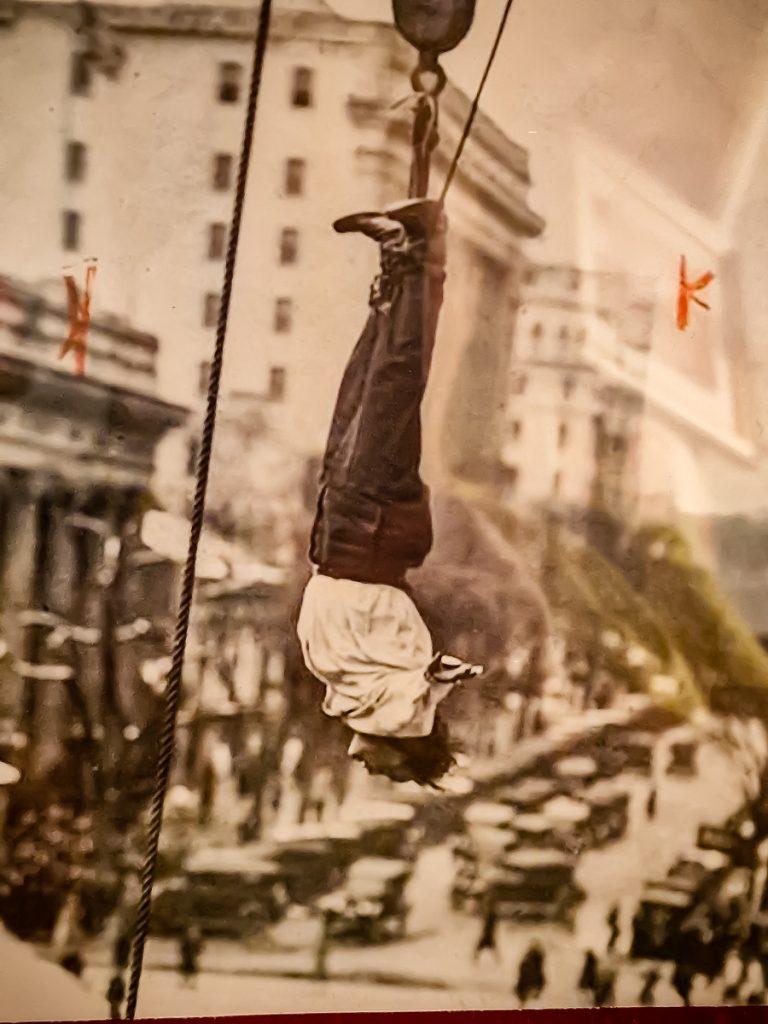
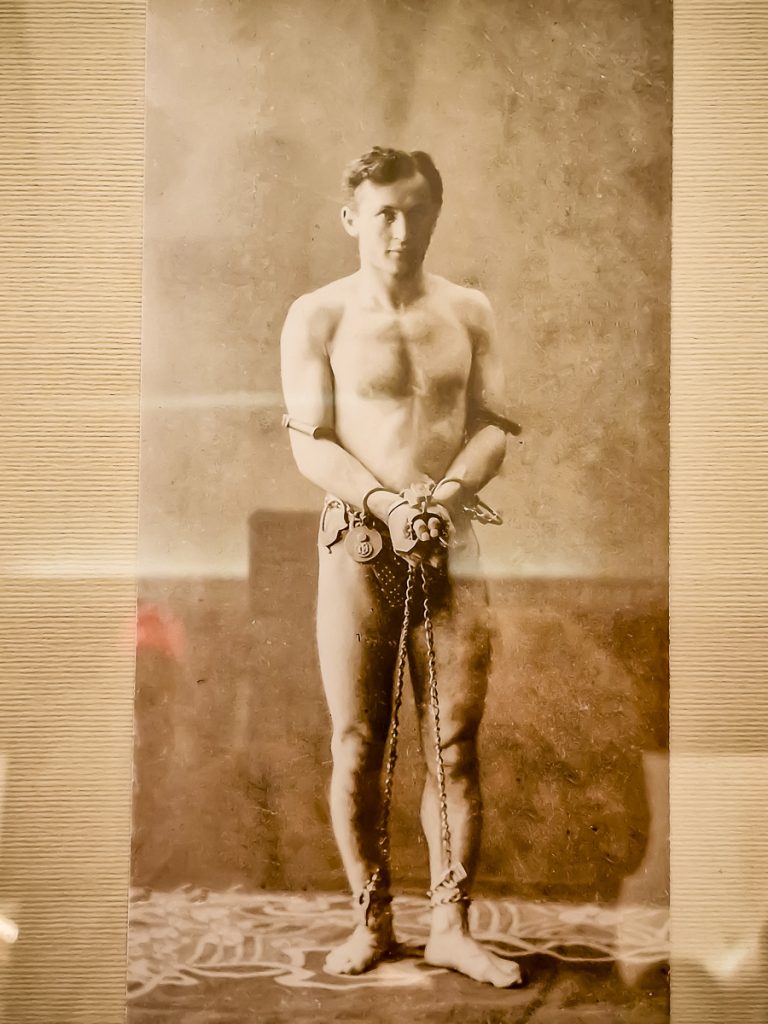
Houdini became famous for his spectacular escape acts and is considered one of the most important figures in the history of magic!
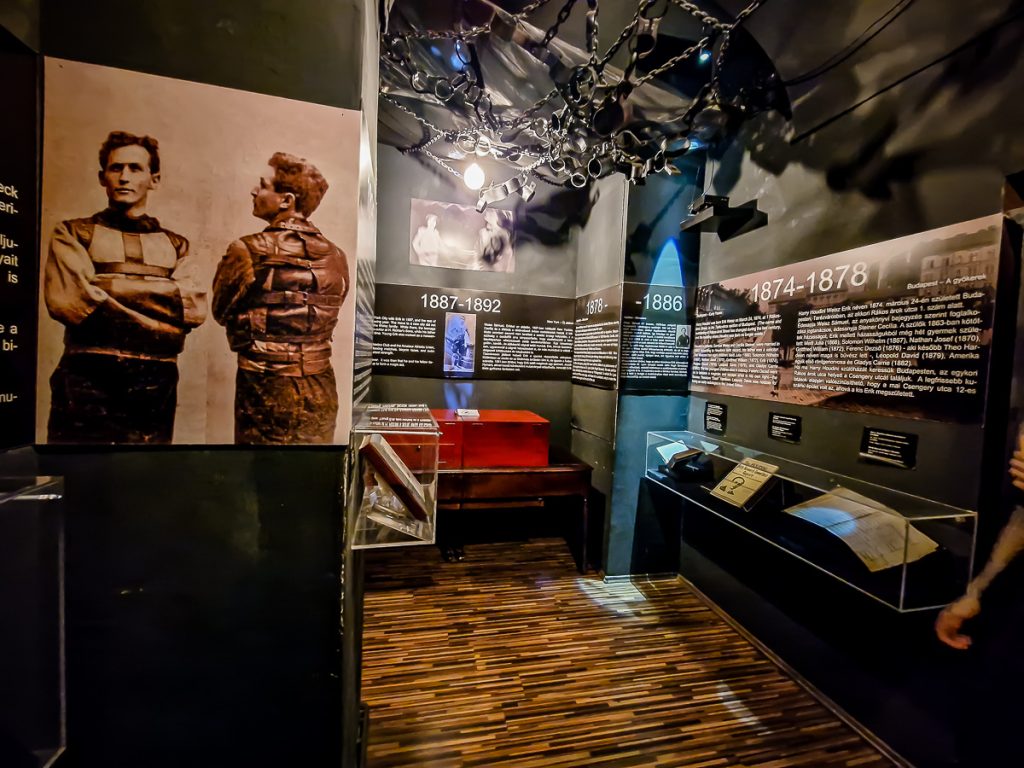
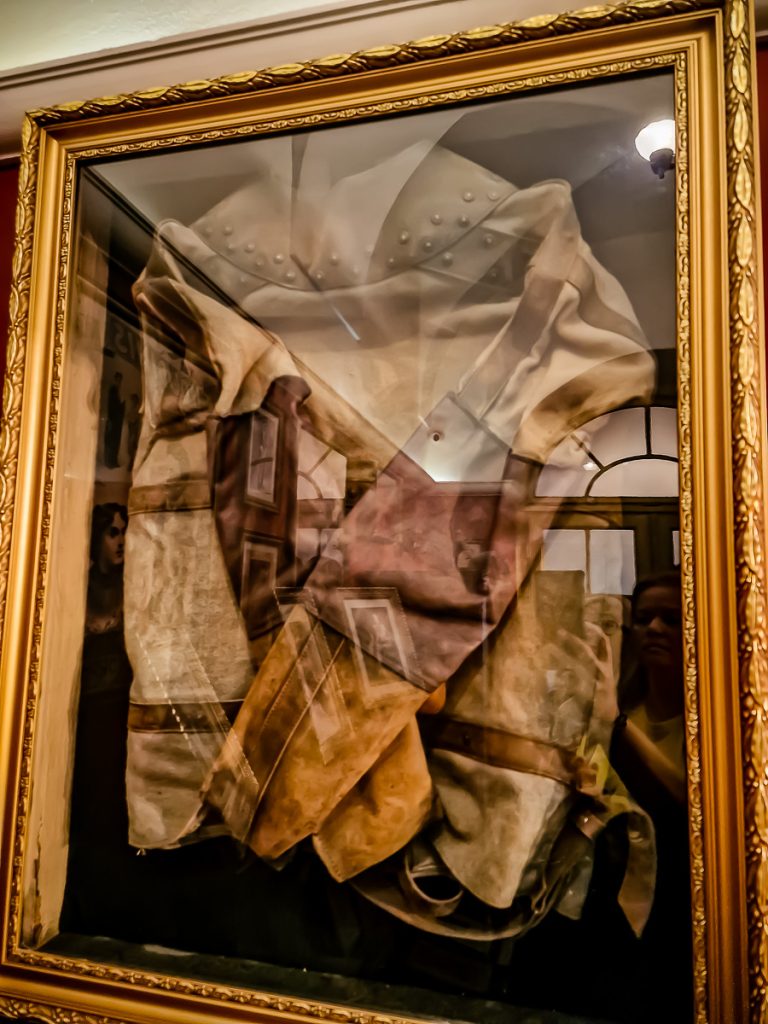
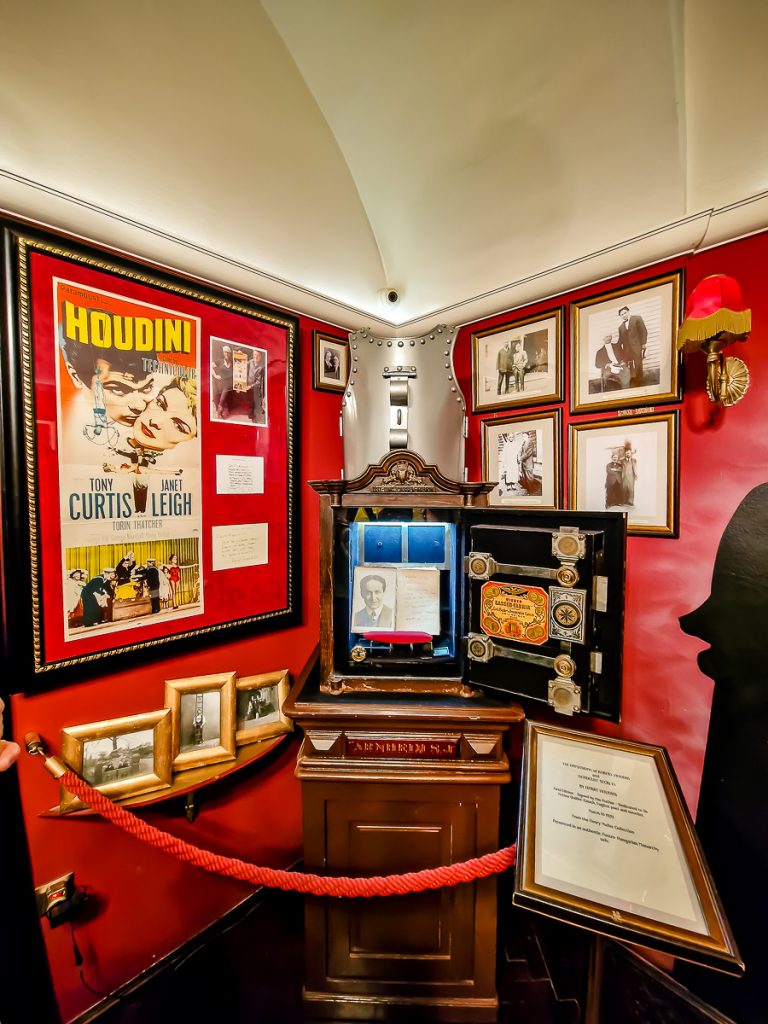
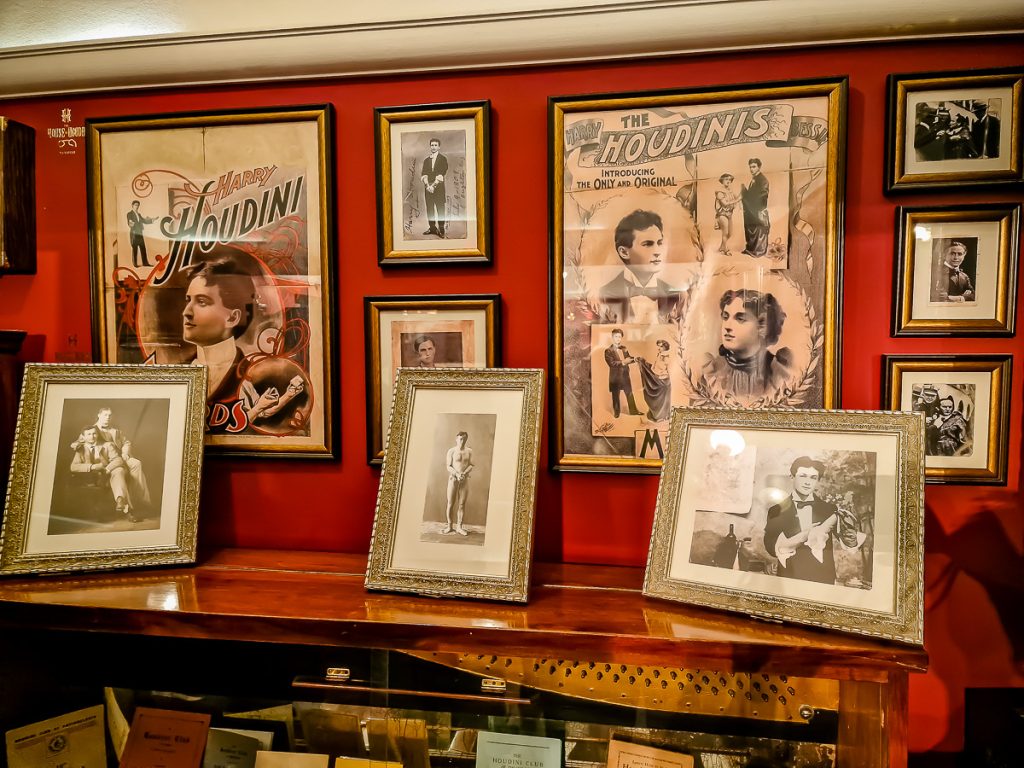
Here you can see a wide range of genuine Houdini-related items: personal letters, documents, stage props, and more.
I read that the poster from the movie where Tony Curtis played Houdini was actually donated to the museum by Curtis’s daughter – Jamie Lee Curtis. Pretty cool, right?
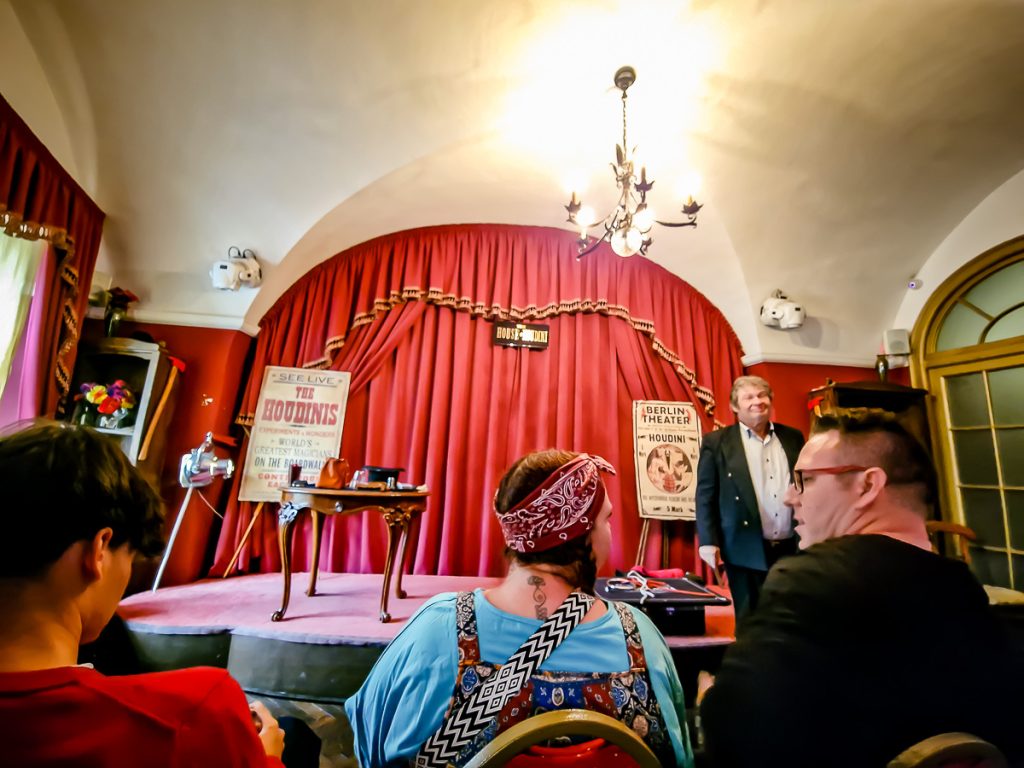
Before entering the museum, guess what? You get to attend a magic show!
It’s included in the ticket price – 13 euros (you can pay in euros right at the entrance if you haven’t booked online).
There were just seven of us at that hour, and a gentleman did his best to impress us with some fun tricks.
THERMAL BATHS
Budapest is famous for its spas, with 118 thermal springs!
I’ve never actually gone to soak in them. But I was impressed when I saw online how two of them look, built at the beginning of the 20th century: Gellért and Széchenyi. It’s like you’re going to a museum, not a bath…
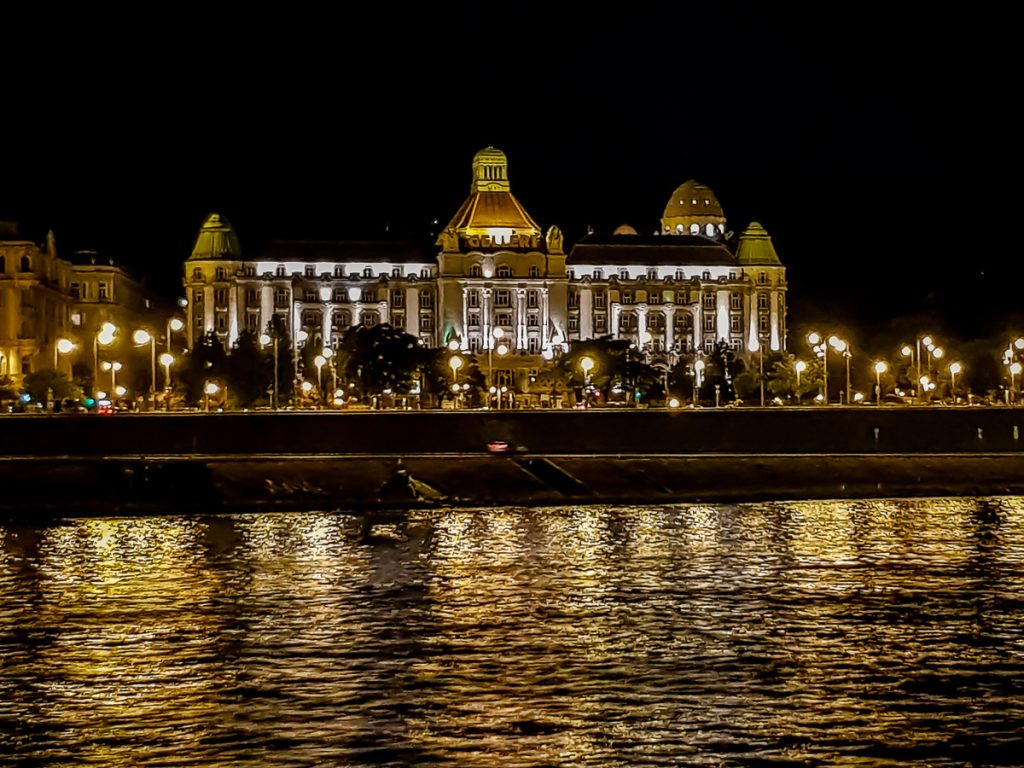
Gellért Baths, built in Art Nouveau style along with an adjacent hotel, are right on the banks of the Danube, so I took advantage and photographed them from the boat during a river cruise (about 12 euros for a 50-minute tour)
We have baths too, so why praise others’, you might say. Well, come and see the famous Herculane Baths here.
I read that Gellért is the site of the first wave pool in the world!
We also had one, at the Lido Hotel in Bucharest. I won’t show you what state it’s in now, because we’d all fall into depression…
GELLÉRT HILL
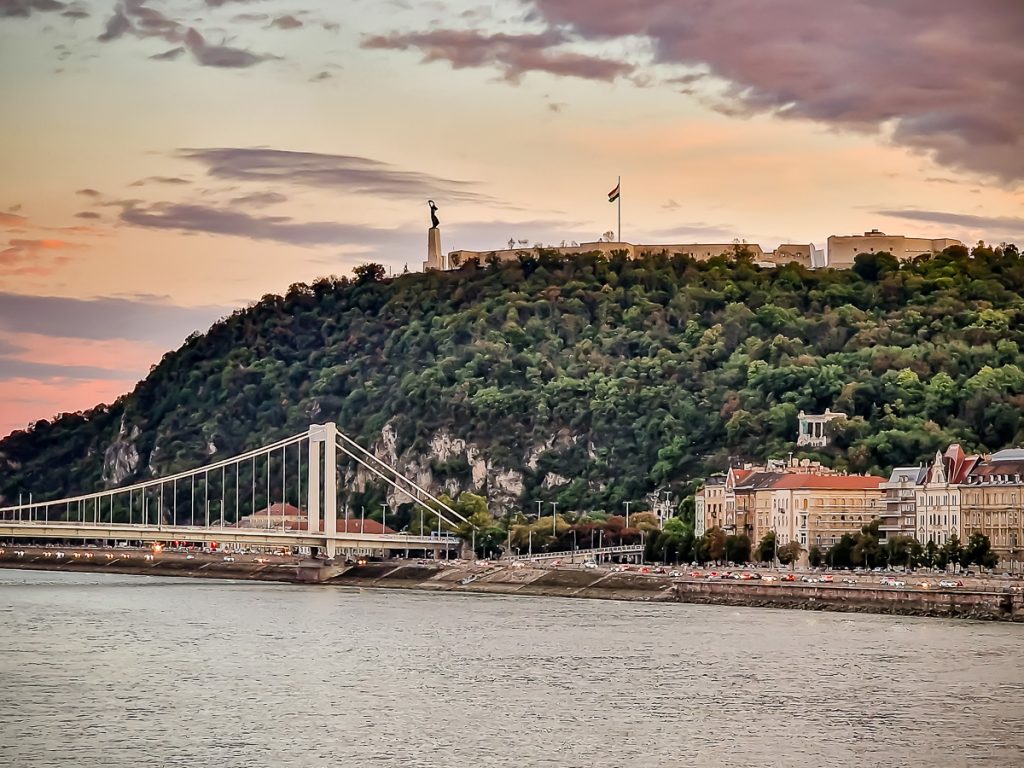
The name of Gellért Hill in Buda comes from an Italian bishop, Gerard (in Hungarian, Gellért), who was brought to Hungary by King Stephen to Christianize the population. According to legend, the Hungarian pagans who didn’t want this put the bishop in a barrel and threw him off the hill straight into the Danube.

I see people climbing to the monument dedicated to the bishop. I made it to the top of the hill, where the Citadel – an impressive fortress – and the Liberty Statue are, but by car 🙂 I understand that it takes about 20 minutes on foot.
From above, the view over the city is breathtaking!
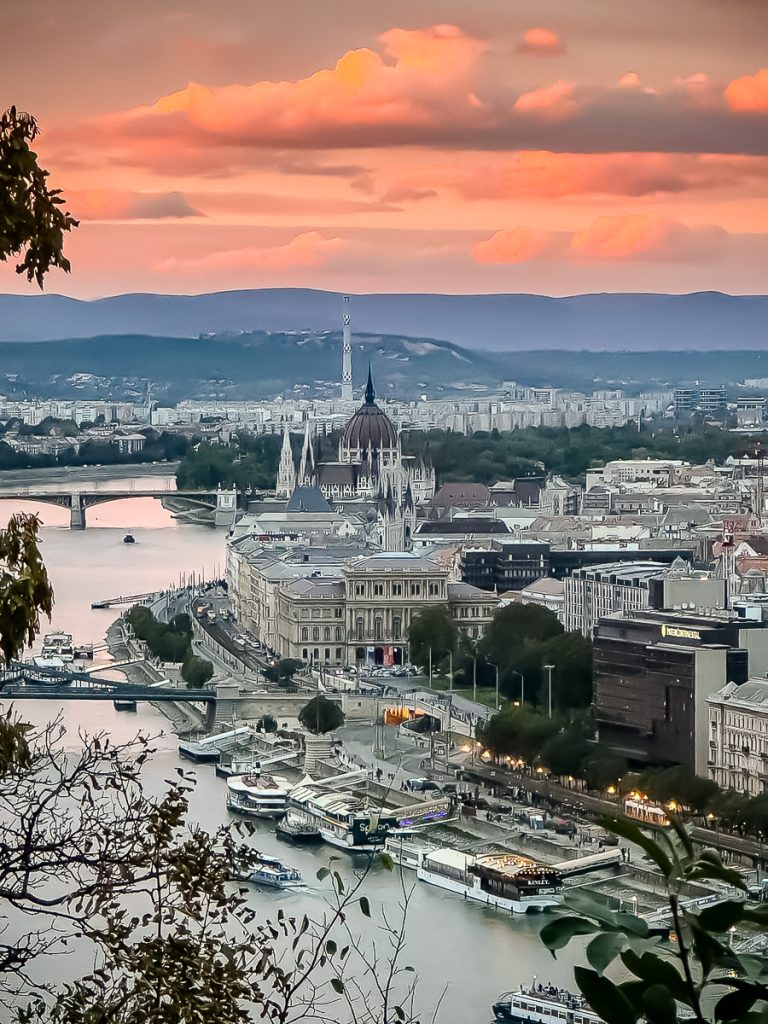
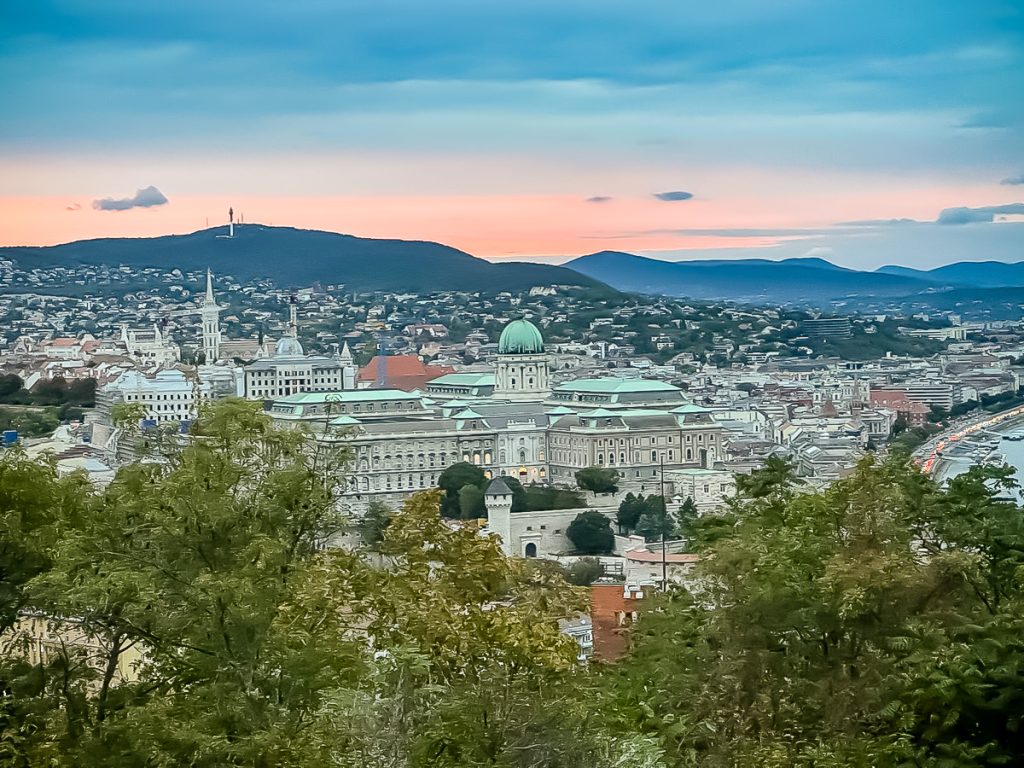
LIBERTY STATUE
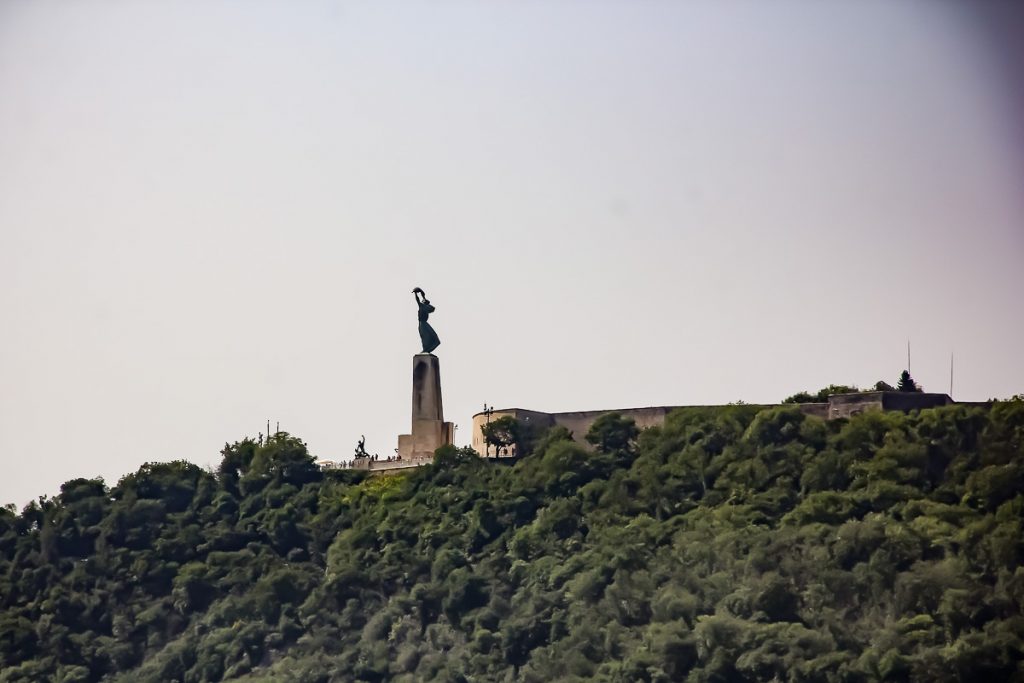
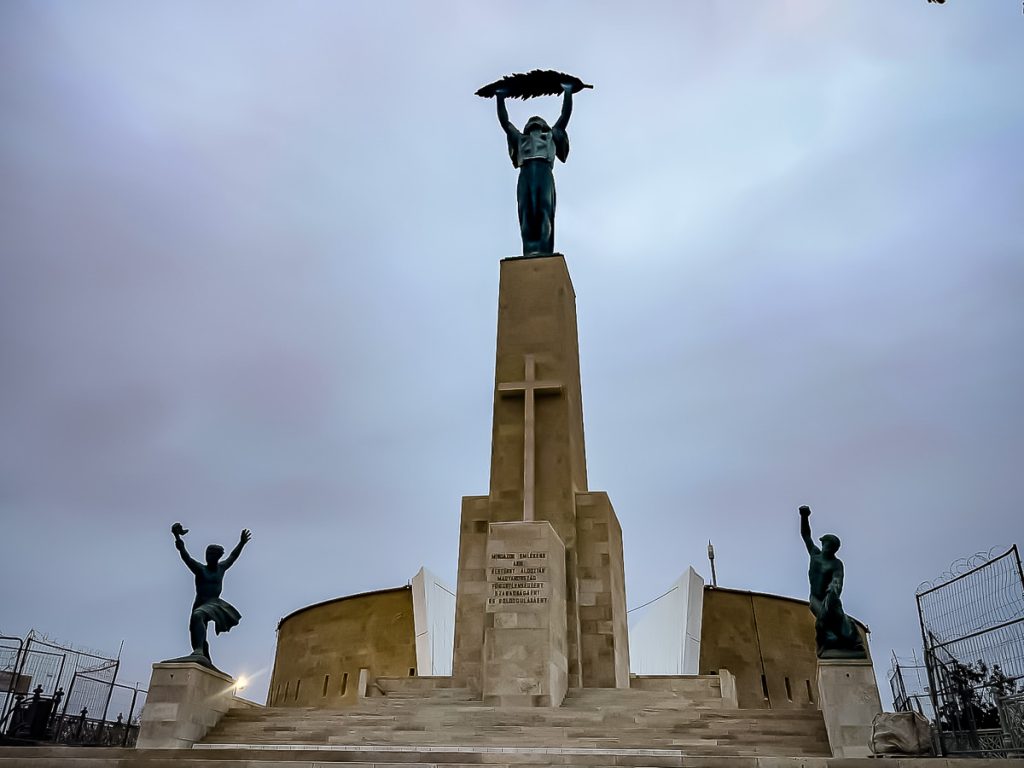
The Liberty Statue at the top of Gellért Hill has become a symbol of Budapest.
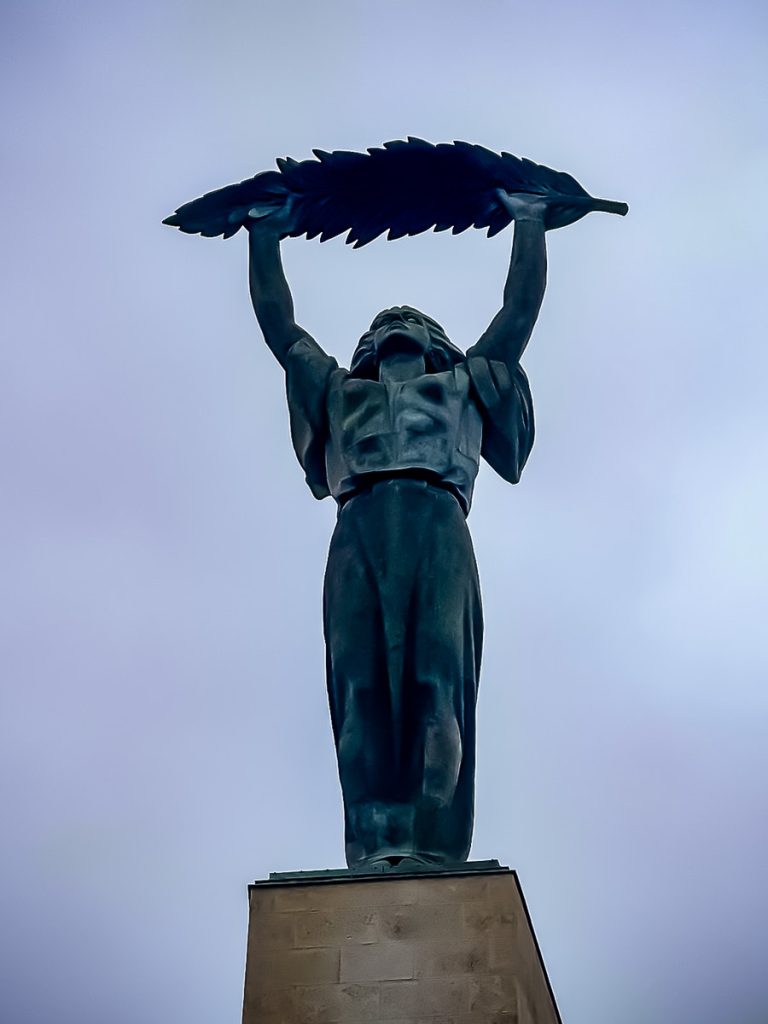
I read that, initially, the statue was supposed to hold a sword with both hands, representing the fight for liberation. But when the communists came to power, it was decided without question to replace the sword with a… large palm leaf.
TOURIST ATTRACTIONS IN PEST
Speaking of statues, here are a few sculptures I came across in the city – both in Buda and in Pest.
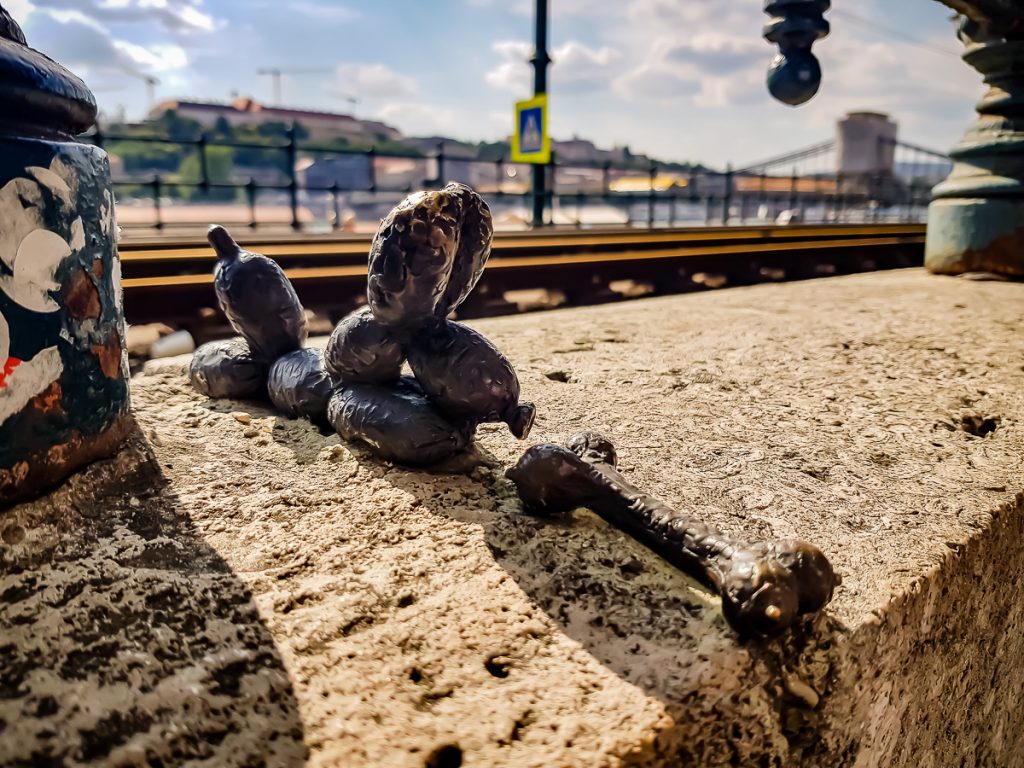
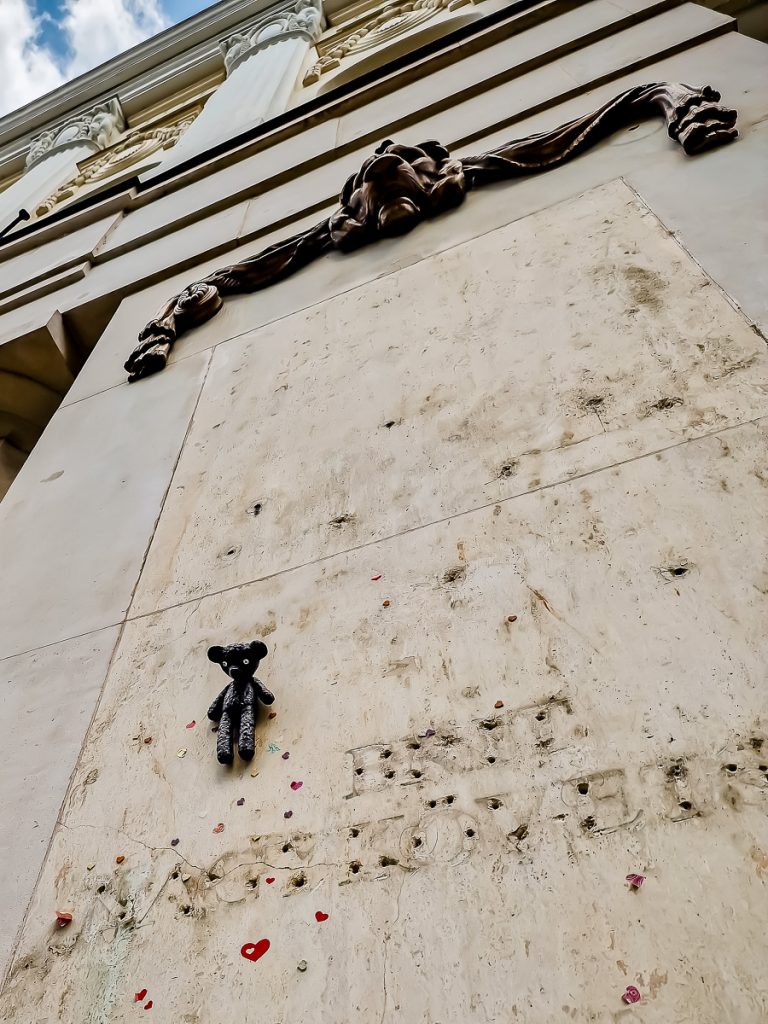
I discovered three tiny ones! The first – a balloon dog, which I understand is called Libido. It’s located right on the promenade along the Danube. The second – Mr. Bean’s bear, created on the occasion of Brexit and embedded in the wall where the British Embassy once operated. The small statue is aptly named Brexit.
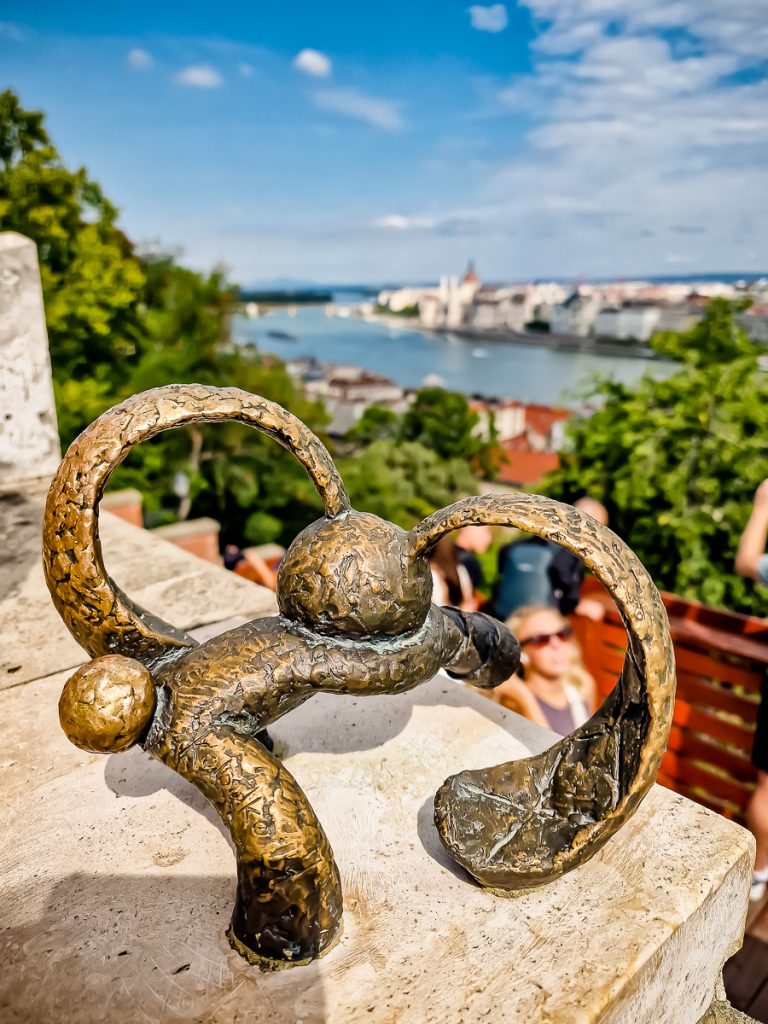
The third one is right up by the funicular – it’s called The Rabbit with Square Ears, and it’s looking at the Chain Bridge through a telescope.
There are about 30 such tiny “hidden” statues scattered around Budapest, all created by artist Mihály Kolodko. You can even go on a little hunt to find them!
Other statues are actual street characters, integrated into the urban bustle:
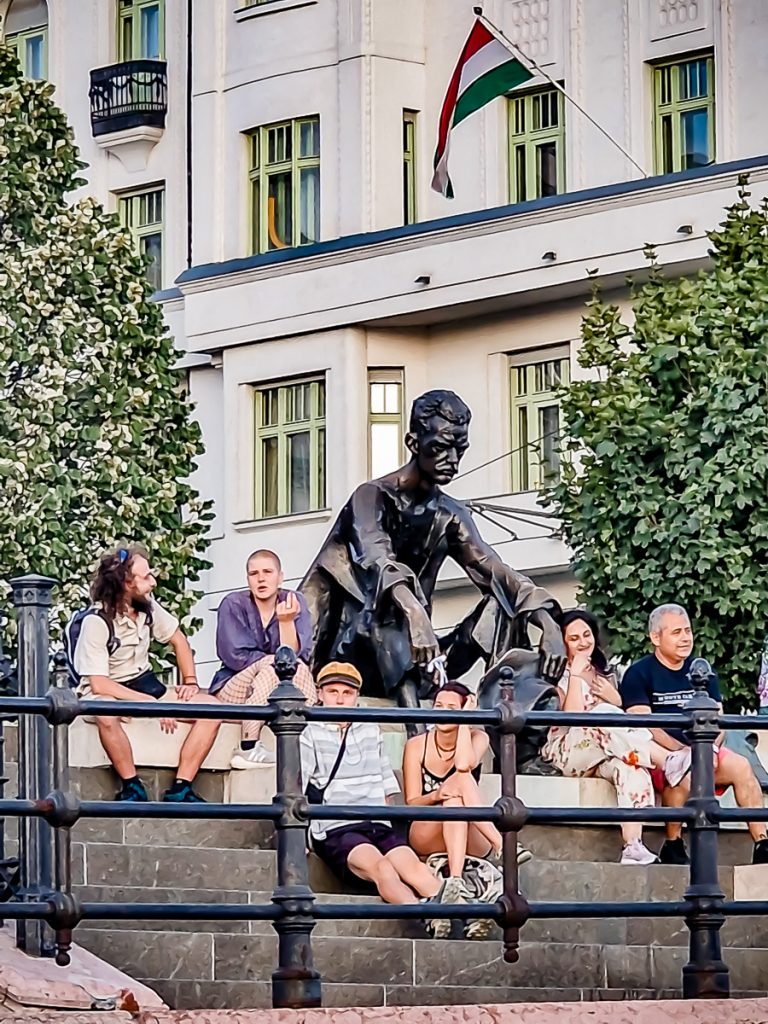
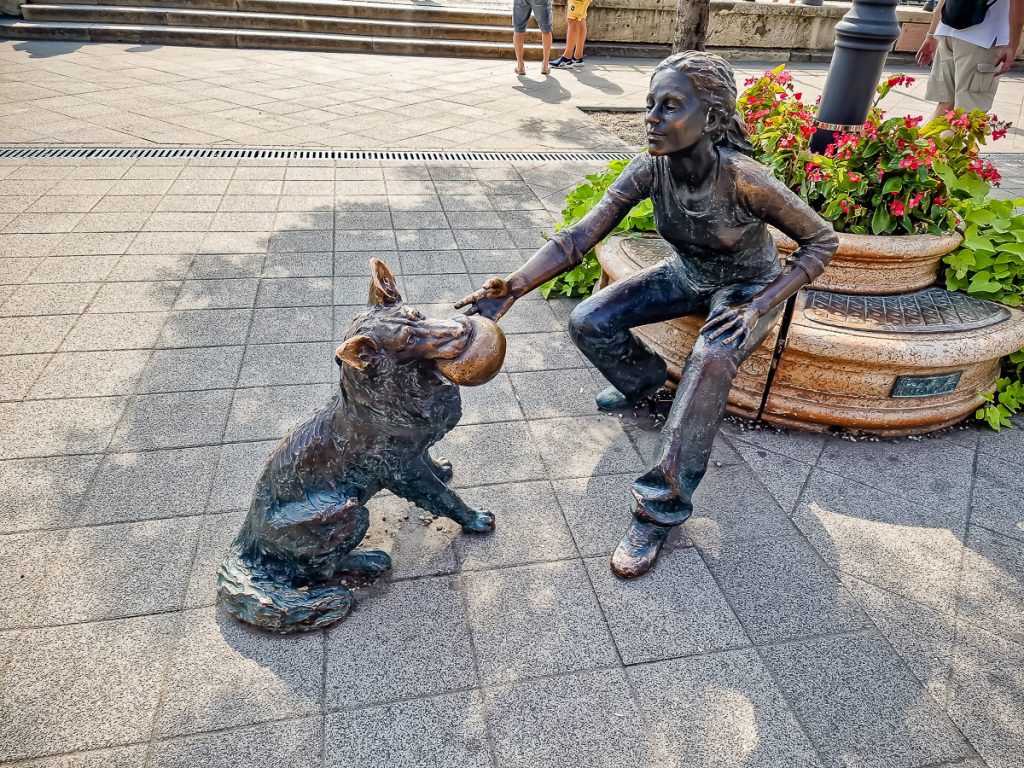
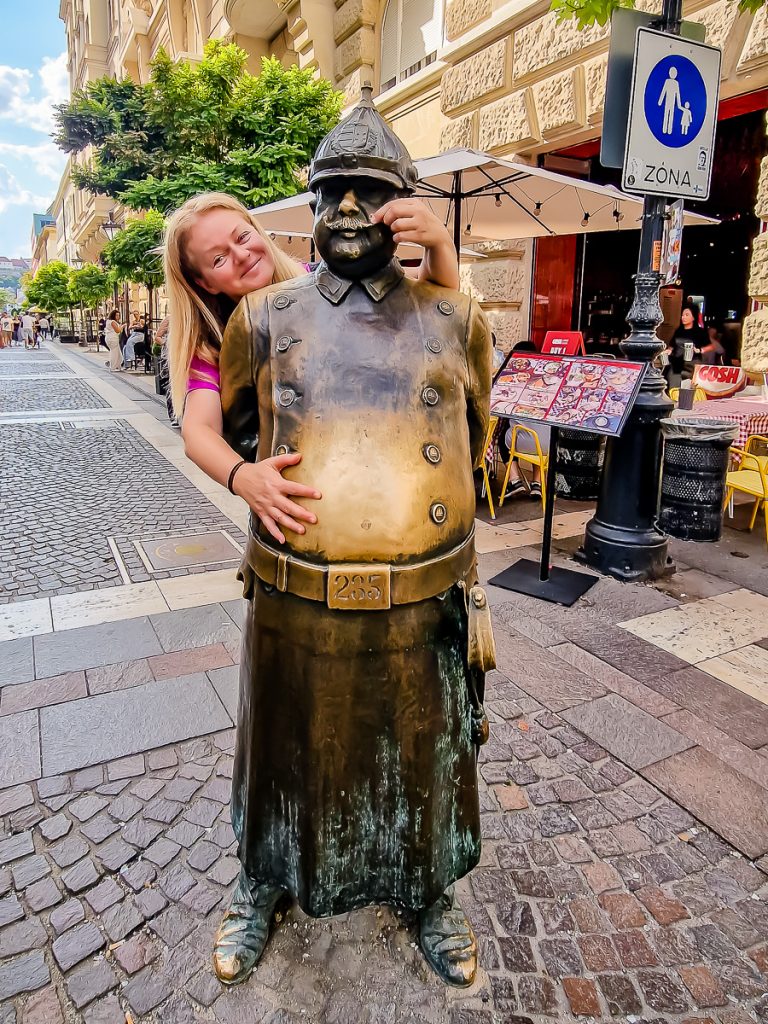
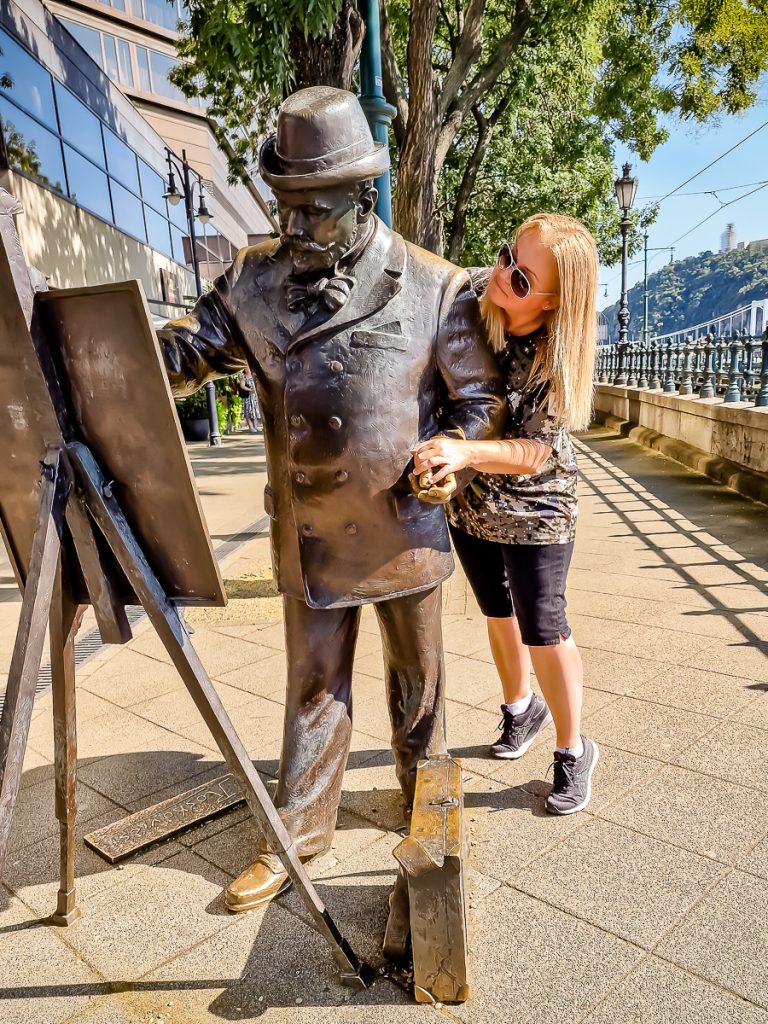
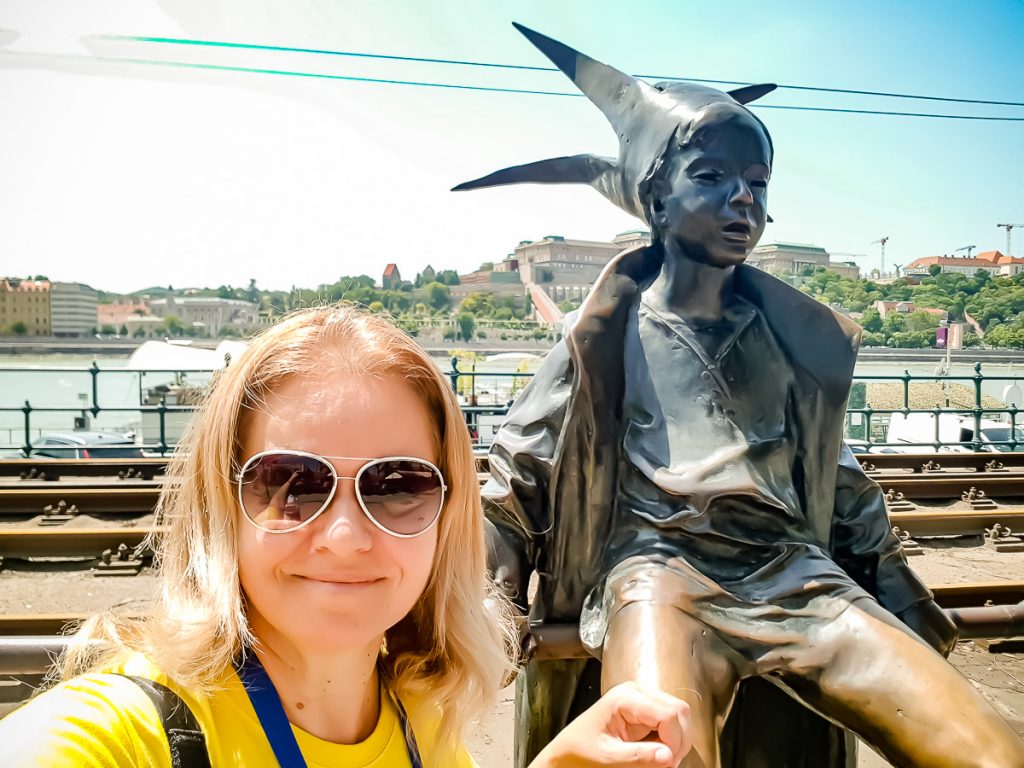
Ever since I came across this Peter Pan, I’ve been taking pictures next to him. Only now, in 2025, did I find out he’s not Peter Pan at all, but… the Little Princess! What???
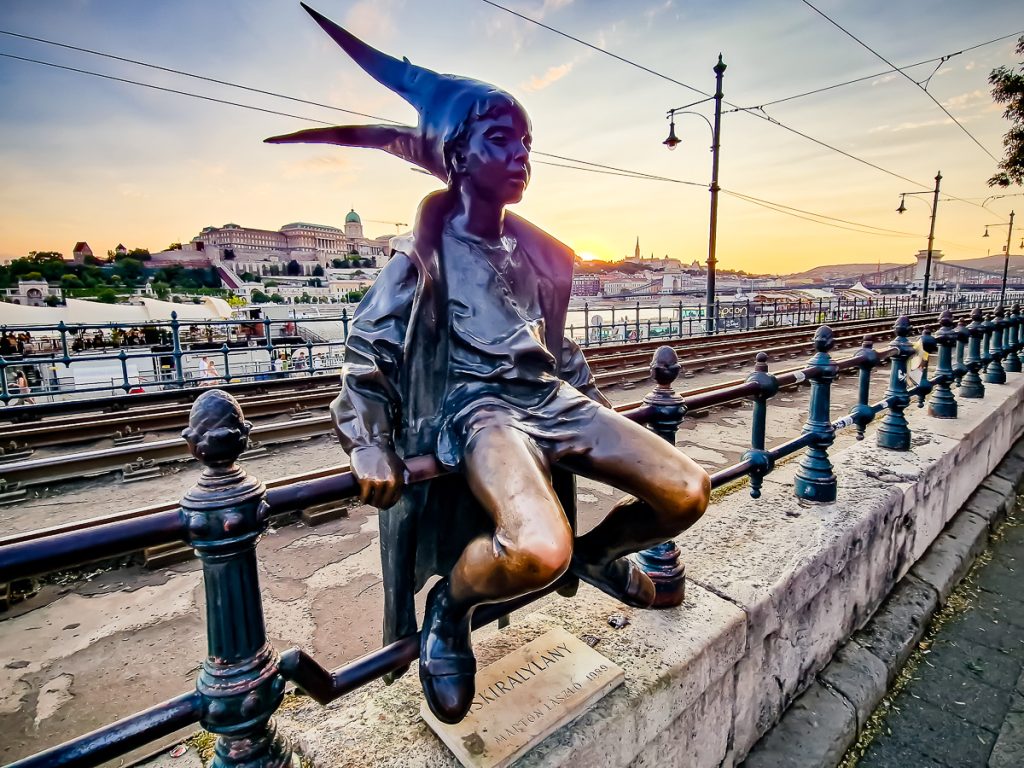
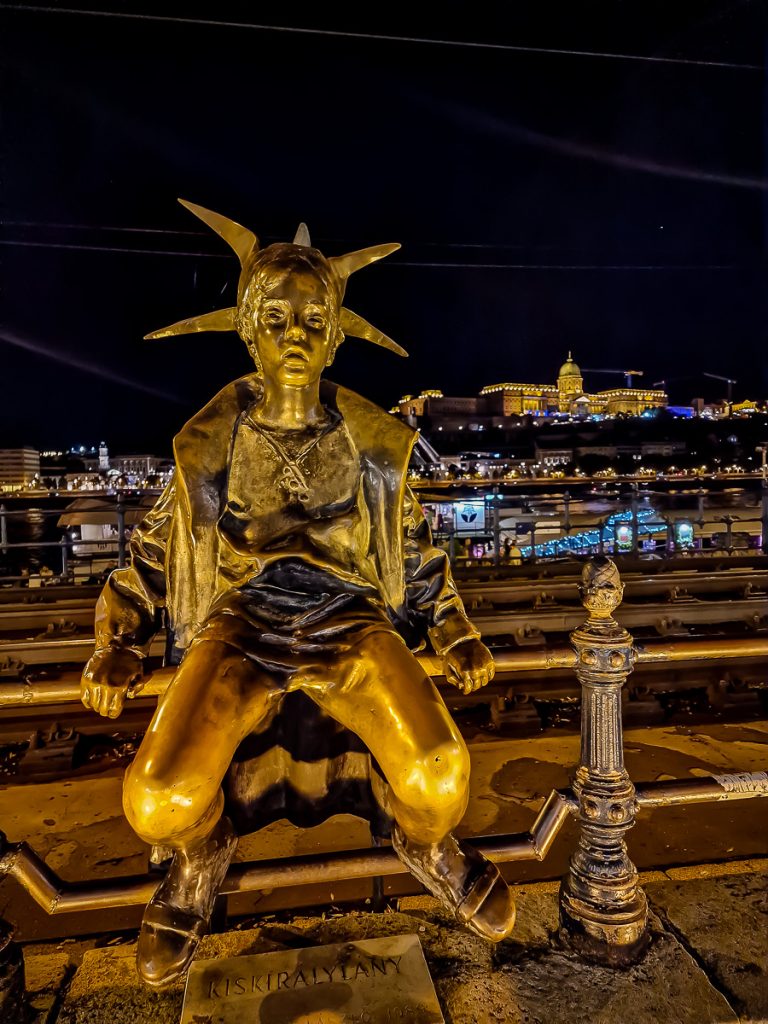
Yes! Sculptor László Marton created her in 1989, inspired by his daughter, who used to play around the house wearing his bathrobe and a paper crown on her head.
I read that it’s one of the most photographed statues in Budapest and has become an unofficial symbol of the city. There’s even a copy of it displayed in Tokyo! How cool is that?
There’s also the Statue Park (Memento Park), which I haven’t visited yet, a park outside the city where all the statues from the communist era have been gathered. Like an open-air museum.
BUDAPEST PARLIAMENT
Can you say you’ve seen an image of Budapest without the Parliament?…
It’s clearly the tourist attraction I’ve photographed the most during all my visits!
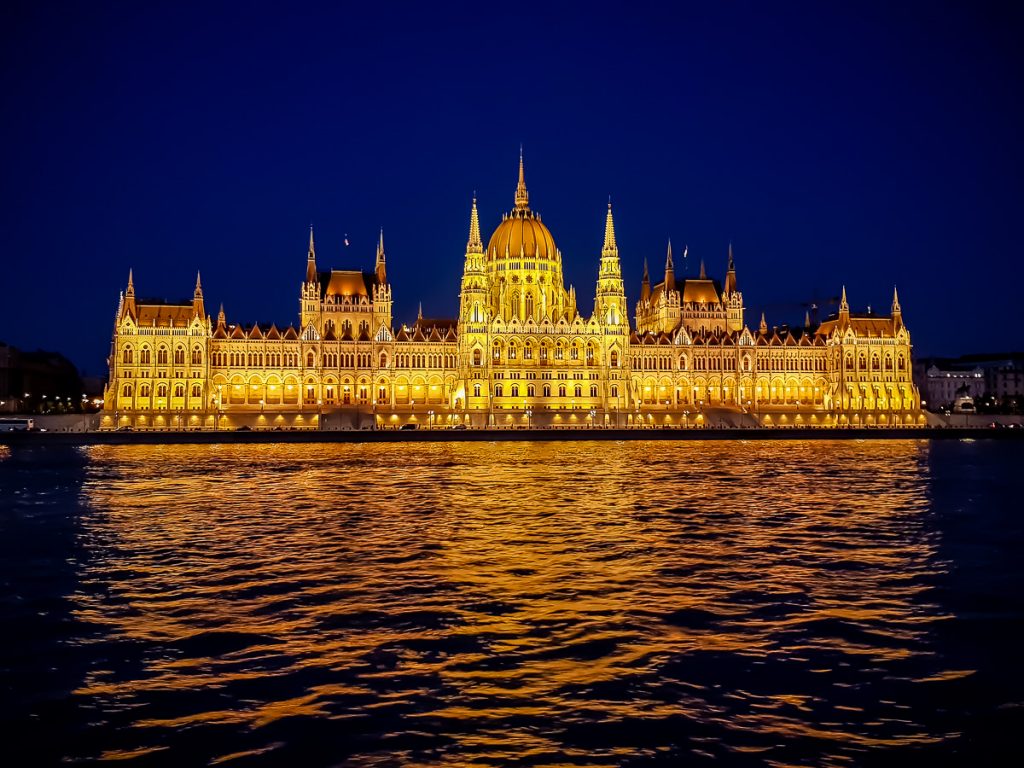
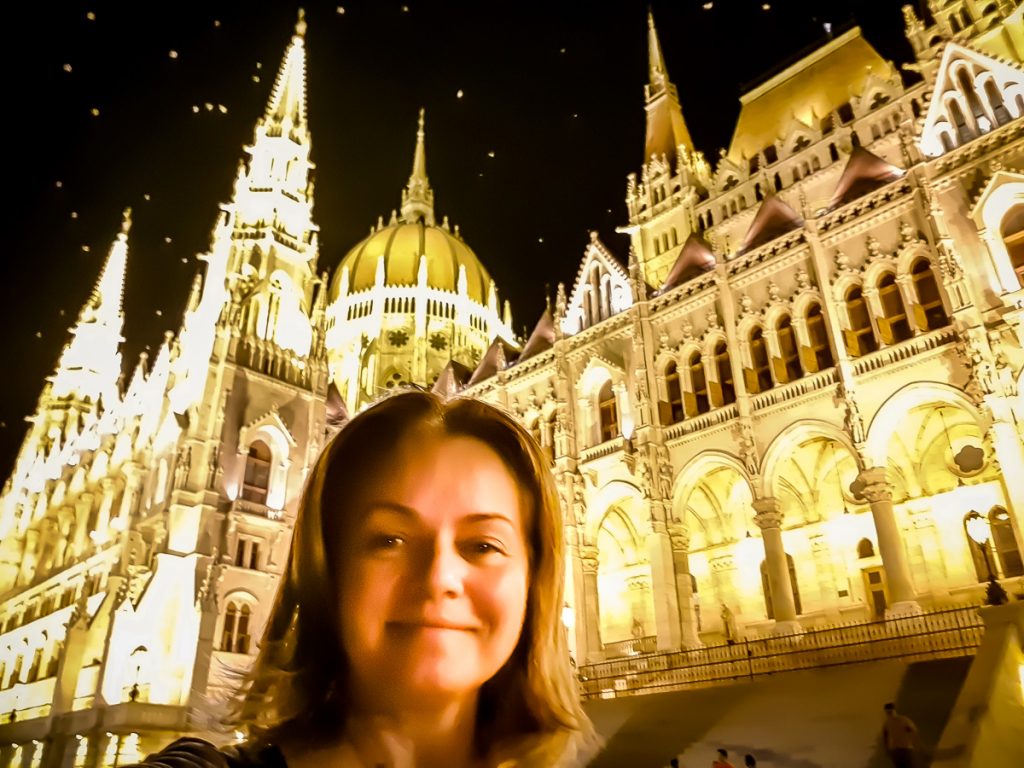
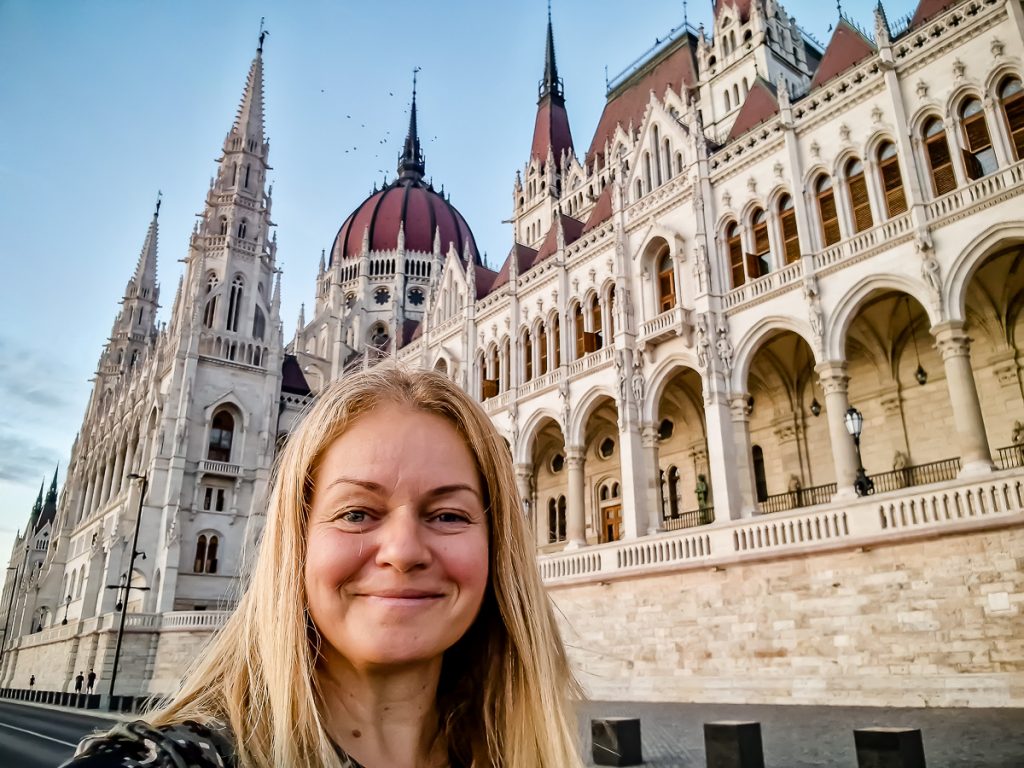
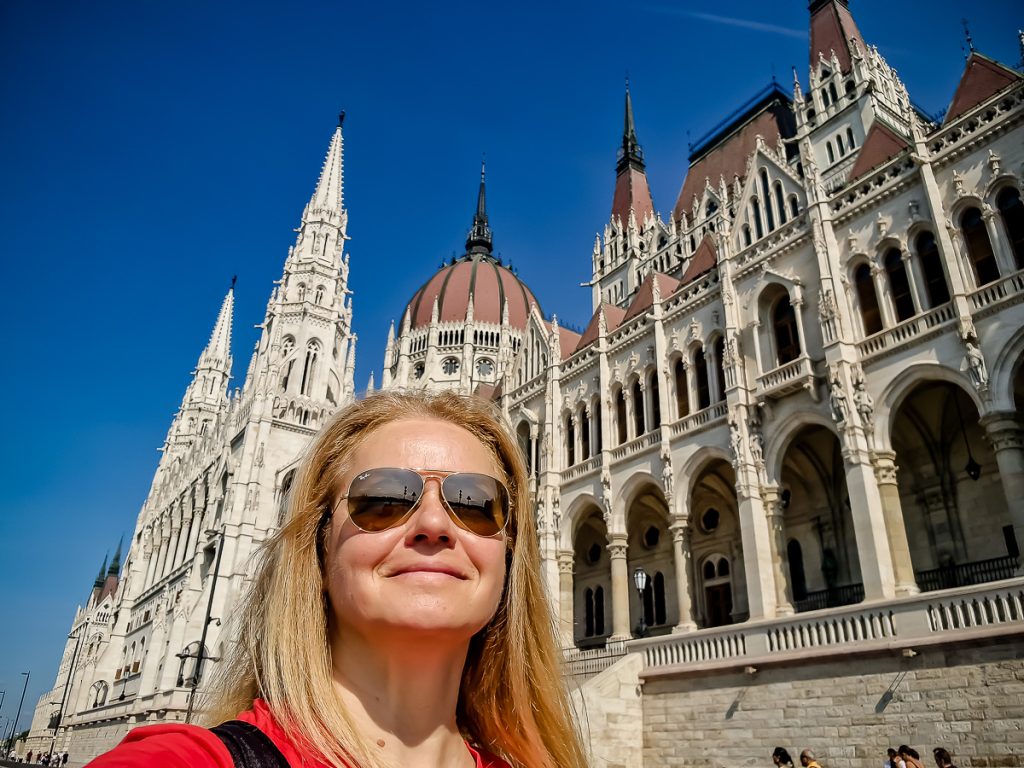
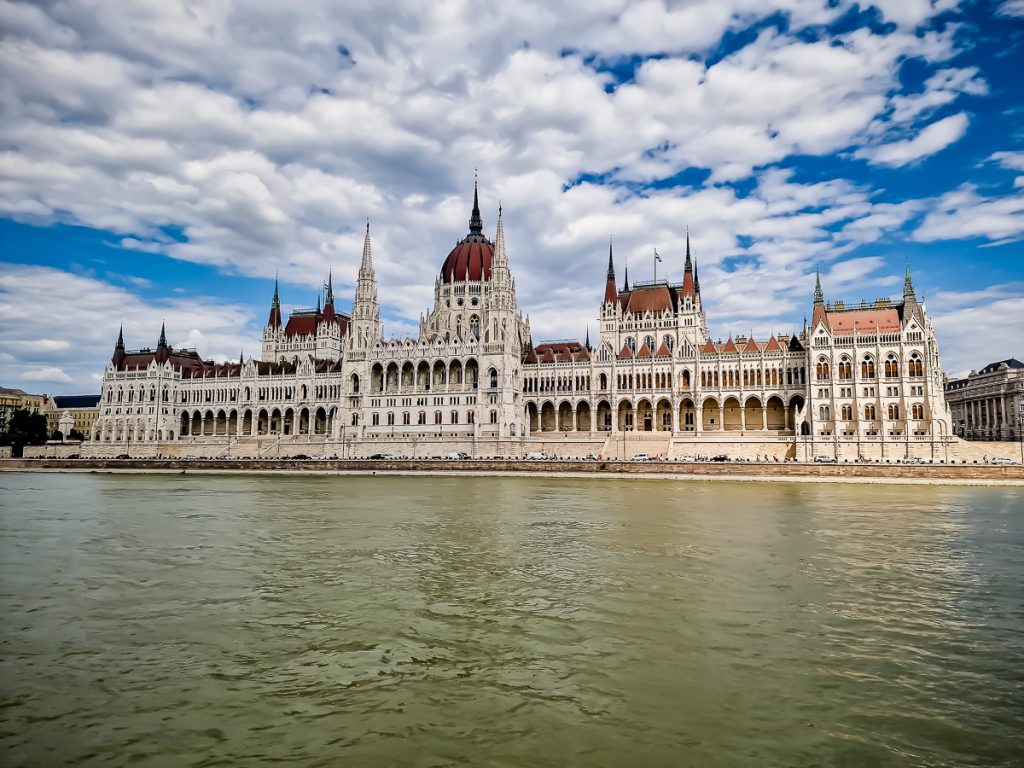
Poor Parliament hasn’t escaped from me: I’ve captured it during the day, evening, and night, with me and without me, from the boat, from up close, from the hill, and from the riverbank… I think it doesn’t want to hear from me for a while.
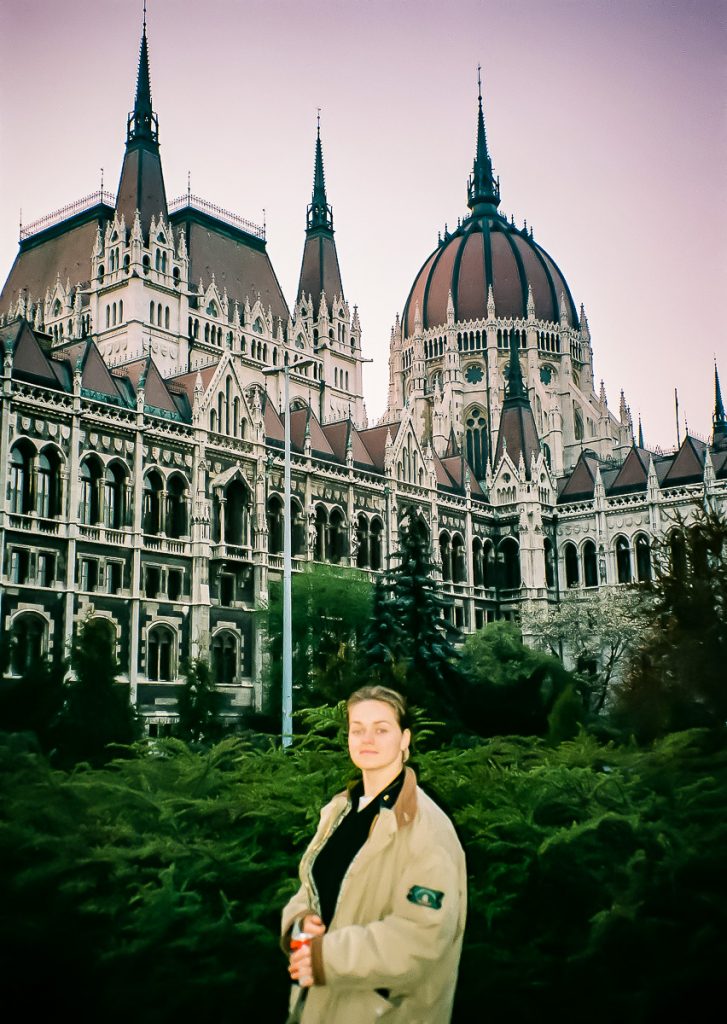
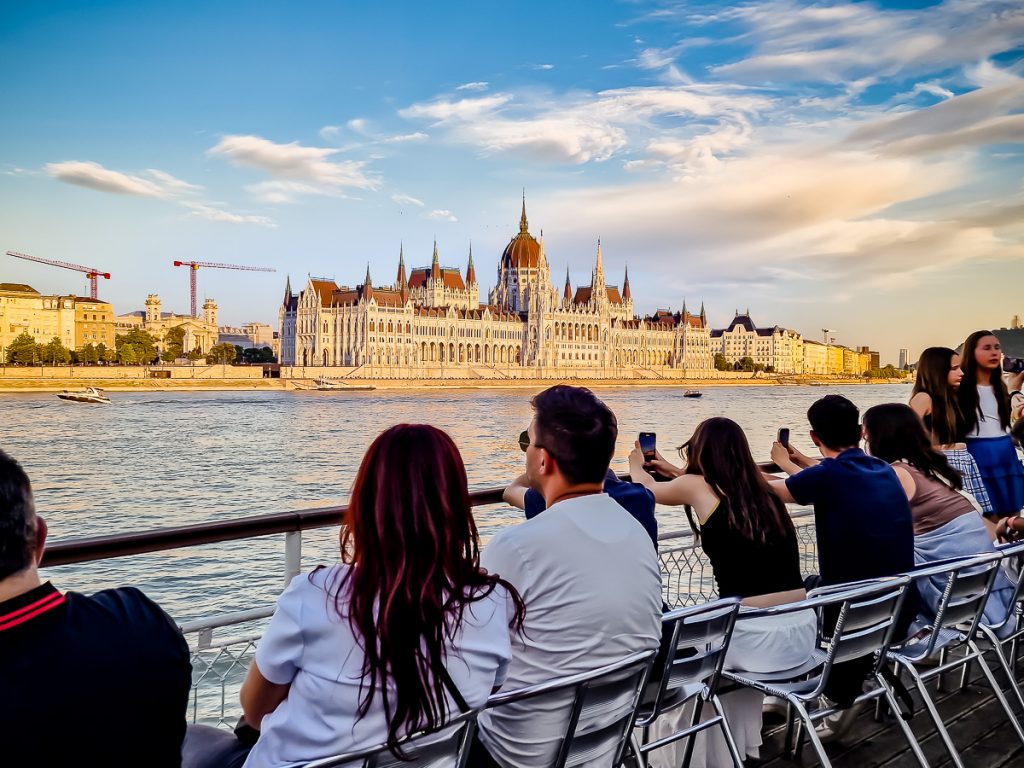
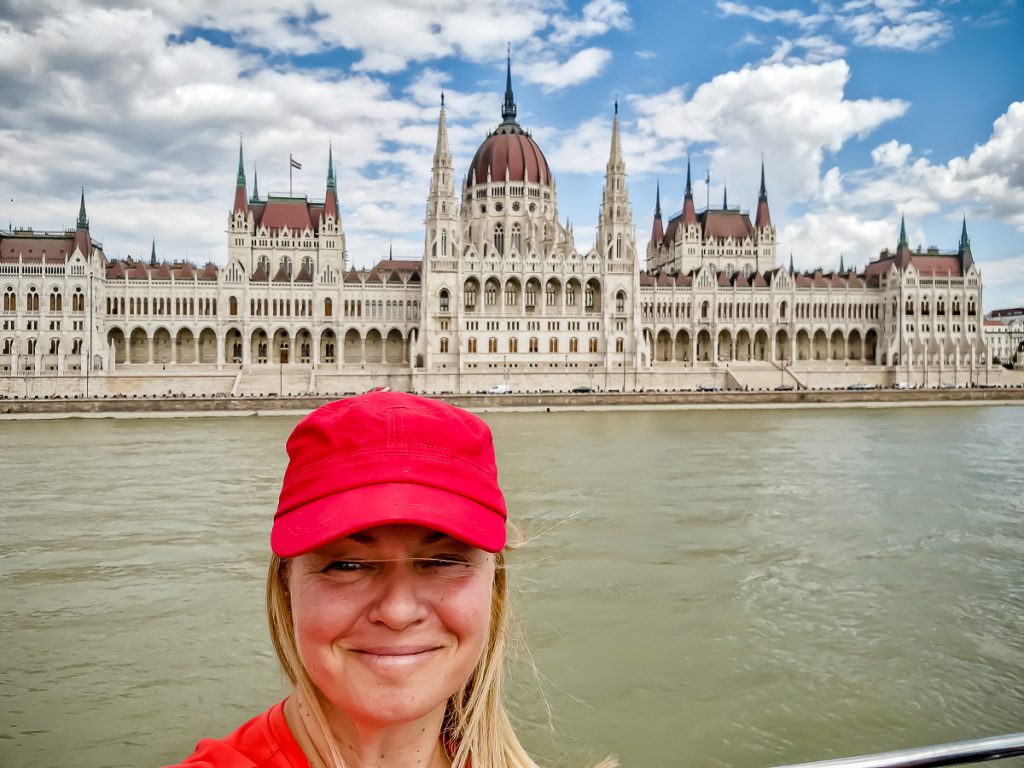
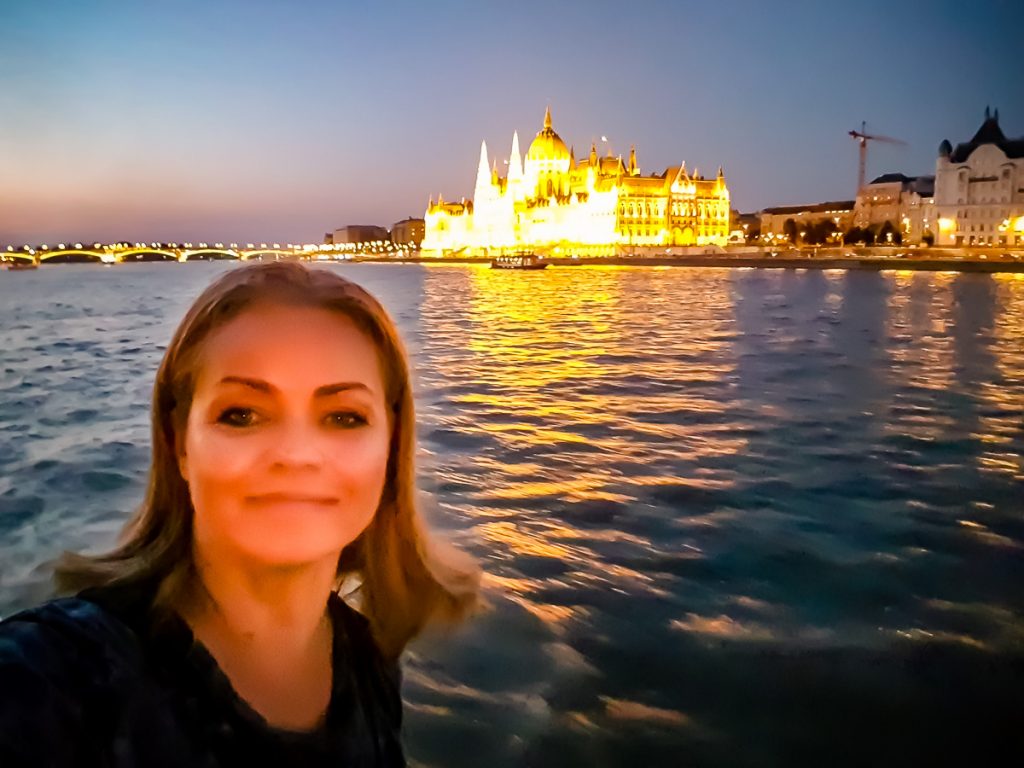
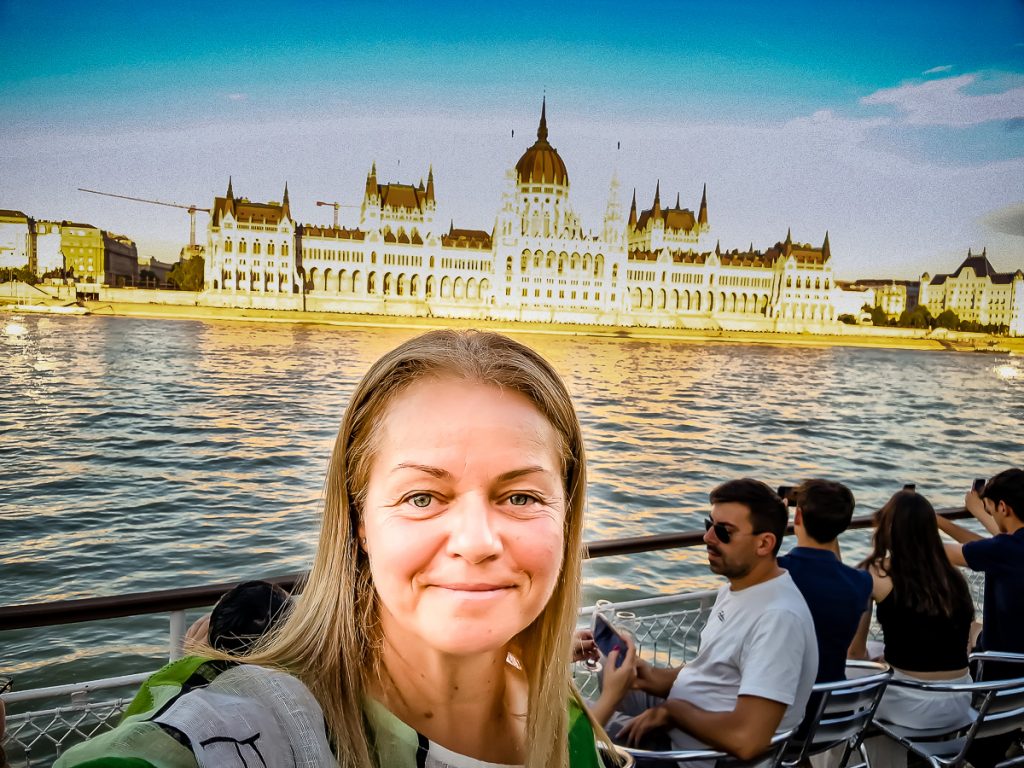
A marvel of Neo-Gothic style, the Parliament is still the largest building in Hungary, for which 40 kilograms of pure gold, half a million precious stones, and over 40 million bricks were used! Wow!
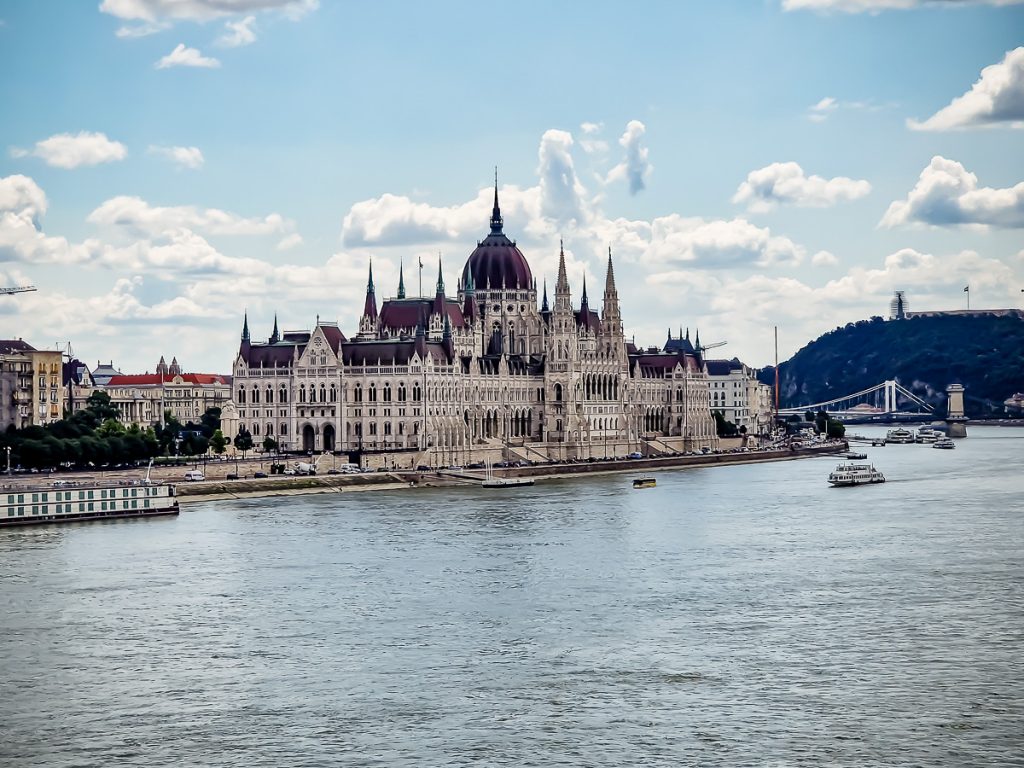
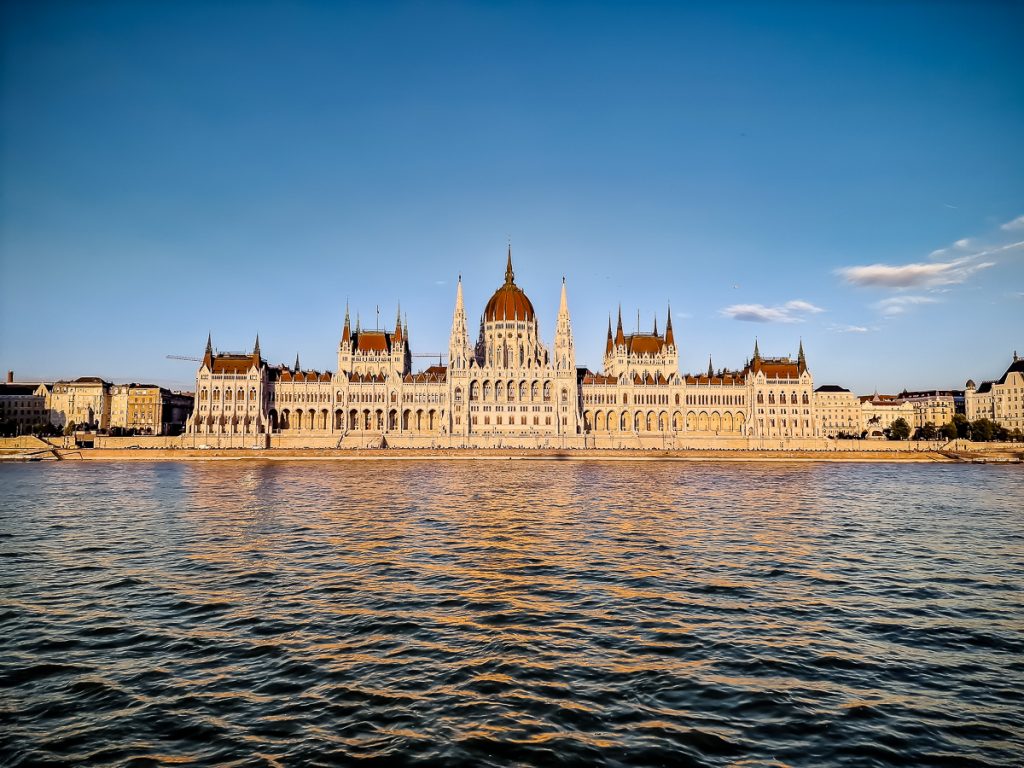
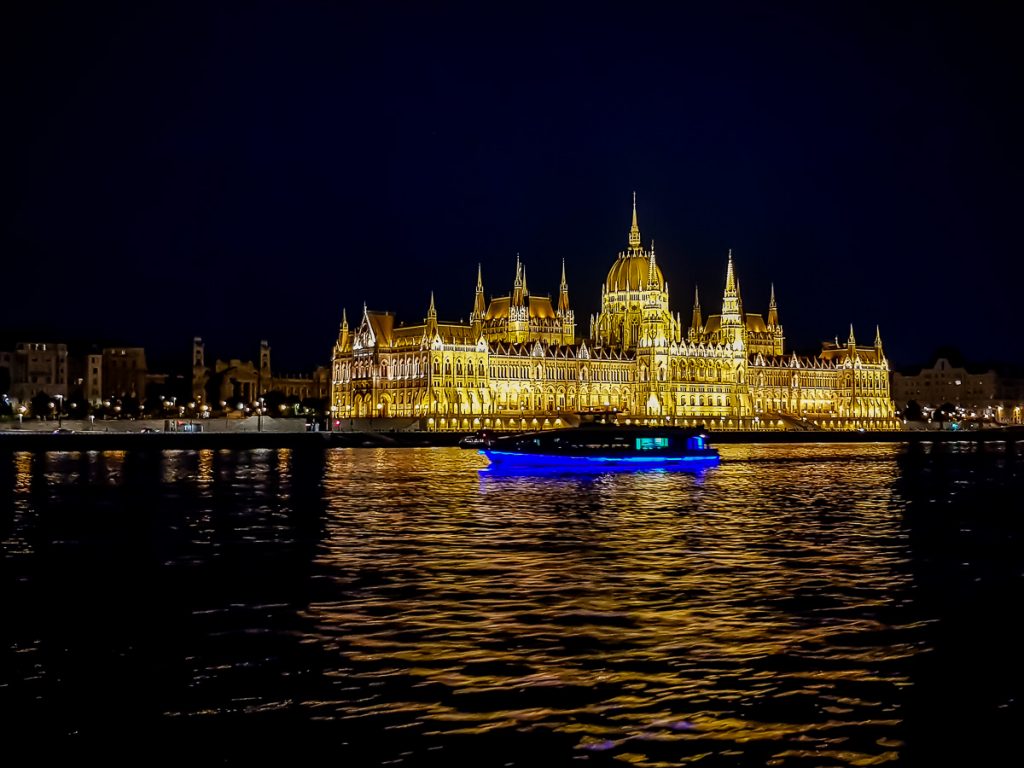
The building was inaugurated in 1896, marking 1,000 years since the Hungarian tribes united and settled in the Pannonian Plain. Although the Parliament was not yet completed that year (it was finished in 1904), the first government session was held there in 1896.
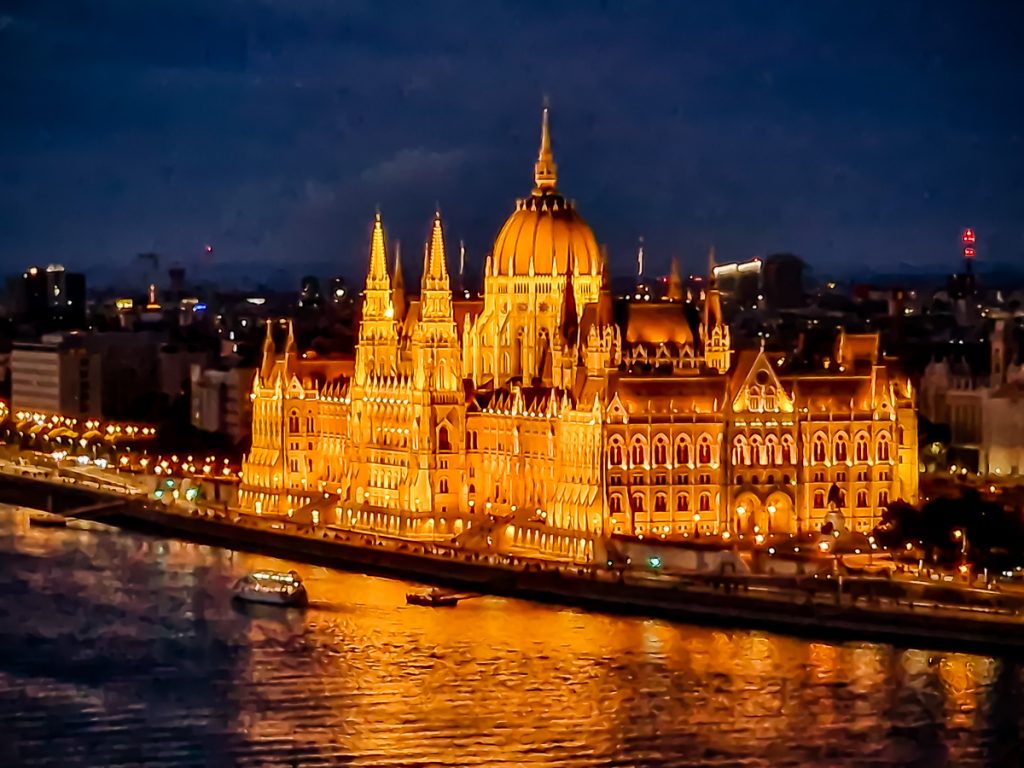
THE SHOES ON THE DANUBE BANK. THE JEWISH MEMORIAL.
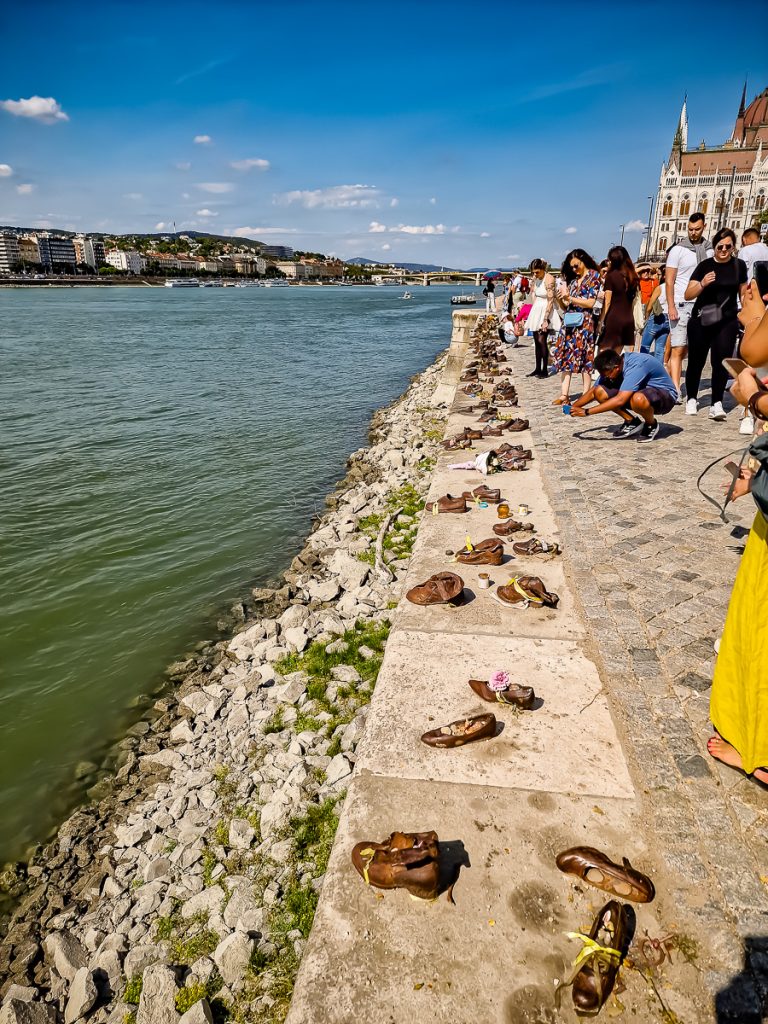
Just a stone’s throw from the Parliament, right on the banks of the Danube, up to the Chain Bridge, you’ll come across many shoes – 60 to be exact. Women’s, men’s, children’s shoes, boots, and sneakers… All these footwear pieces are made of iron, fixed into the concrete.
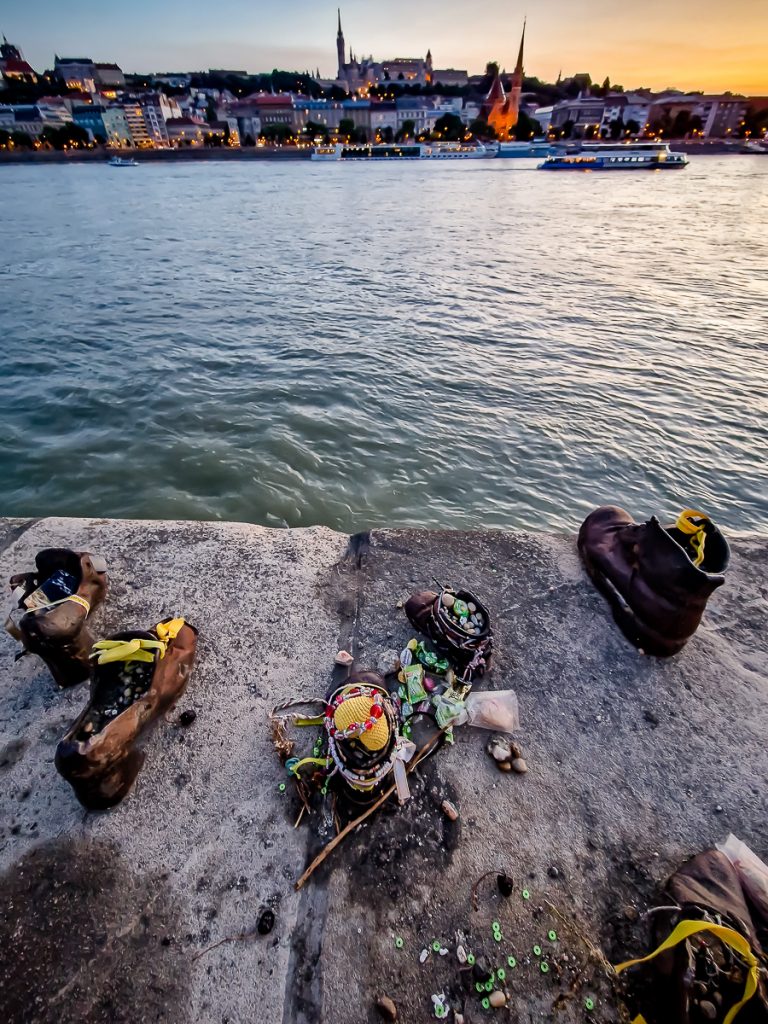
Their story is heartbreaking: they pay tribute to the approximately 3,500 Jews killed by fascists on the banks of the Danube during the winter of 1944 to 1945. The fascists brought the Jews to the riverbank, forced them to remove their shoes, and then shot them. This way, they also disposed of the bodies, as they were carried away by the Danube. (At that time, the Danube was known as the “Jewish cemetery”…)
Why did they make them remove their shoes? Because shoes were a valuable commodity that winter; they could be worn or sold on the black market!
Brrr, I get chills just thinking about it! And I’ve read some more horrible details!
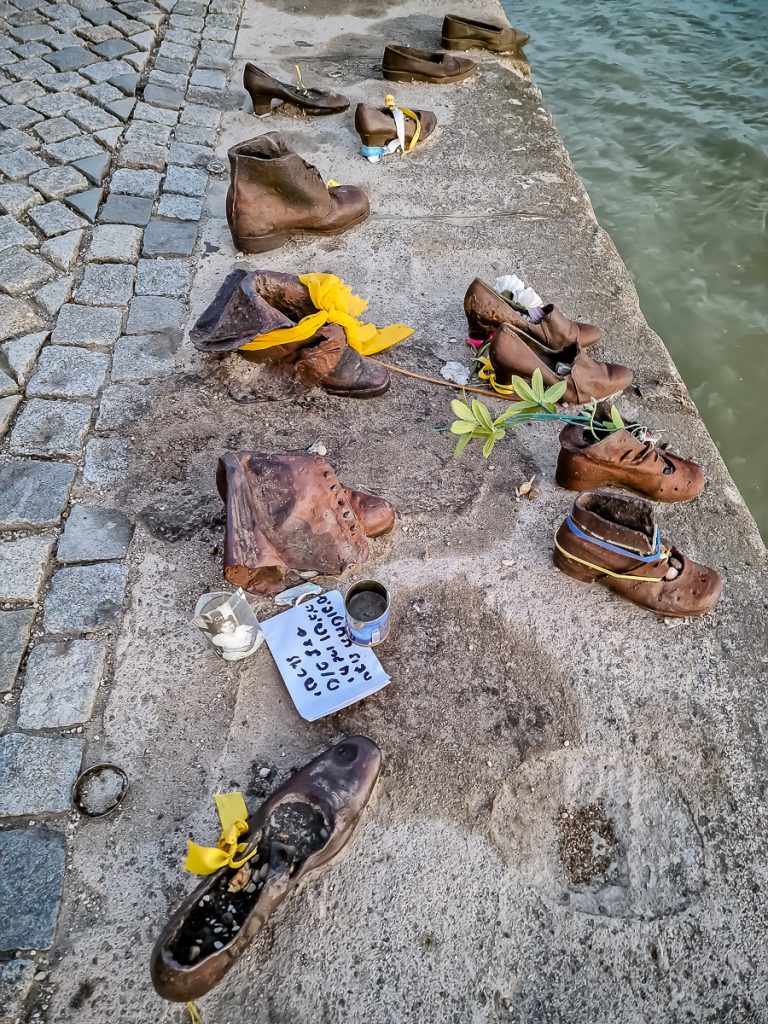
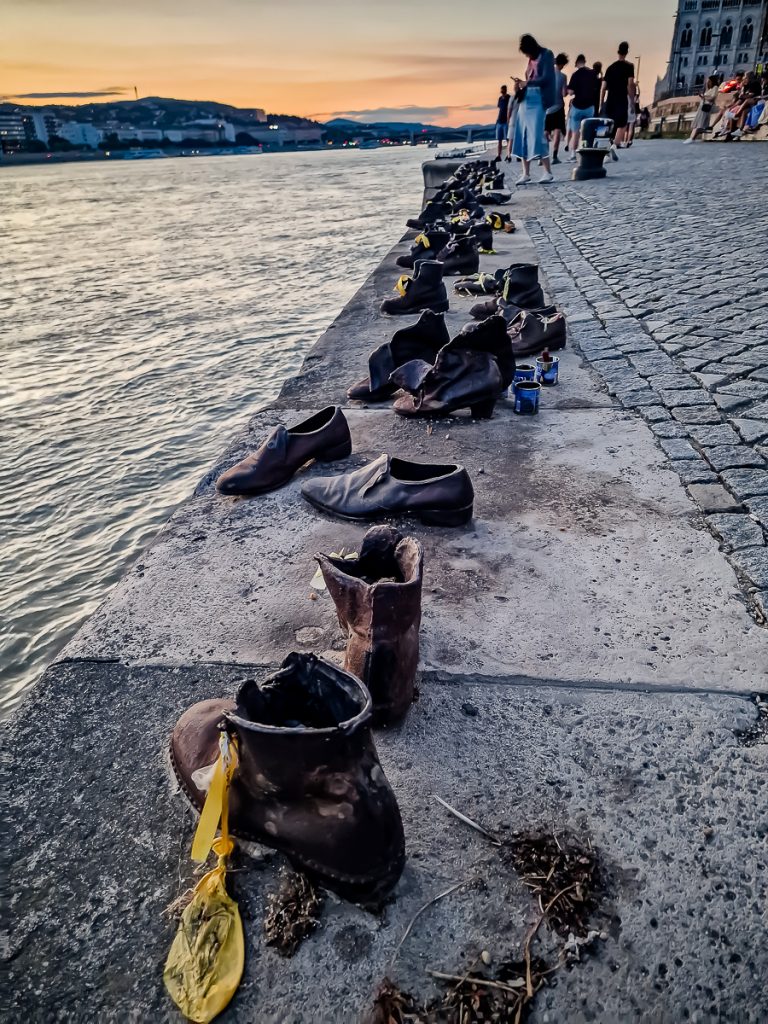
This unique “monument” was created in April 2005. It was conceived by film director Can Togay, who was helped to bring his idea to life by sculptor Gyula Pauer.
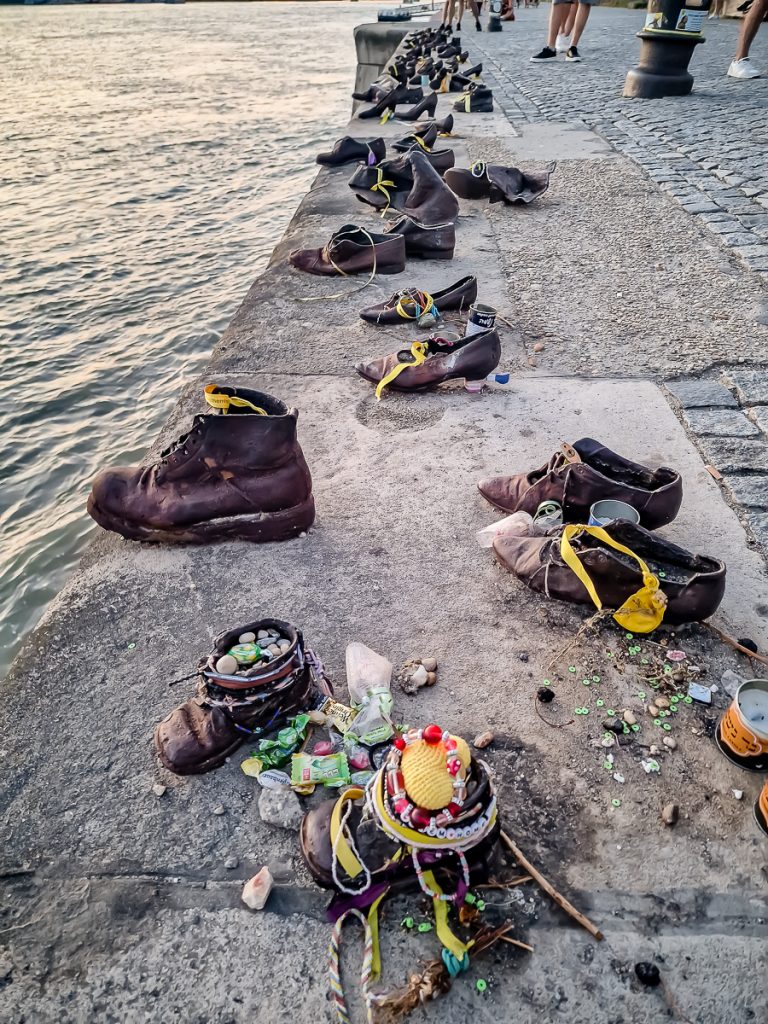
There are many people here. Some sit on benches, deep in thought, while others carefully look at the shoes.
Some of the shoes have colored ribbons tied to them, others have flowers, stones, or candles, and some have messages or beads.
SAINT STEPHEN’S BASILICA
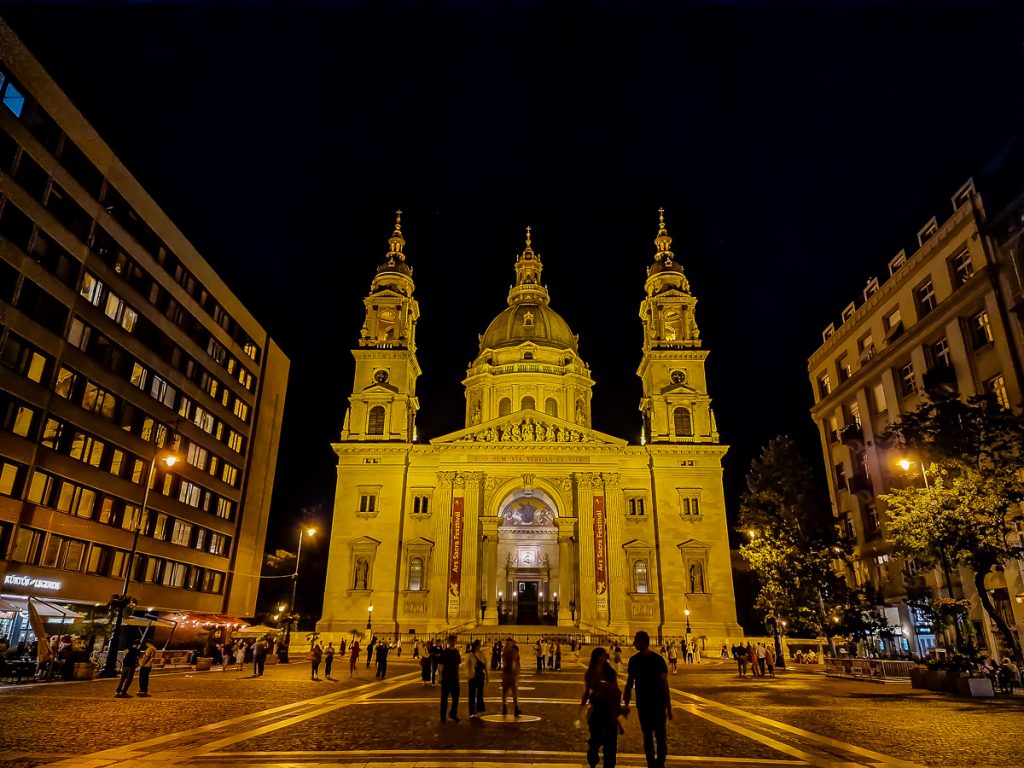
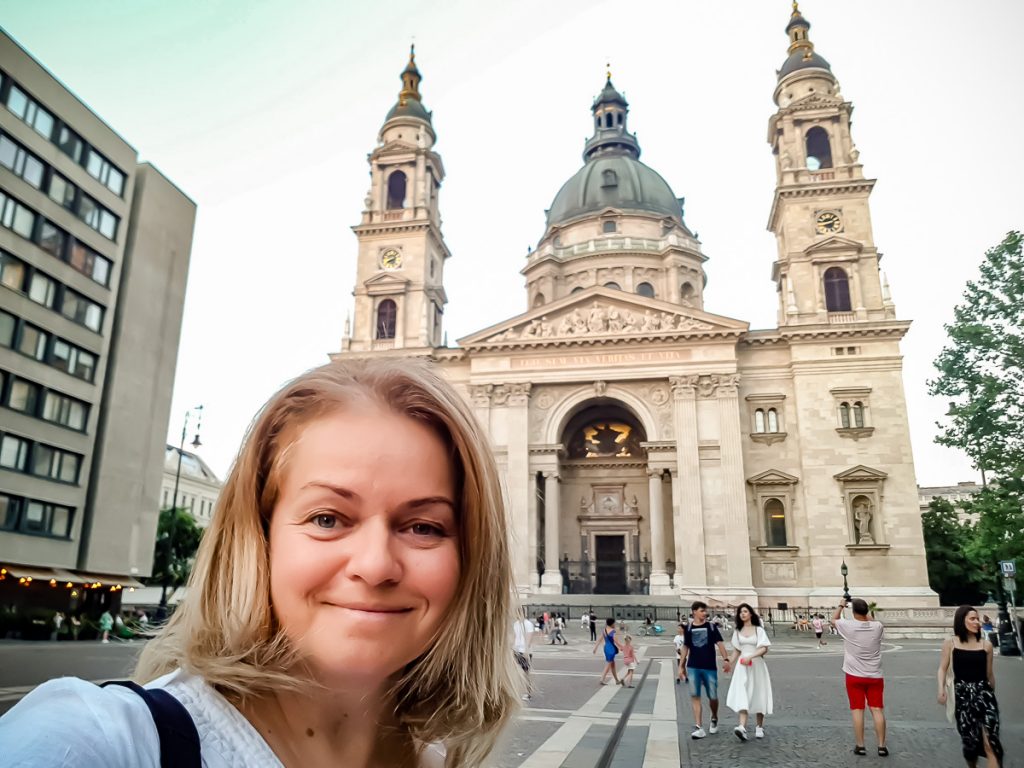
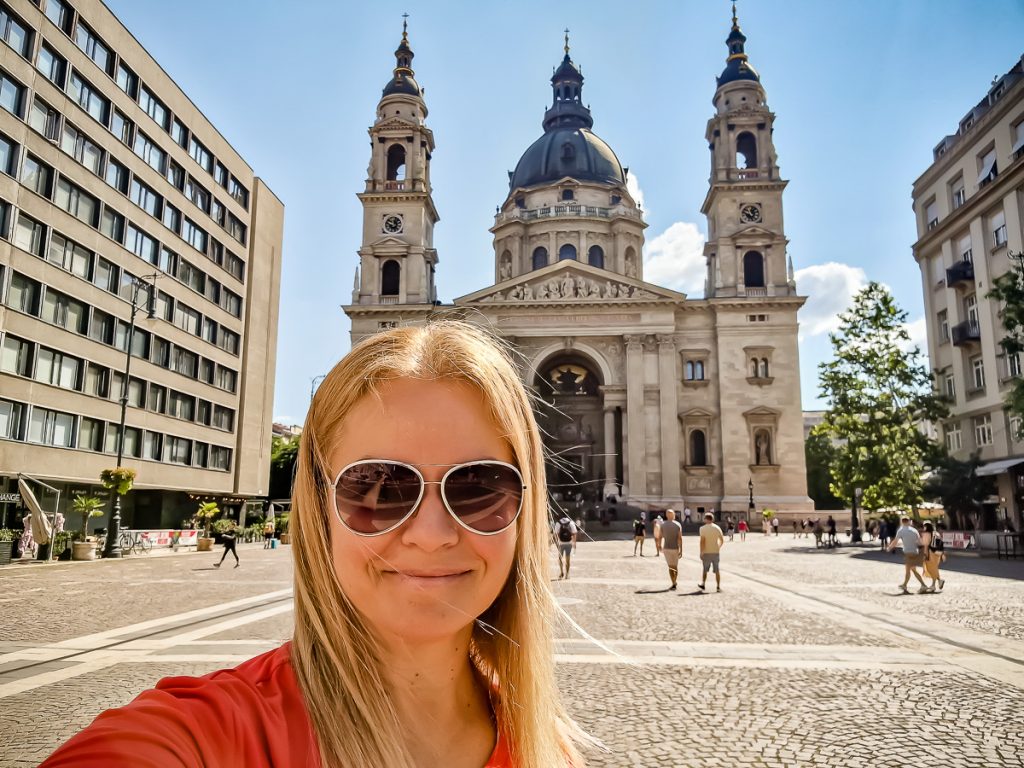
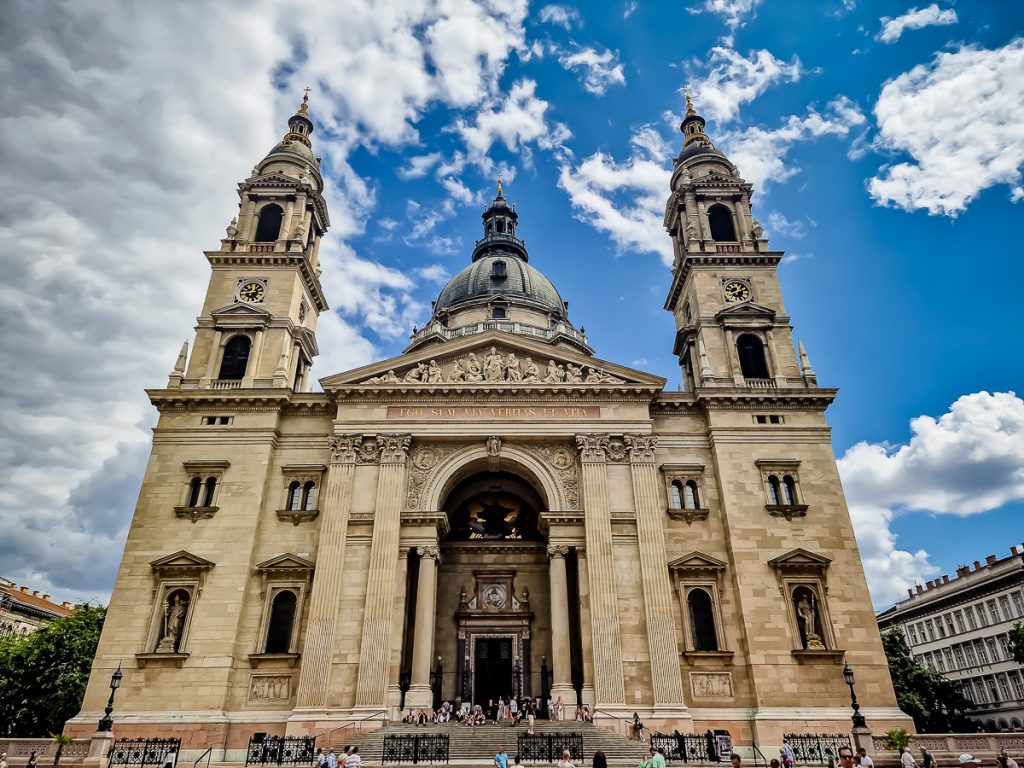
It is the largest Roman Catholic church in Budapest, and also the most important one.
It is dedicated to Saint Stephen – the first king and the spiritual patron of Hungary.
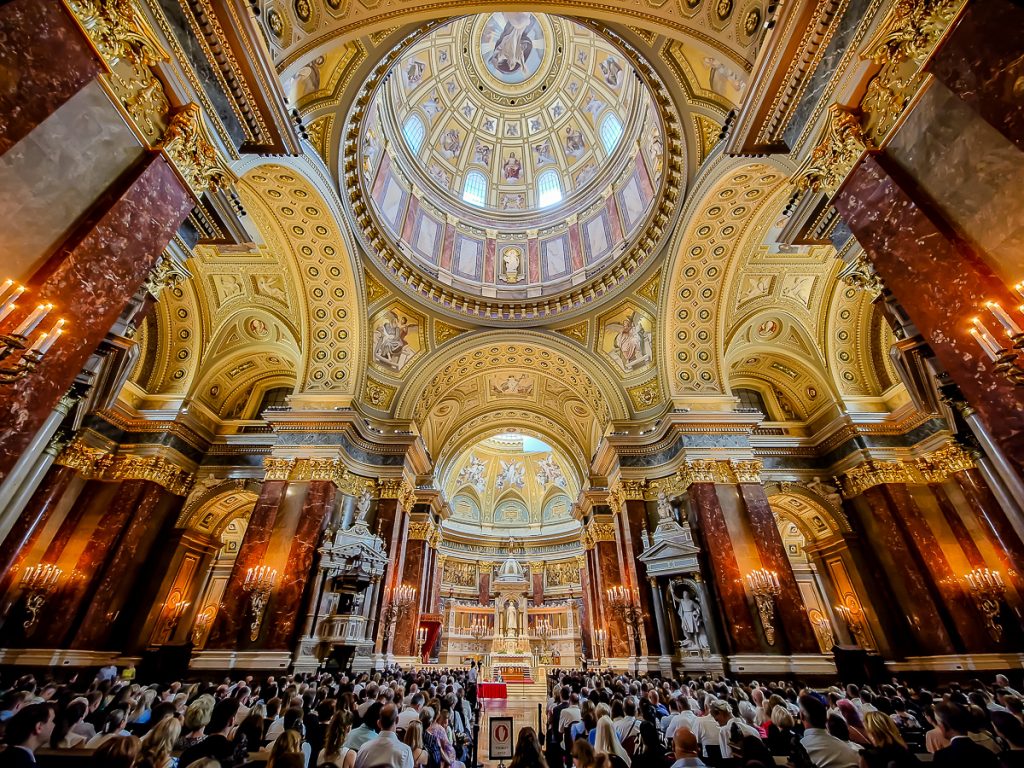
I happened to catch an event, which is risky for a tourist like me: you are informed at the ticket office (located on the side of the basilica, among the shops) that only a certain number of people are admitted. If the number is exceeded and you happen to arrive at that time, tough luck, you won’t get in.
I was lucky, I bought a ticket (about 6 euros) and entered, even though the event was in full swing (it wasn’t a service).
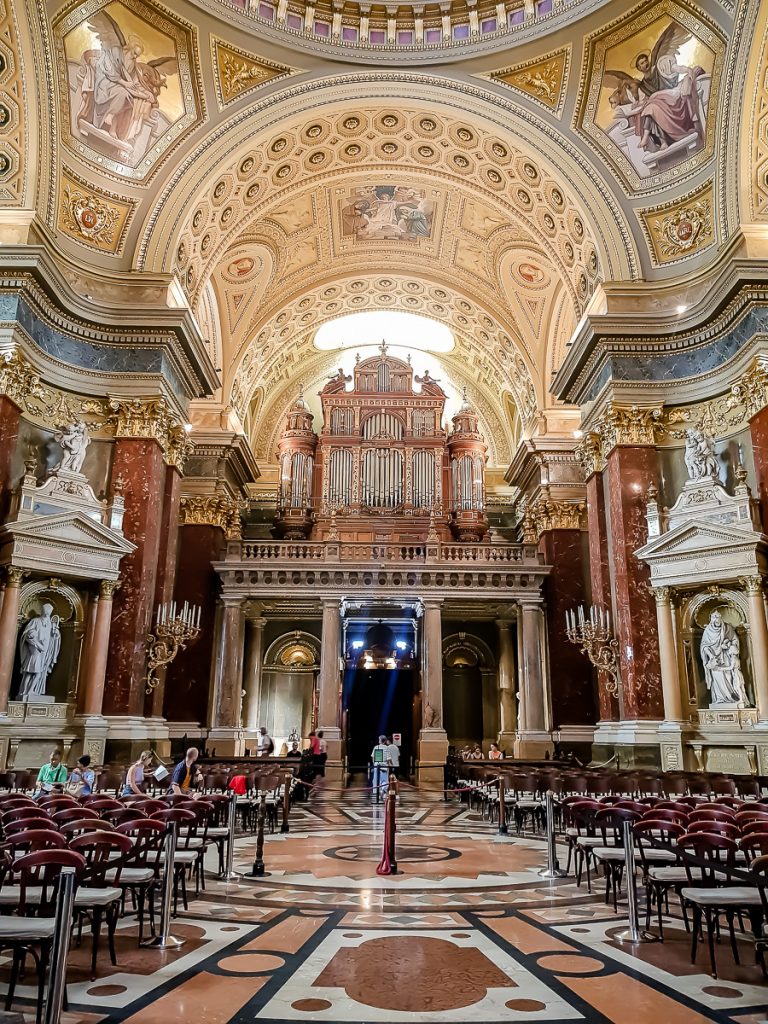
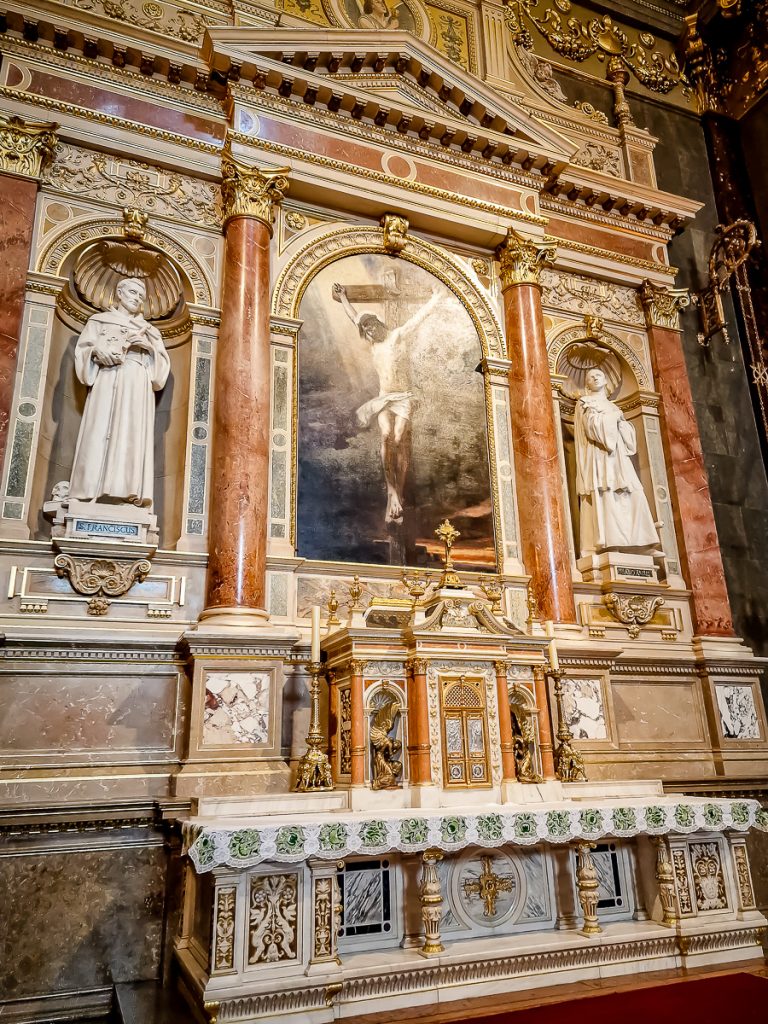
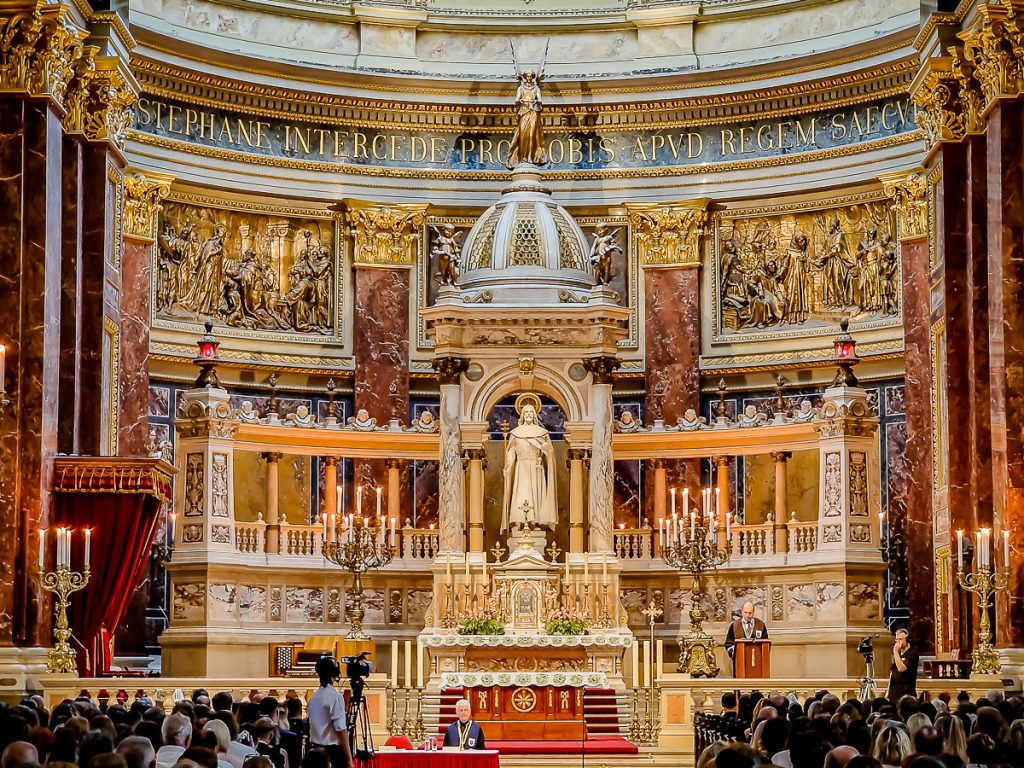
I can only visit the areas where access is allowed. What makes me happy is that I can reach something of great significance for the Hungarians:
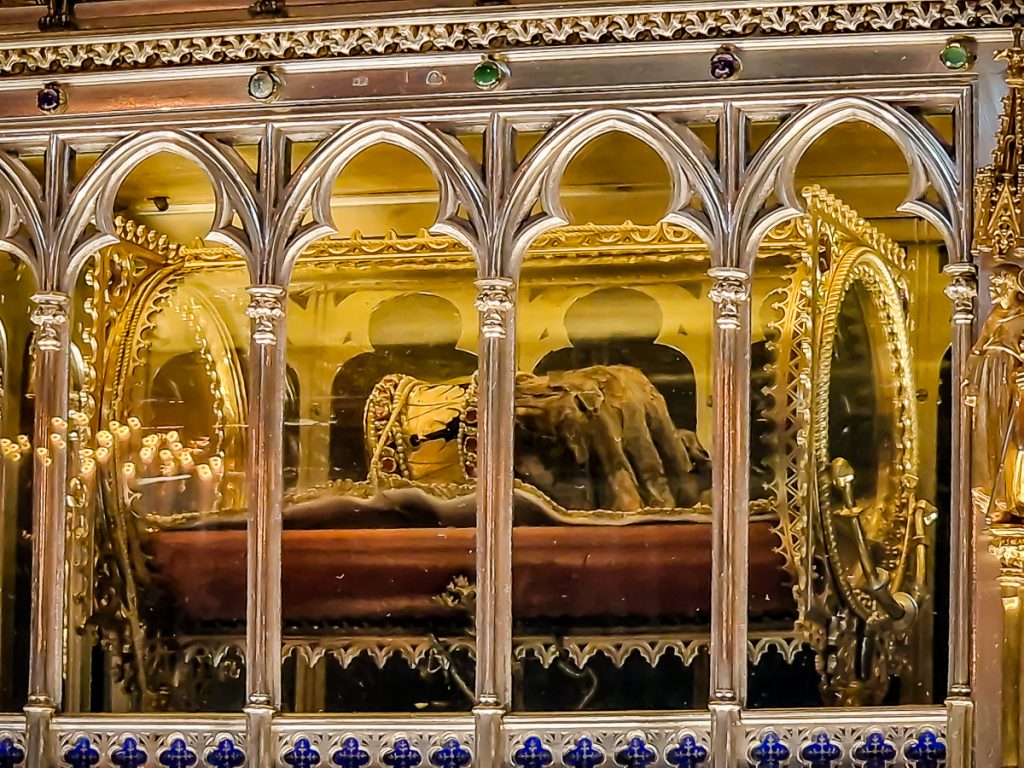
The Holy Right Hand of Saint Stephen!
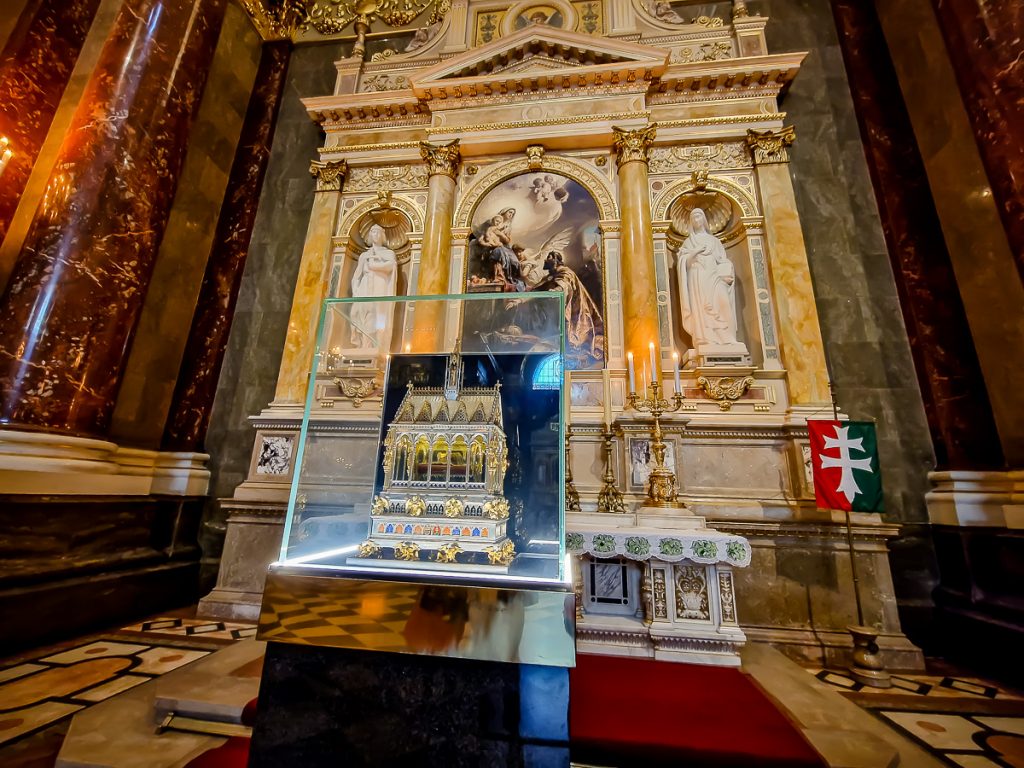
About 40 years after the death of Saint Stephen, in 1038, he was canonized. Then, his right hand was found intact! Since then, he has been venerated by the Hungarian people.
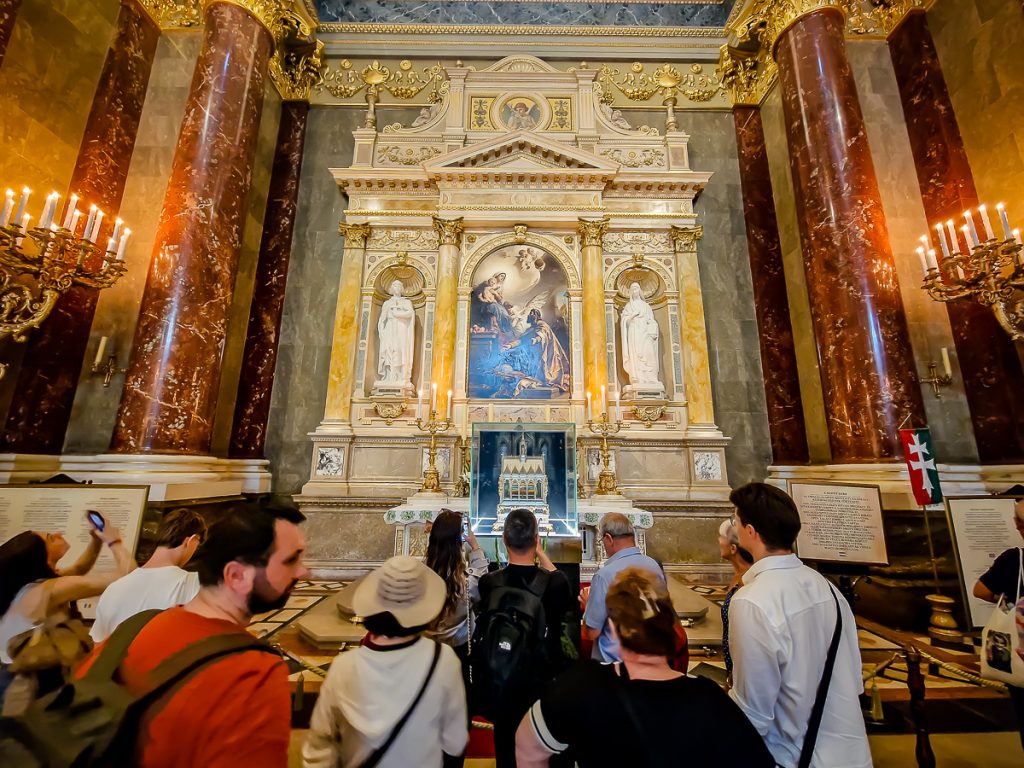
Believe it or not, these relics were kept for a time in our region, Bihor, among other places they traveled to, before being returned to the Hungarians in 1945.
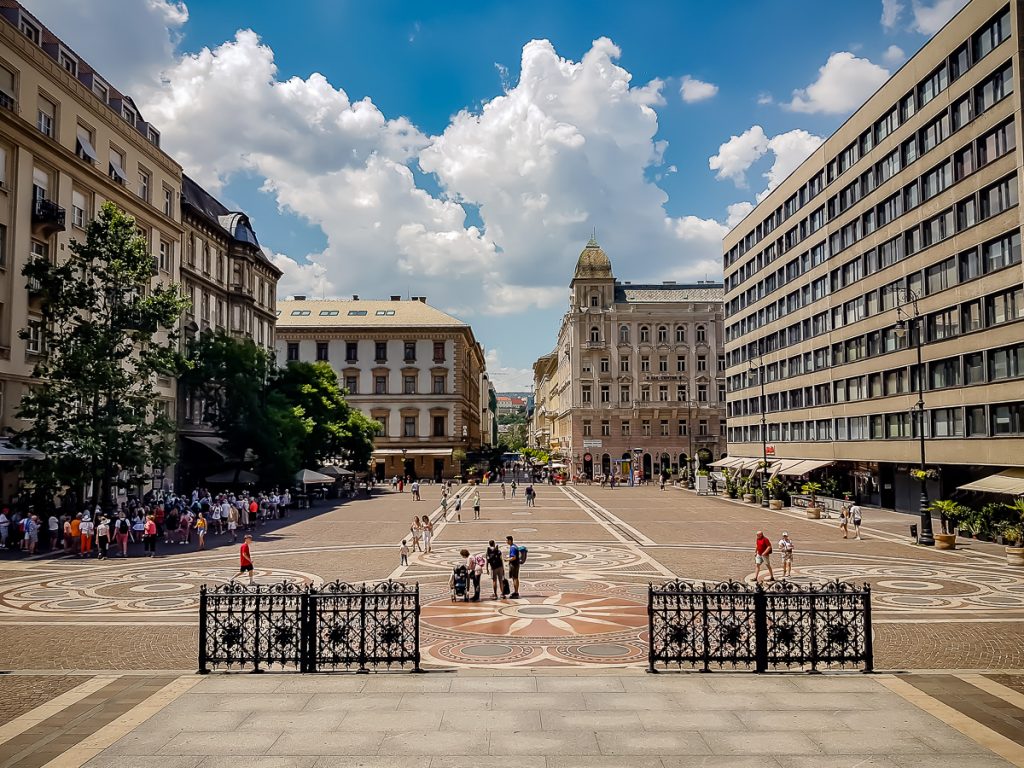
As I exit, I admire the large square filled with tourists crowded under the shade of a few trees, and I head towards the tourist bus, whose main stop is right behind the Basilica.
I embark on a full tour, lasting 90 minutes. I hold on to my ticket carefully, not just because it’s valid for 24 hours, but also because it allows me free access during the day on the boats that offer one-hour rides on the Danube! (If you want to go in the evening, you pay a small difference.)
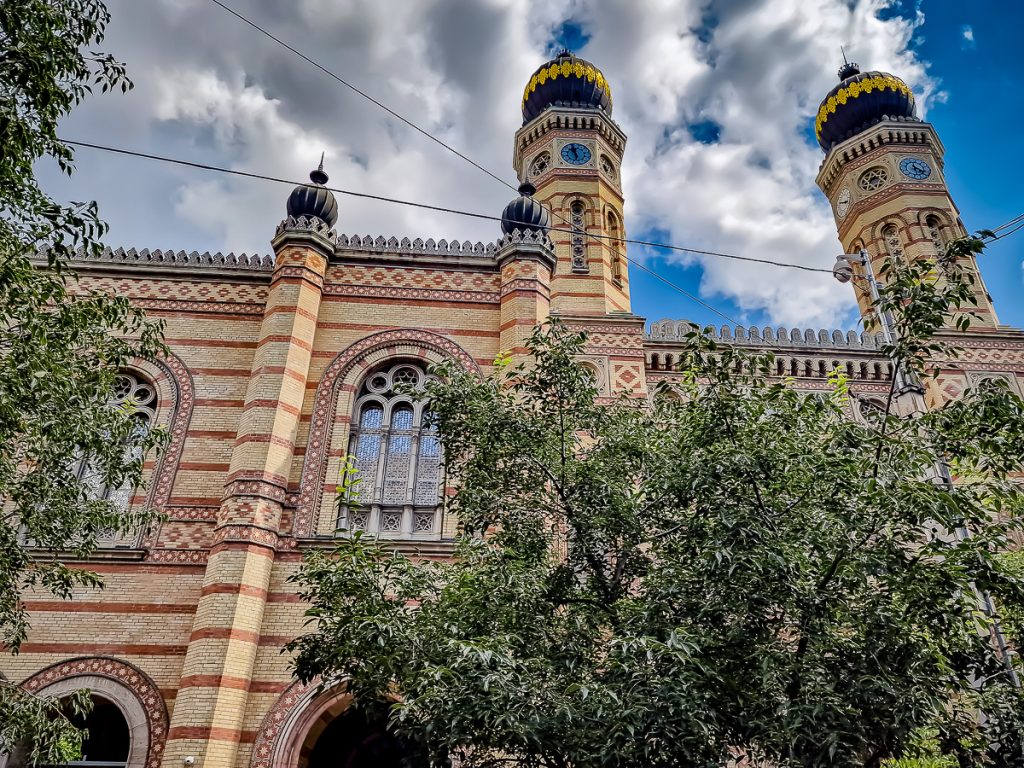
From the bus, I take a photo of the GREAT SYNAGOGUE, declared the most beautiful synagogue in the world!
It is the second-largest synagogue in the world, after the one in New York.
I didn’t get a chance to visit it, but the building looks really spectacular!
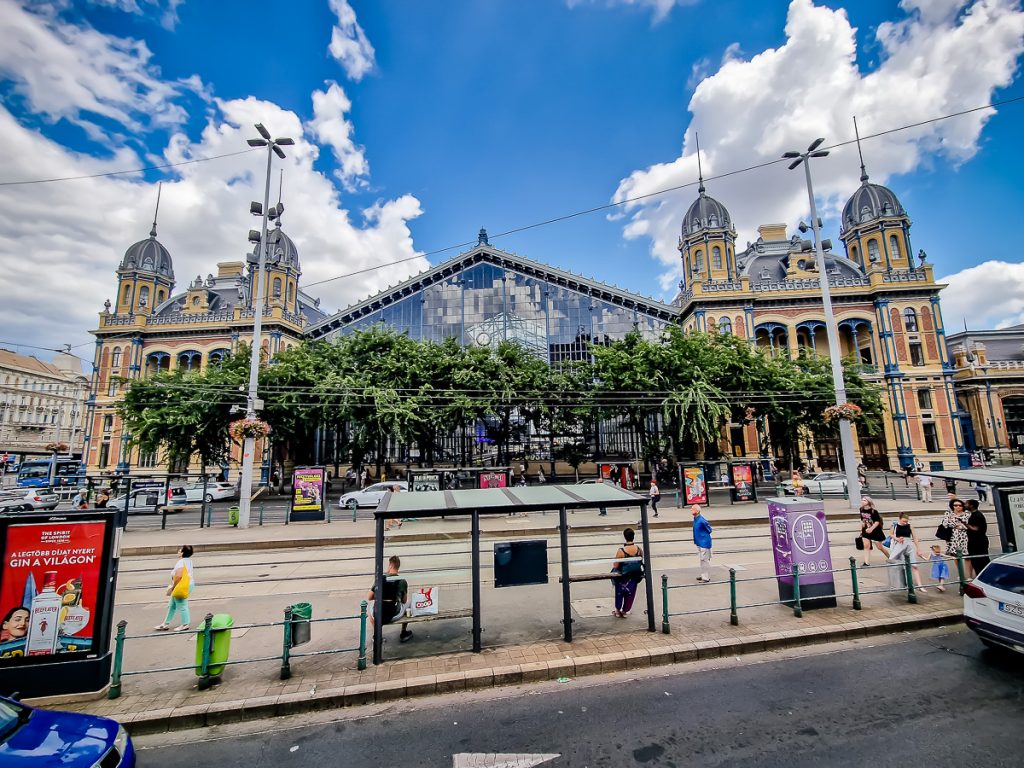
I also really like the NYUGATI STATION, which I photographed from the bus as well!
The truth is, I saw a lot of beautiful buildings, with unique architecture, almost everywhere I went through Pest.
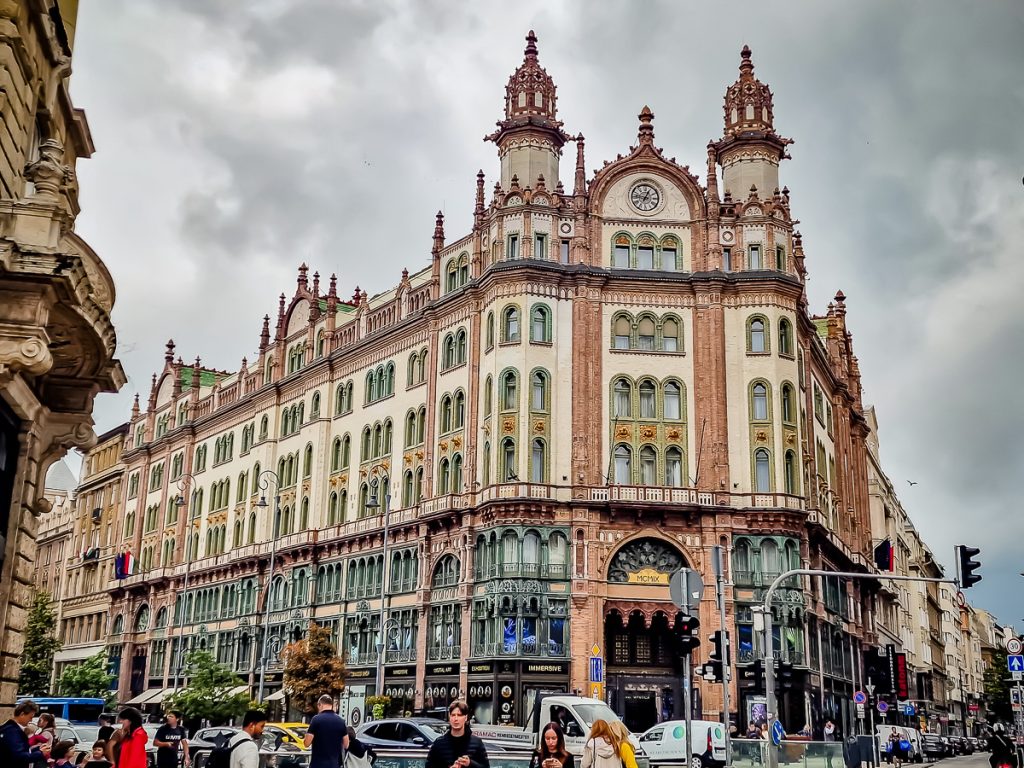
Truly spectacular is the building that houses the luxury hotel Párisi Udvar (the Paris Court)!
The original building was, in fact, a commercial passage, inspired by the Parisian shopping arcades. After extensive restoration between 2016 and 2019 – a restoration that did not affect the Moorish, Art Nouveau, and Neo-Gothic elements, nor the ornamental details – the building became part of the famous Hyatt brand.
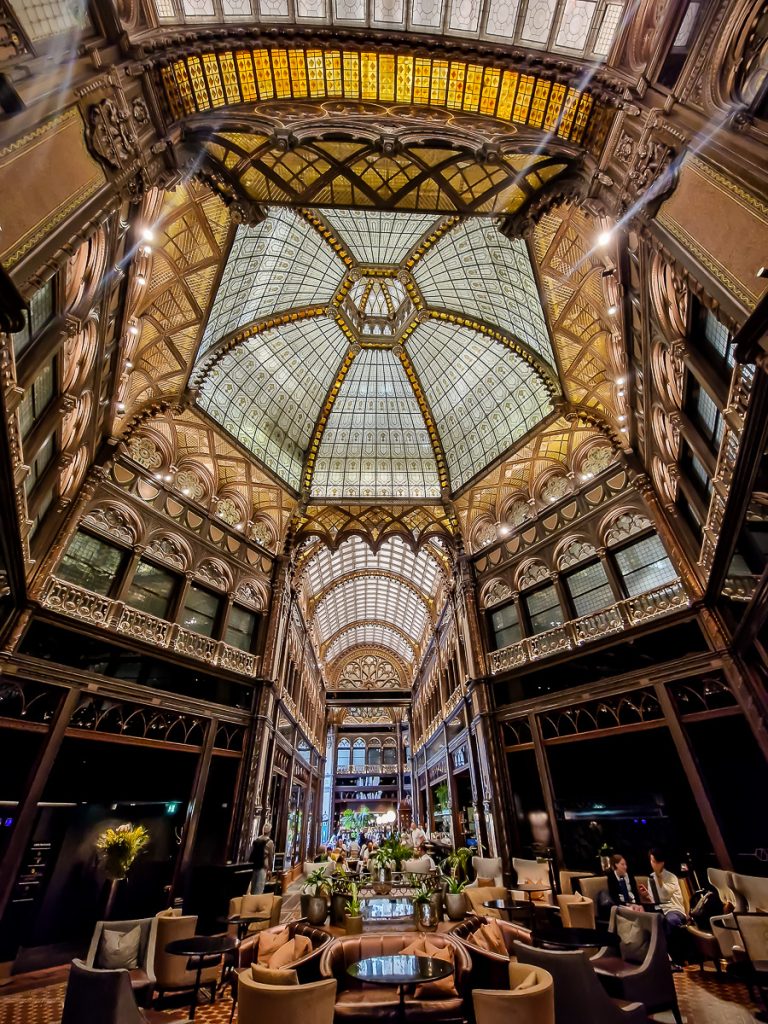
I went inside to see it for myself – it’s wow! You can sit and admire every bit of it, from the stained-glass windows to the wooden details, while enjoying something at the hotel’s brasserie.
We pass through Andrássy Avenue with the tourist bus, which dates back to 1872 and has been a UNESCO World Heritage Site since 2002.
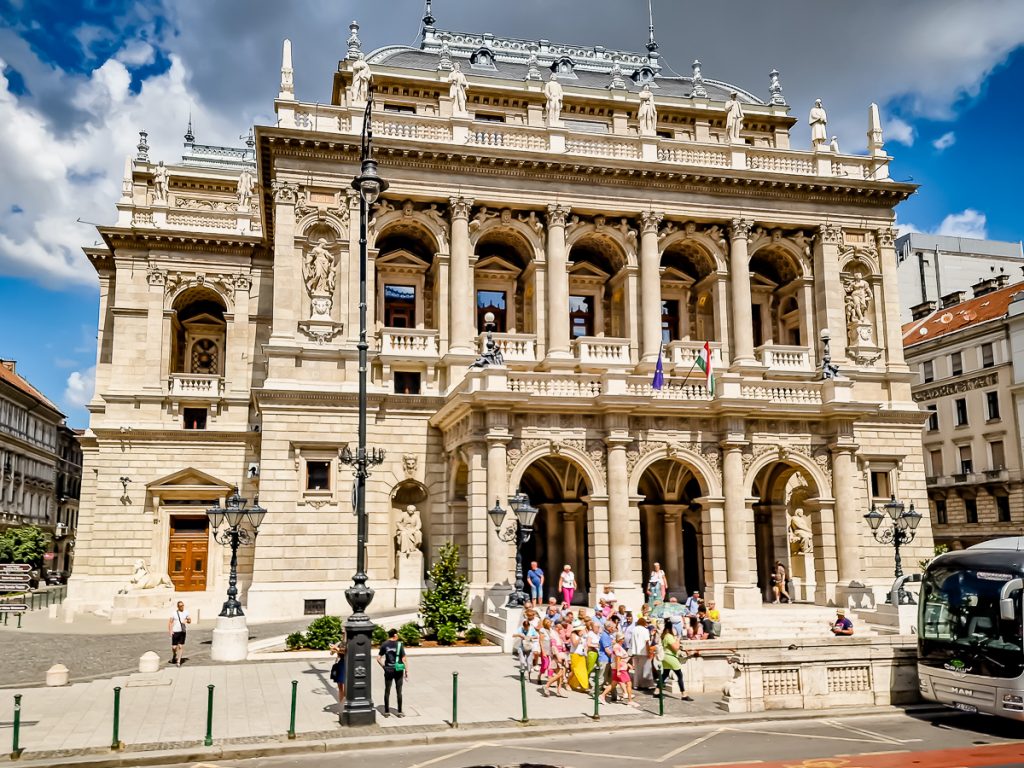
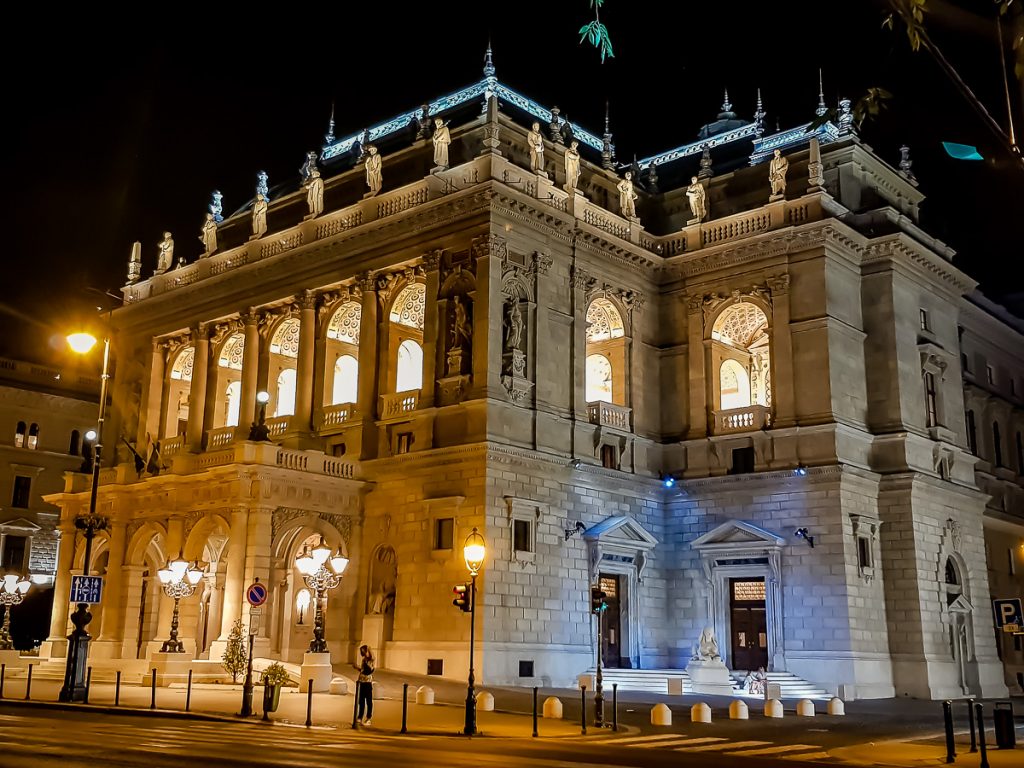
A luxury avenue, with stores to match, and many historic buildings, including the OPERA – a superb building that I saw both by day and by night.
HEROES’ SQUARE
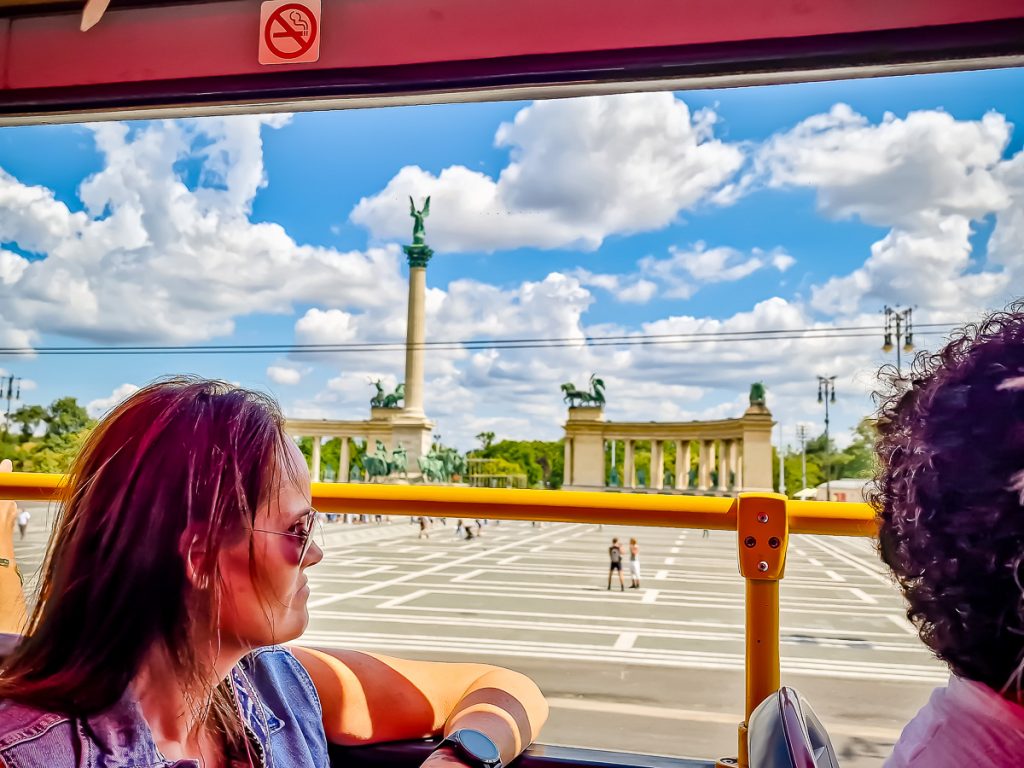
At the end of the street, Heroes’ Square opens wide in front of us, which is also a UNESCO World Heritage Site.
The square was built around the Millennium Monument to celebrate 1,000 years of Hungarian civilization.
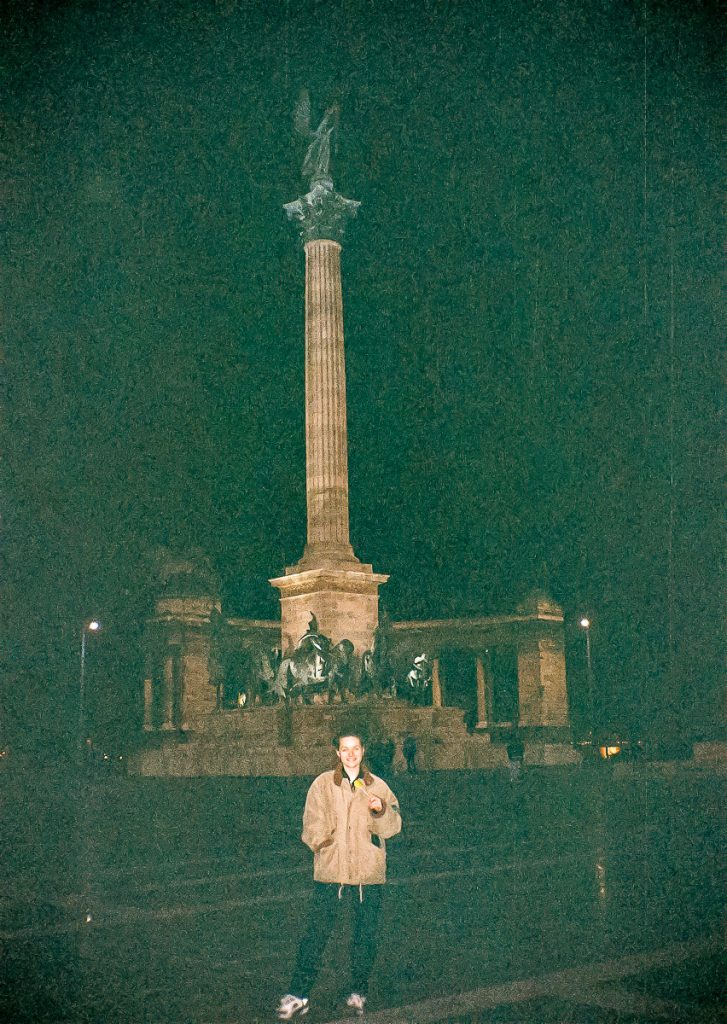
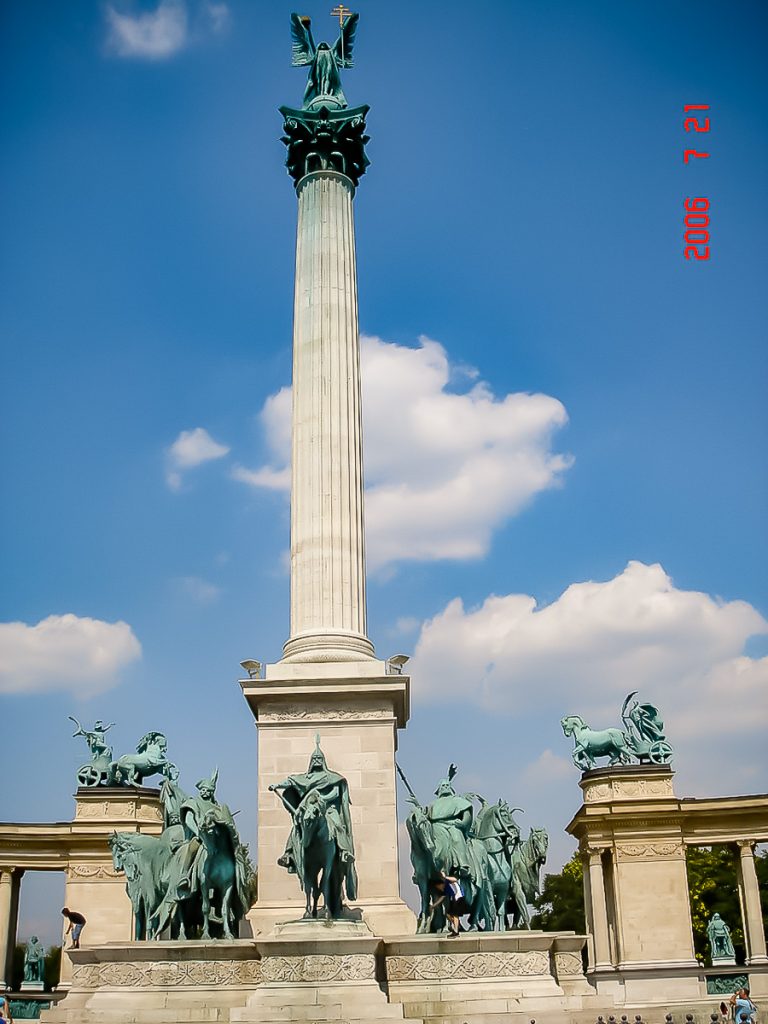
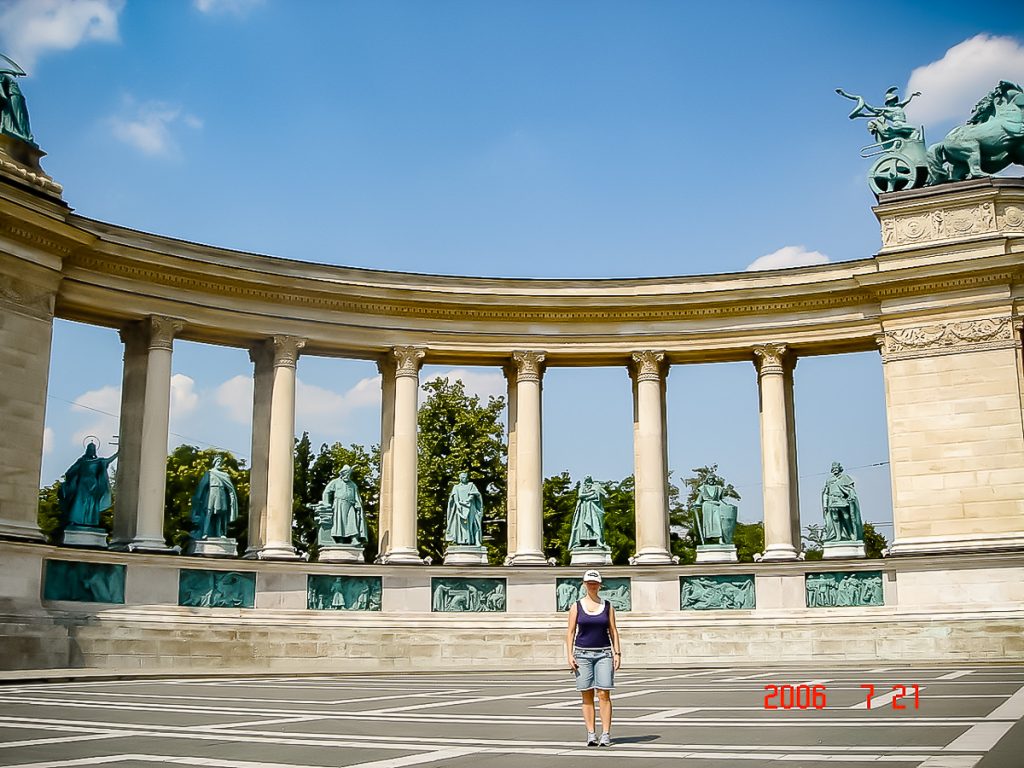
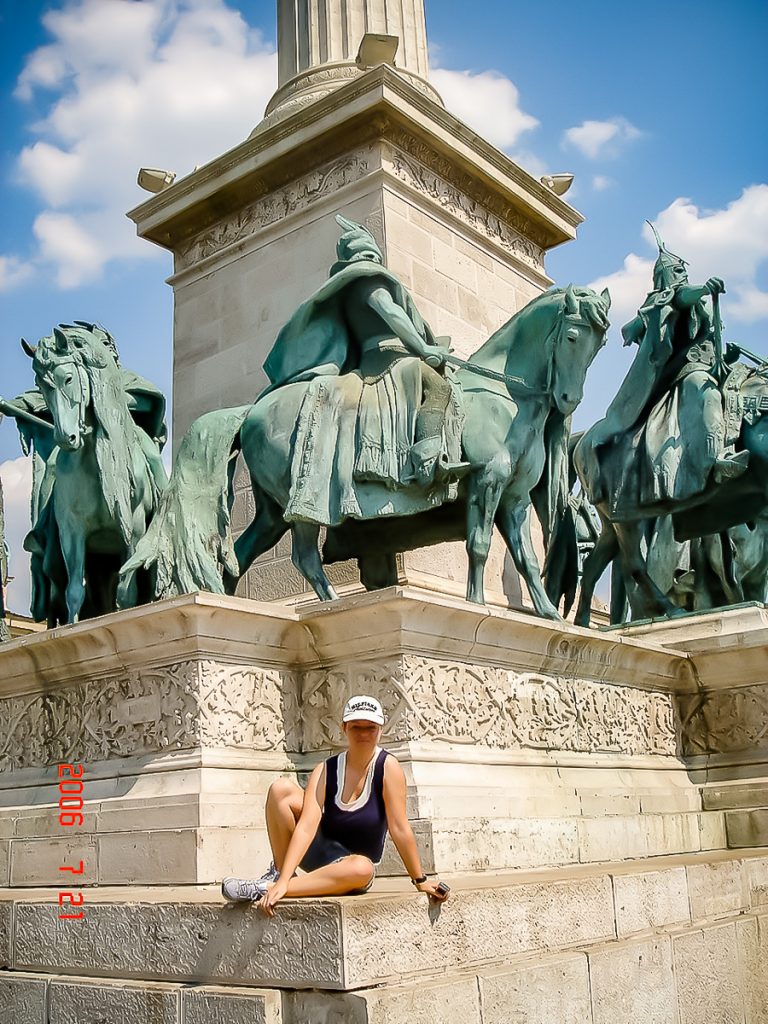
Here you “meet” the main Hungarian rulers – from the Hungarian chieftains to Emperor Franz Joseph. And in the middle stands a tall column topped by the statue of the Archangel Gabriel, holding the Crown of Saint Stephen.
Right beneath the square, there is a metro station, so you can easily get here by metro. Oh, by the way, listen to this!
THE BUDAPEST METRO
Did you know that the Budapest metro is the second oldest metro in the world, after the one in London?!? (And, practically, the first in continental Europe?)
I had no idea; I only found out about this three years ago.
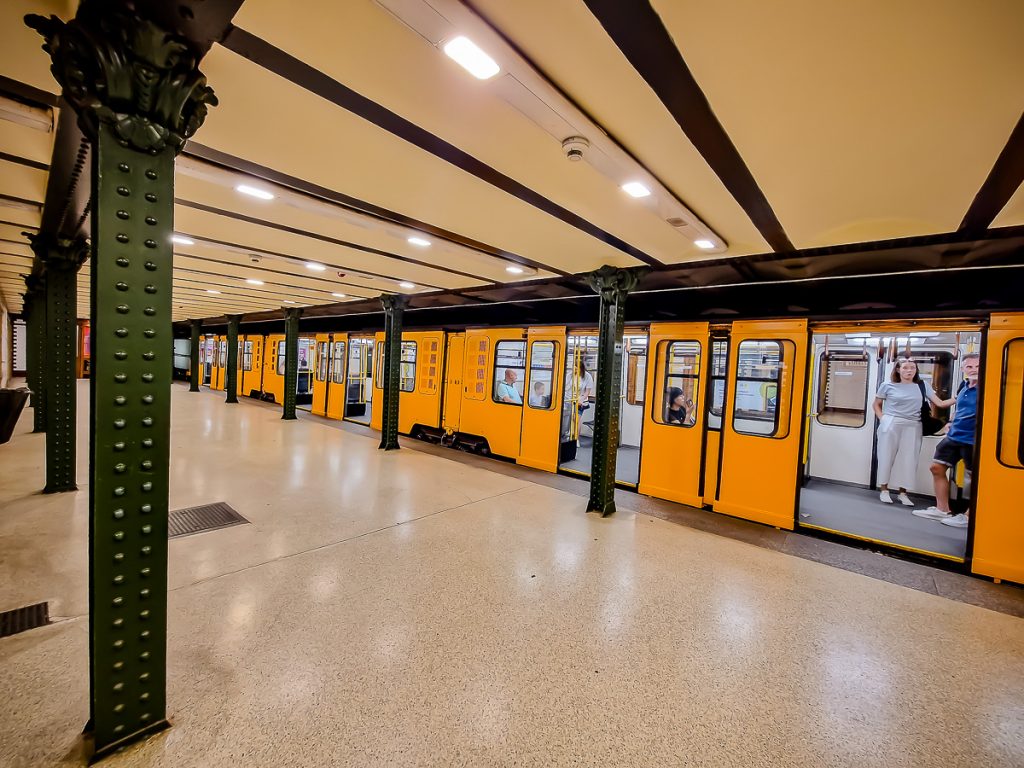
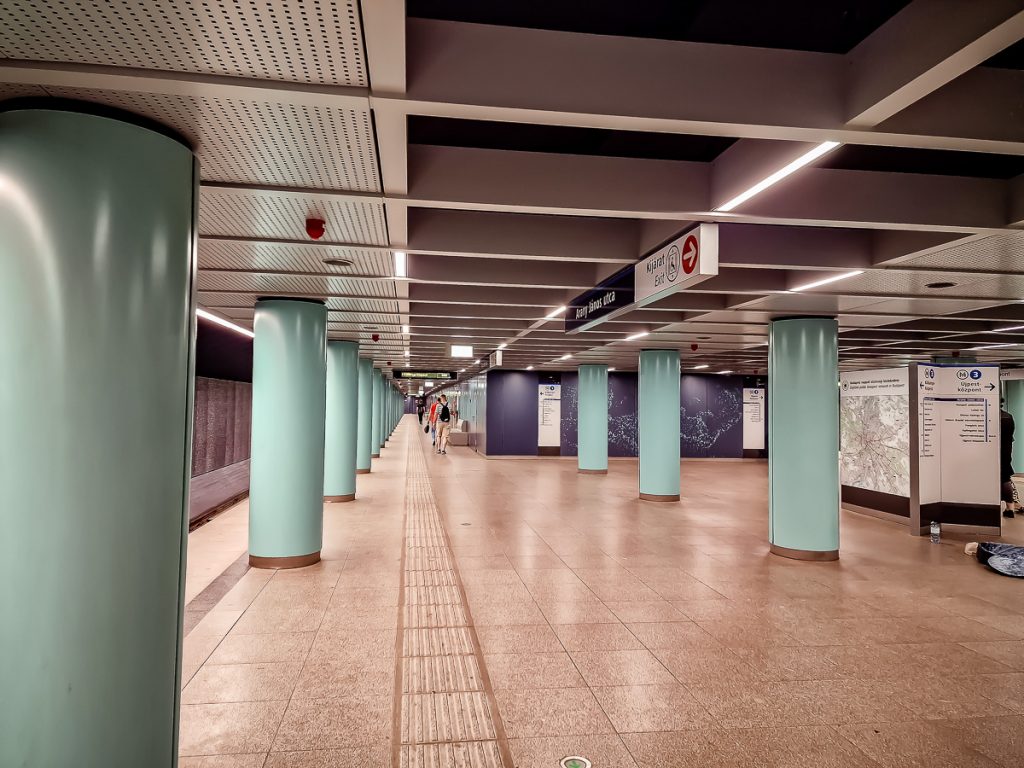
Built in 1896 (!), the Budapest metro now has 4 lines that run through the city. Some sections are served by old, picturesque trains, while others have modern trains. But everything looks impeccable, at least in the areas I visited.
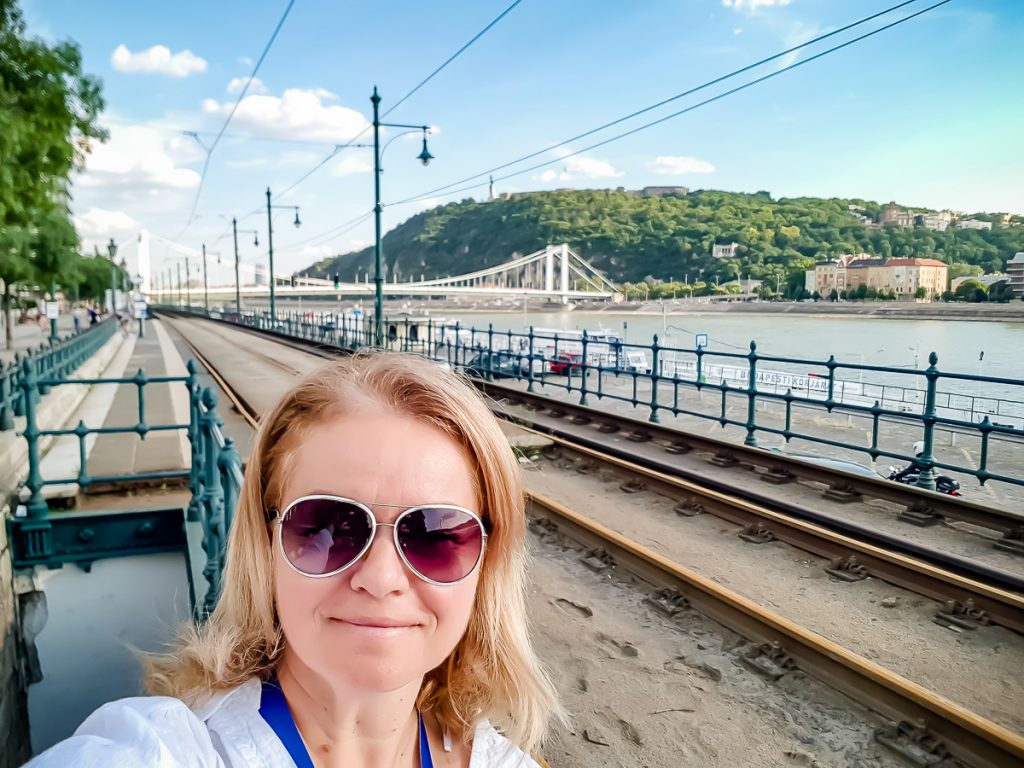
And speaking of transport, a few trams run right along the Danube. The ride is really cool! As for the cost, I paid 4,500 forints (~11,5 euros) for a pack of 10 public transport tickets, bought from a machine in the metro station, in September 2025. It’s more economical that way. Otherwise, a single ticket costs 500 forints, and if you buy it on the spot, it costs 700 forints.
With these tickets, you can travel by metro, tram, or bus.
THE BRIDGES OF BUDAPEST
There are 9 bridges that connect Buda to Pest.
When I think about it, I saw Budapest framed between 5 of them:
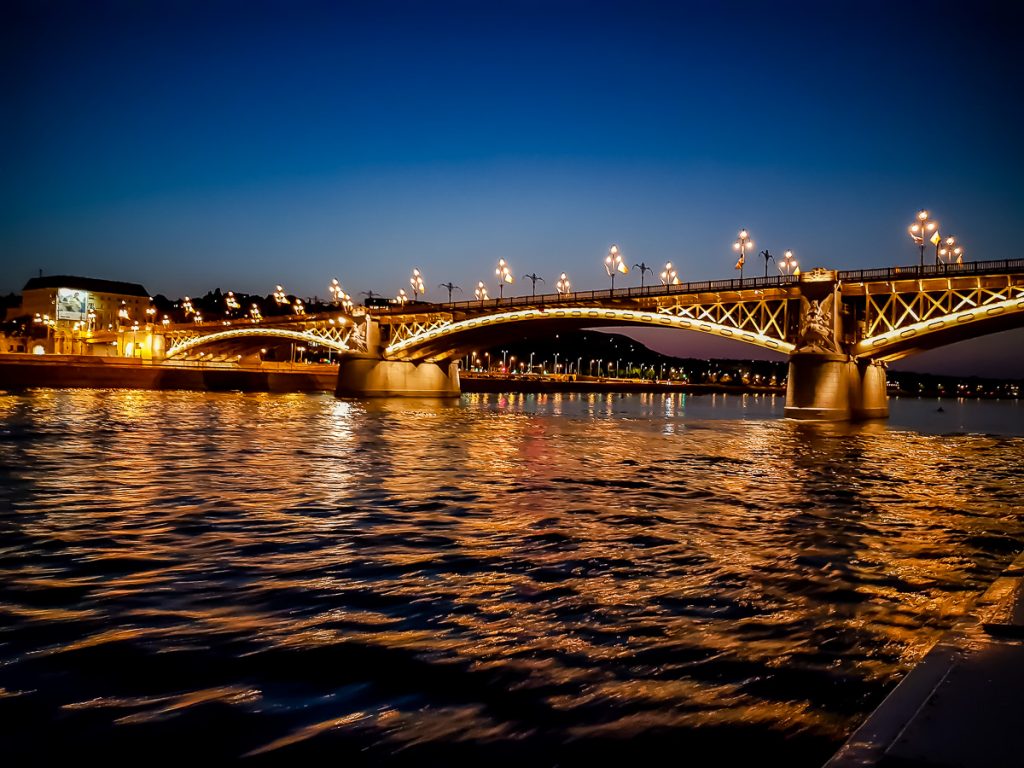
One of the endpoints for boat rides. Right before Margaret Island.
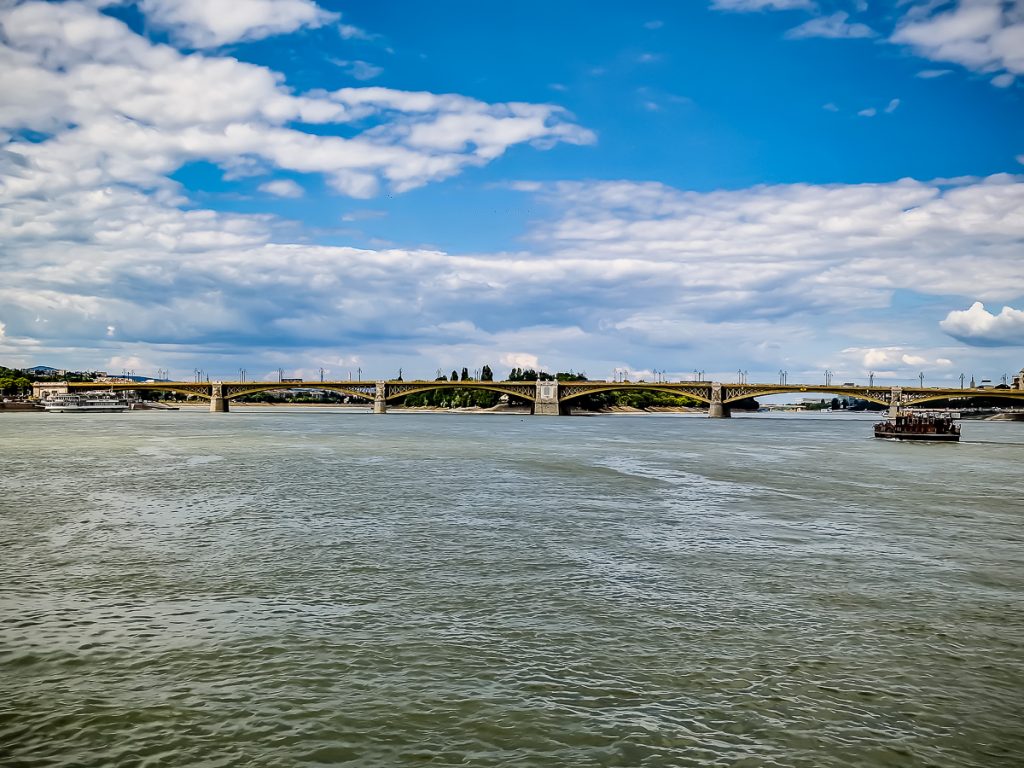
The island is, practically, a huge park located right in the middle of the Danube! It has jogging trails, pools, musical fountains, a small zoo, and the ruins of a monastery. (I didn’t get to visit it.)
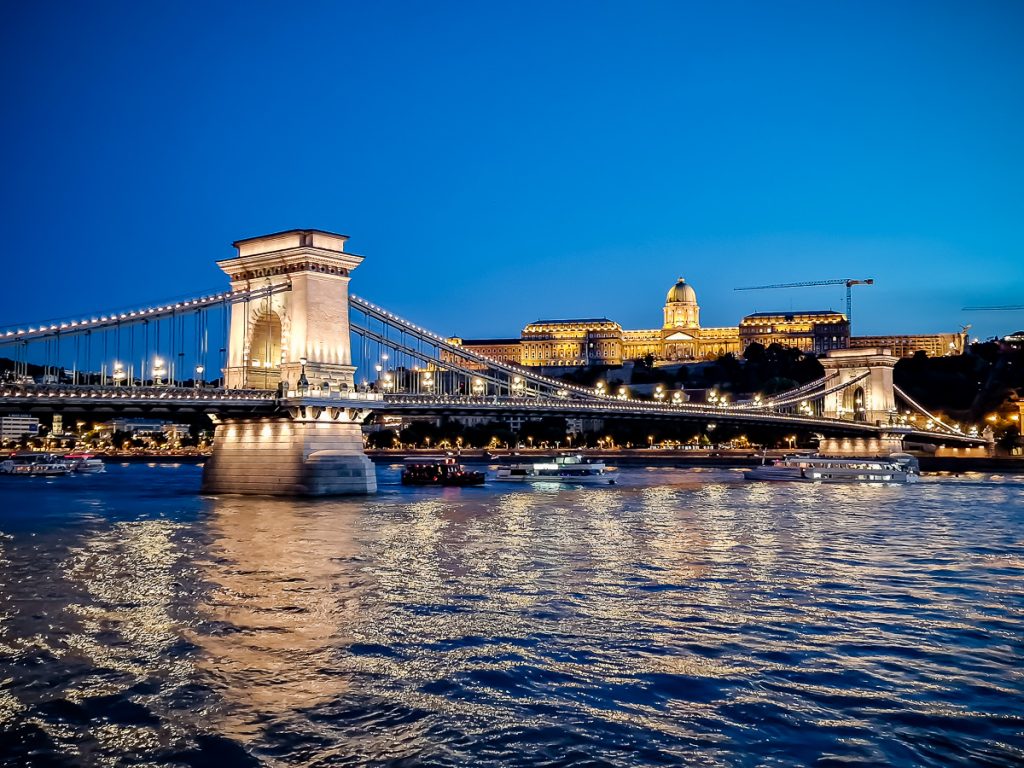
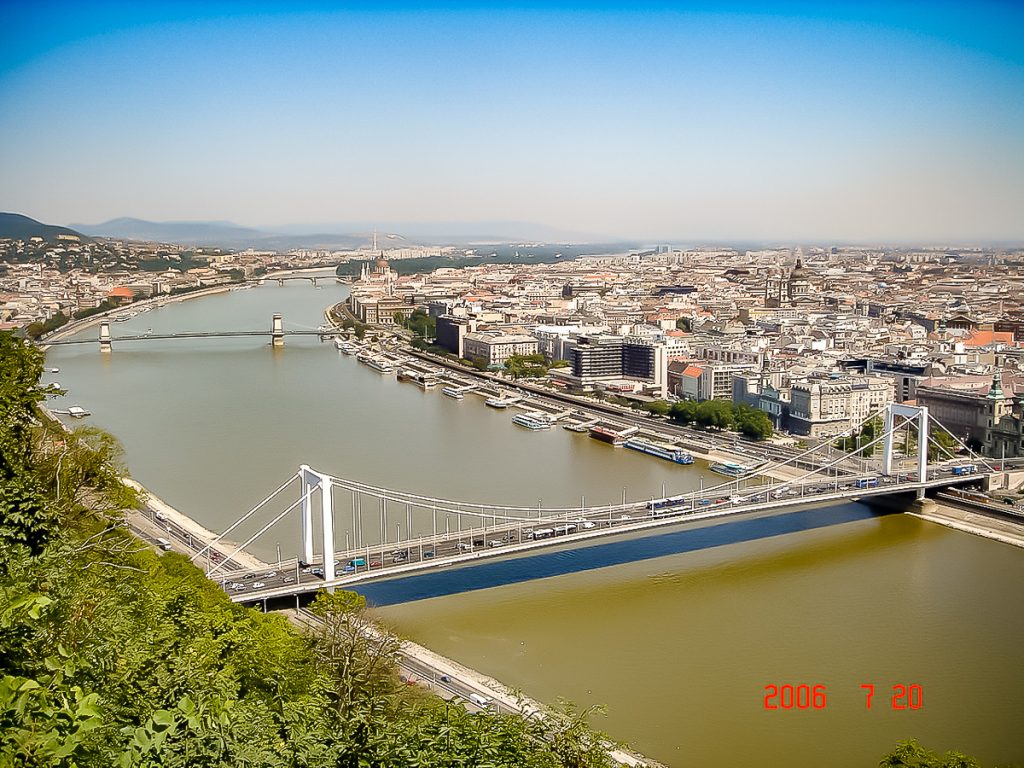
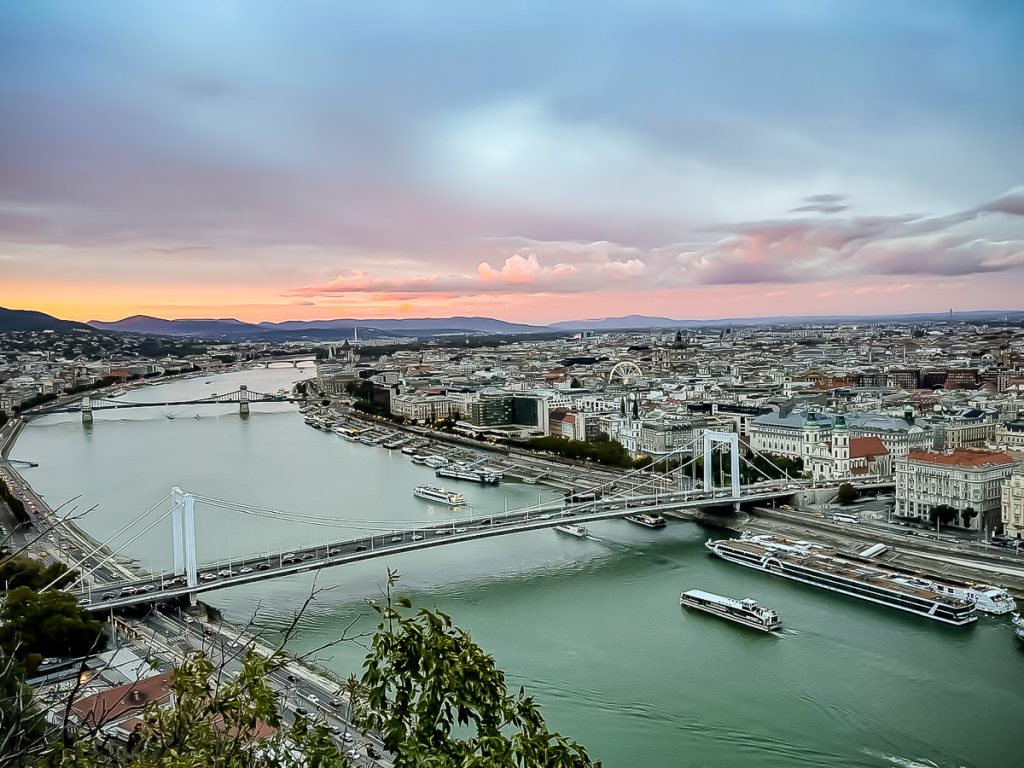
Elisabeth Bridge, seen from The Citadel
Notice the difference between 2006 and 2025? Well, there isn’t any!… These people haven’t built a single hideous building anywhere!
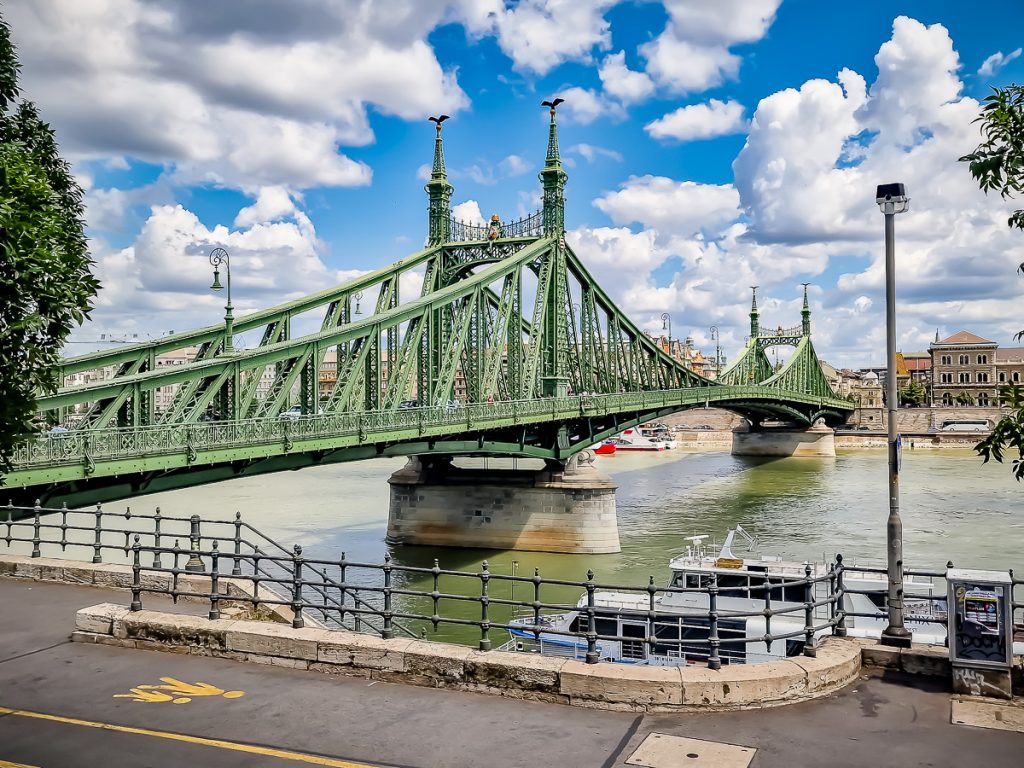

At Petőfi Bridge, the boats that offer Danube cruises turn around.
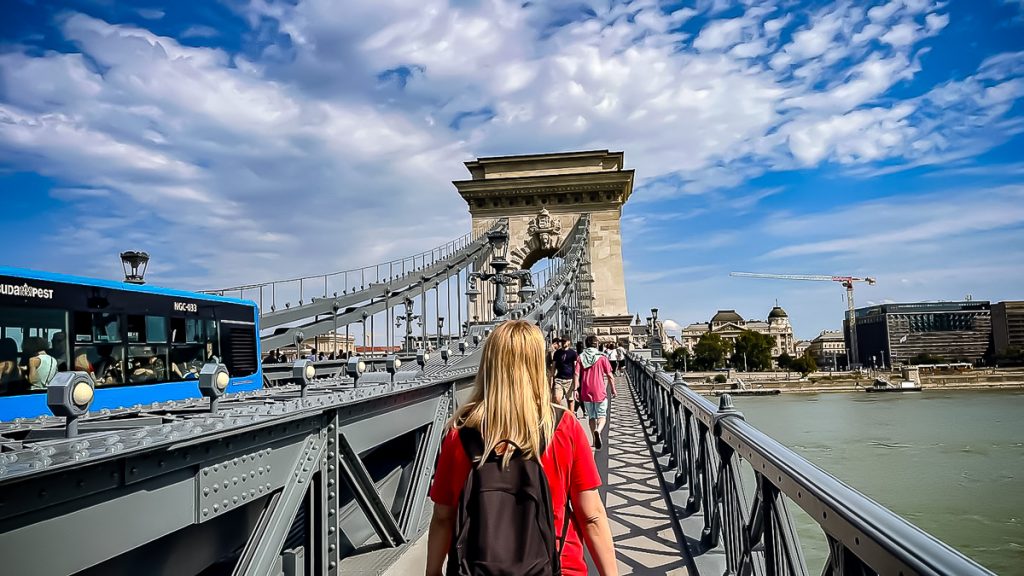
I’ve taken so many photos of the bridges, you’d think I work for the Roads and Bridges Department!
Of course, the most photographed one was the Chain Bridge.
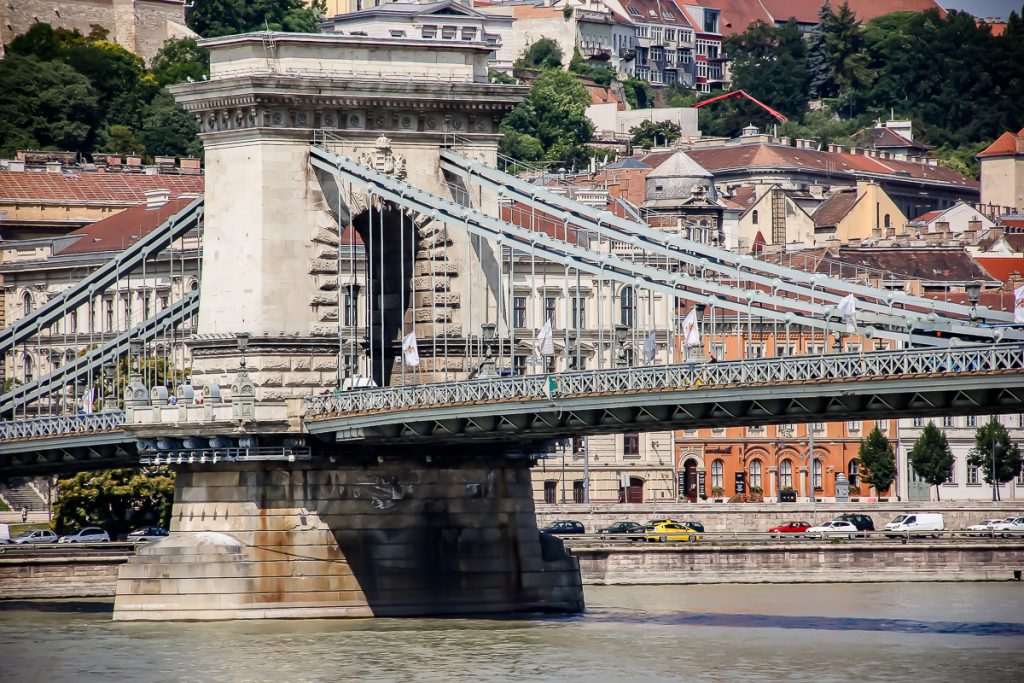
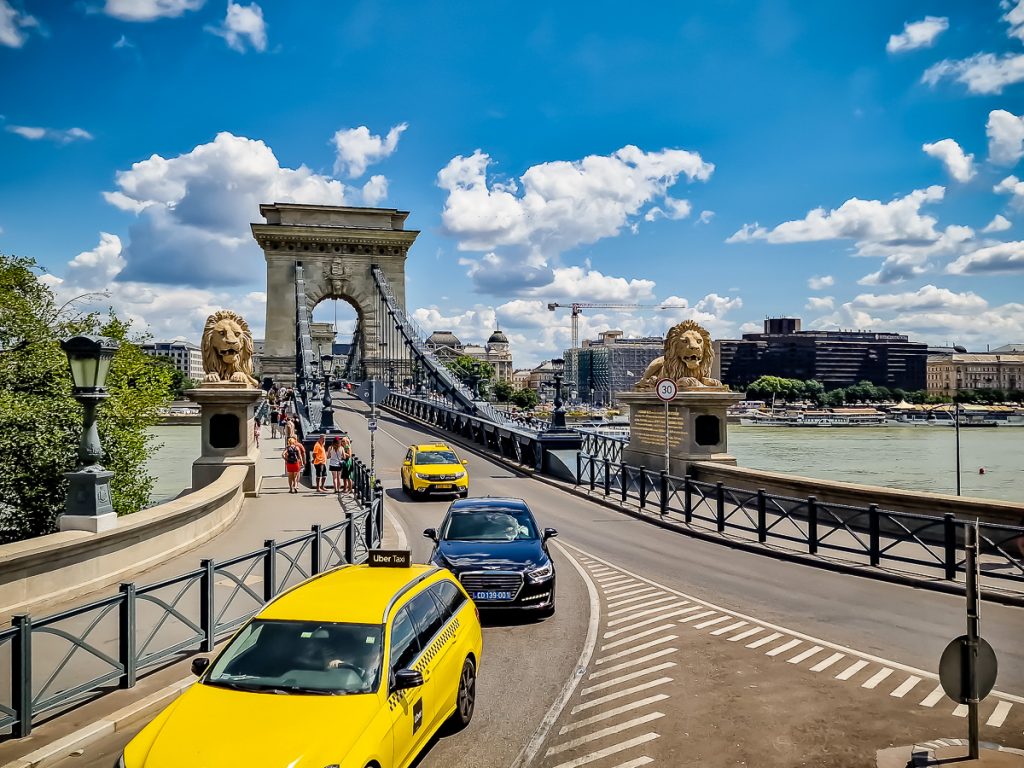
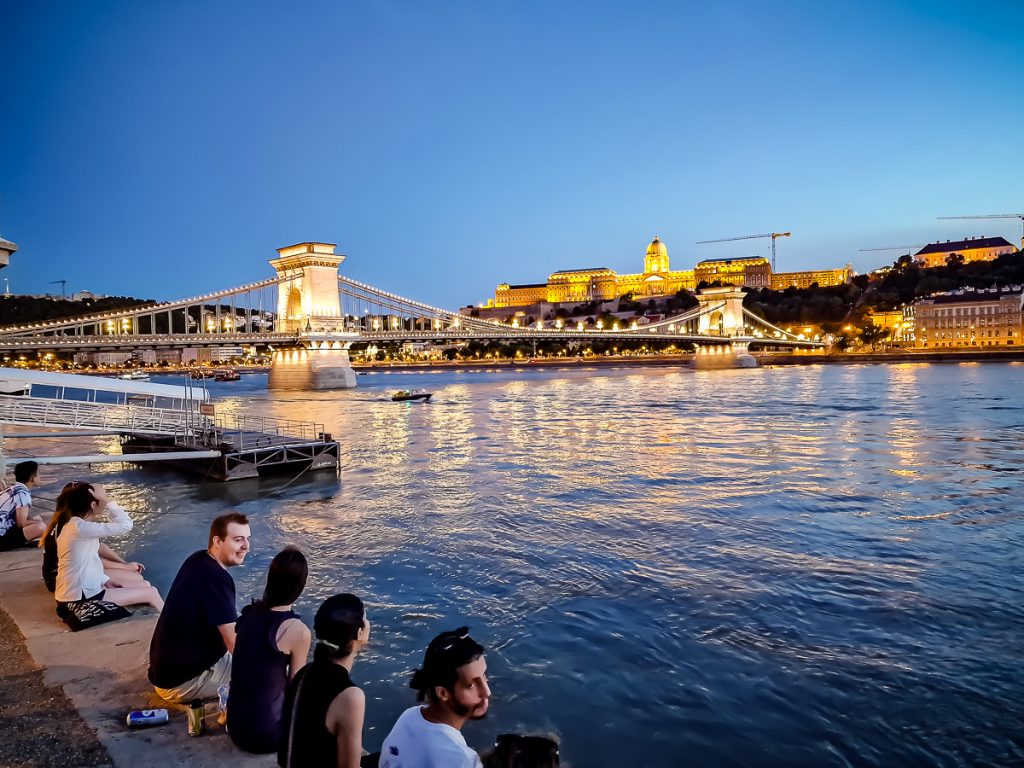
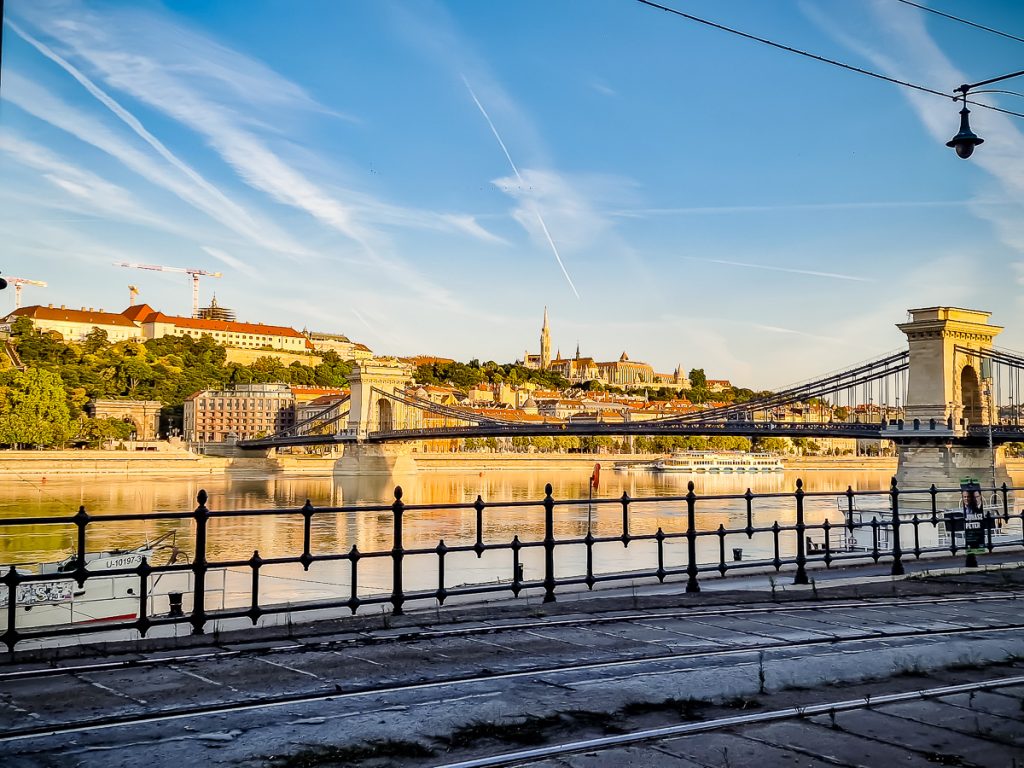
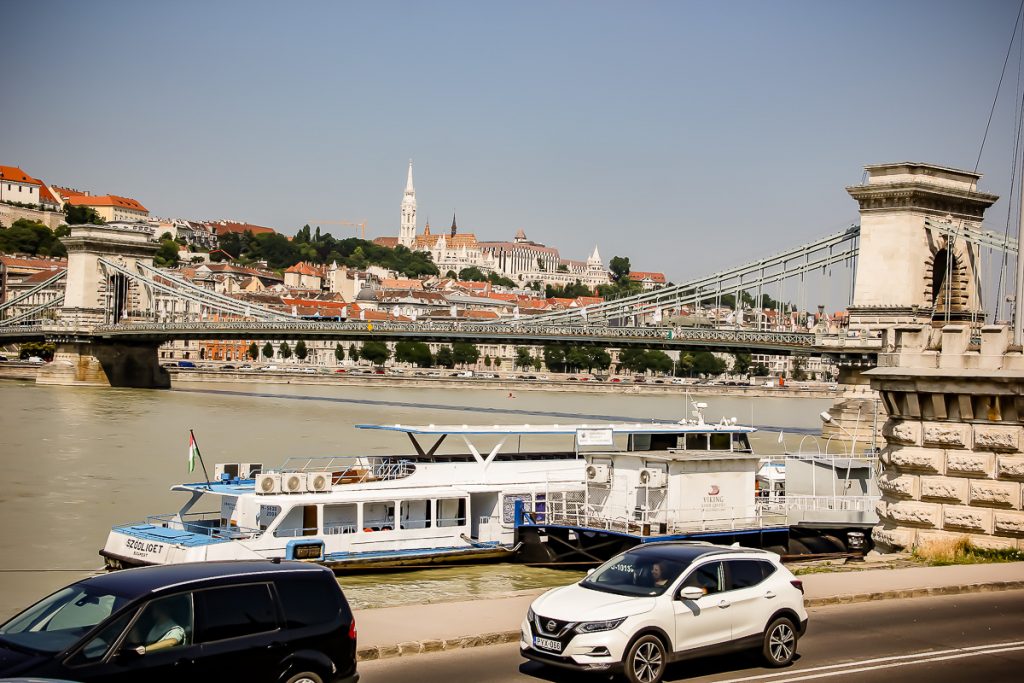
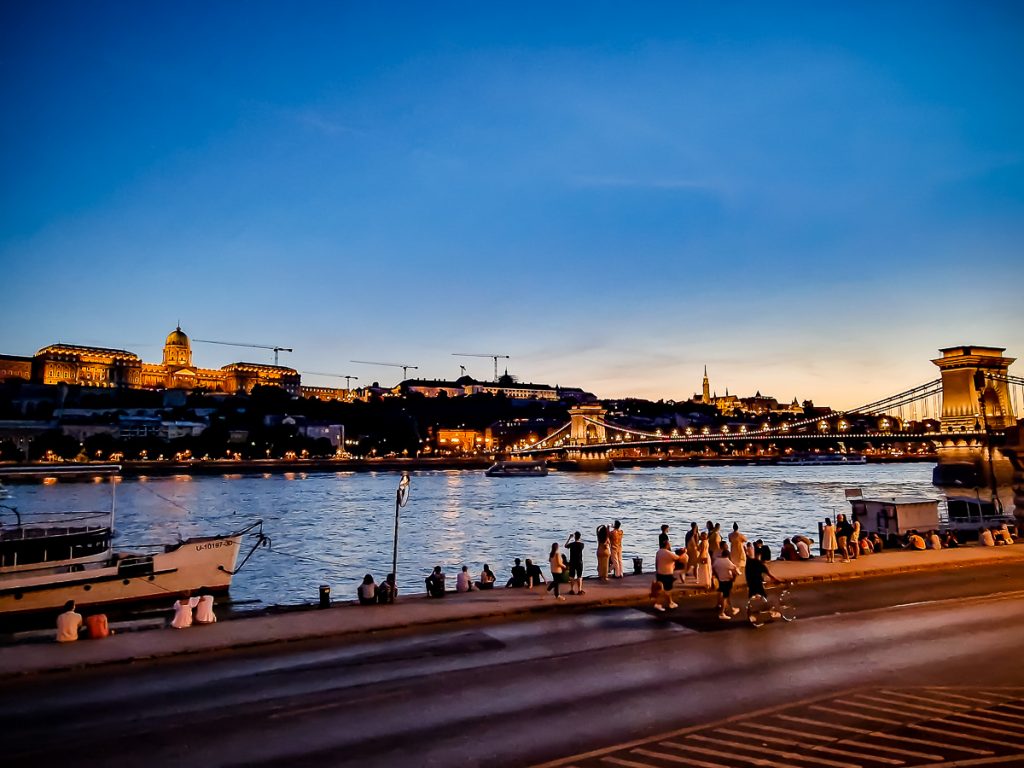
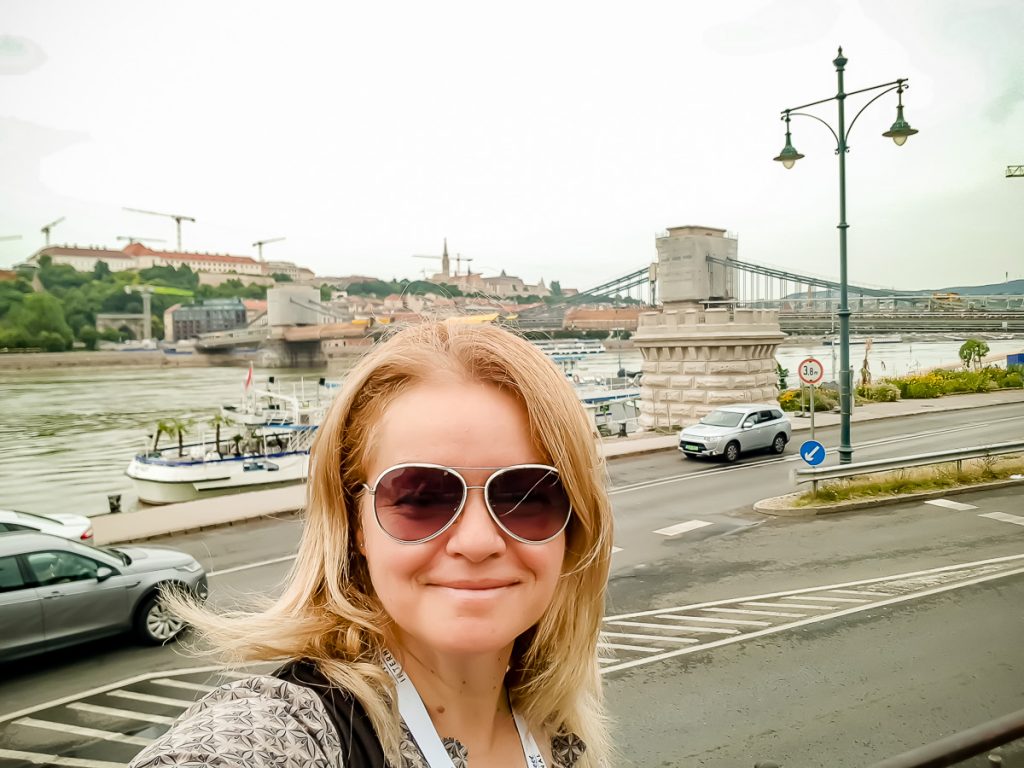
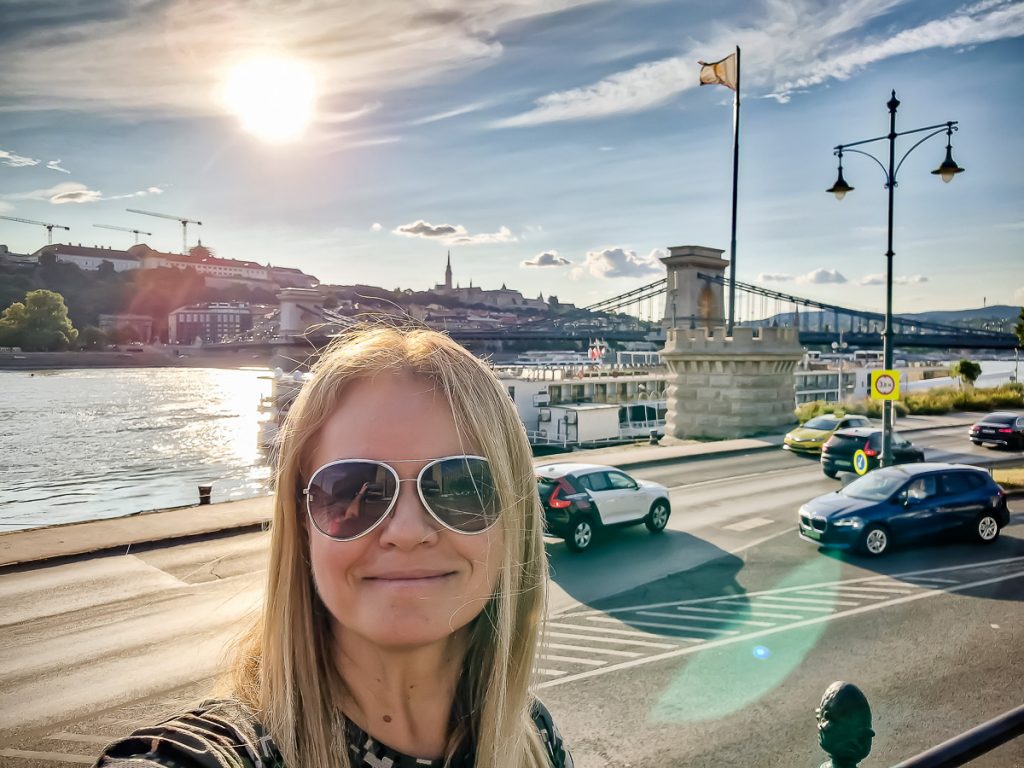
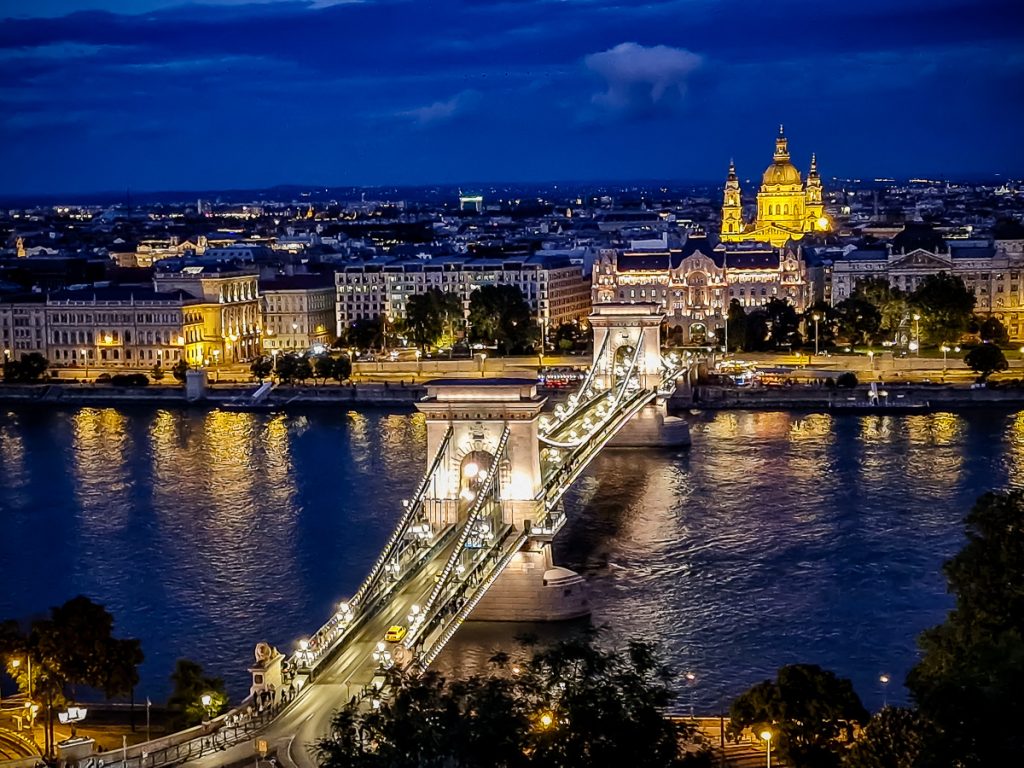
MADAME TUSSAUDS
I’ve visited Madame Tussauds in both Amsterdam and London. I wasn’t particularly eager to see the similar museum in Budapest, but I don’t regret doing it. Each one has its own charm and unique vibe.
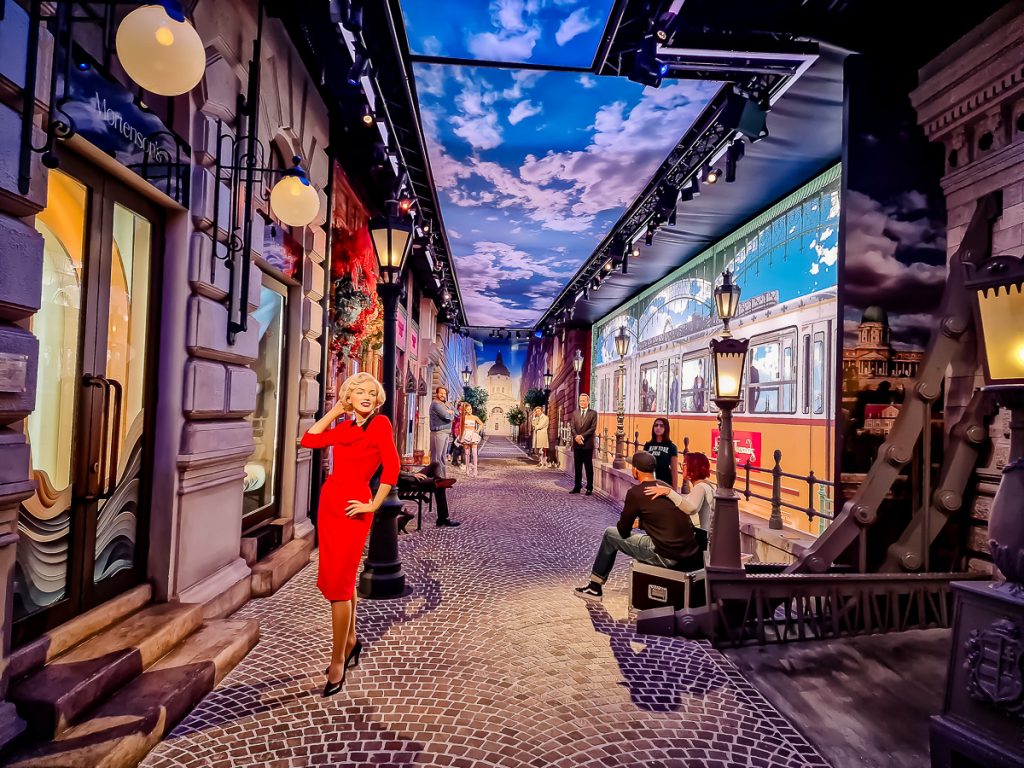
The ticket is quite pricey – 12,490 forints, about €32. However, before you pay, the staff invite you to spin a Wheel of Fortune, where you can win a 20% discount on your ticket.
I didn’t win 🙂 But I did get a 15% discount for the museum shop – though I didn’t buy anything…
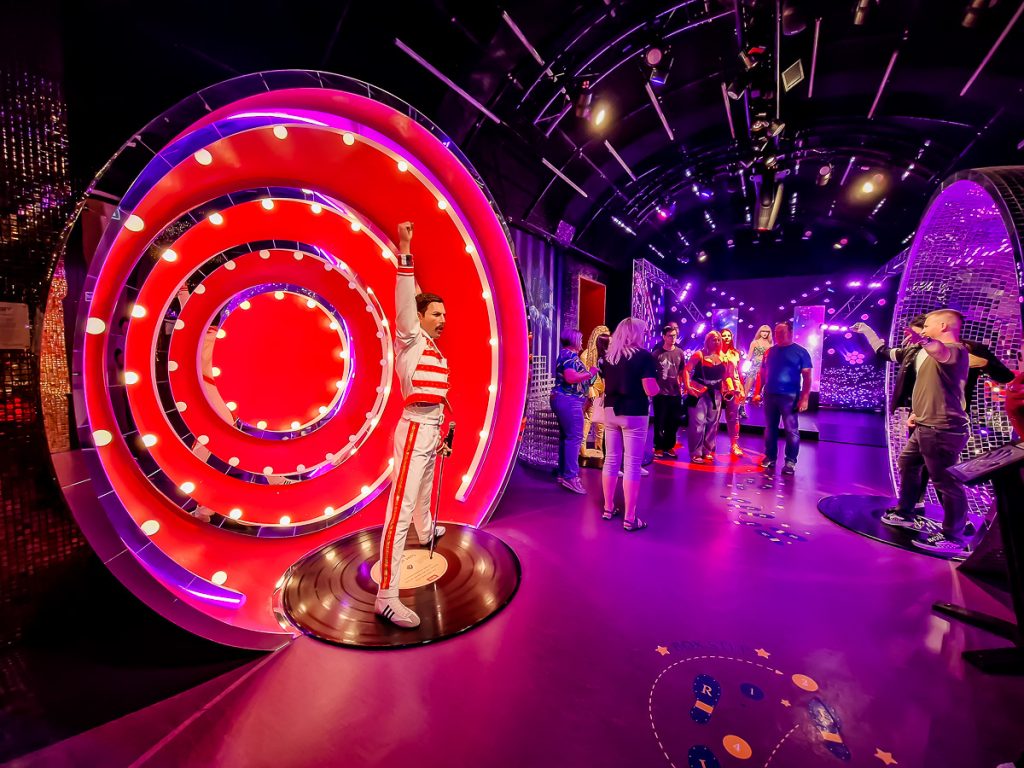

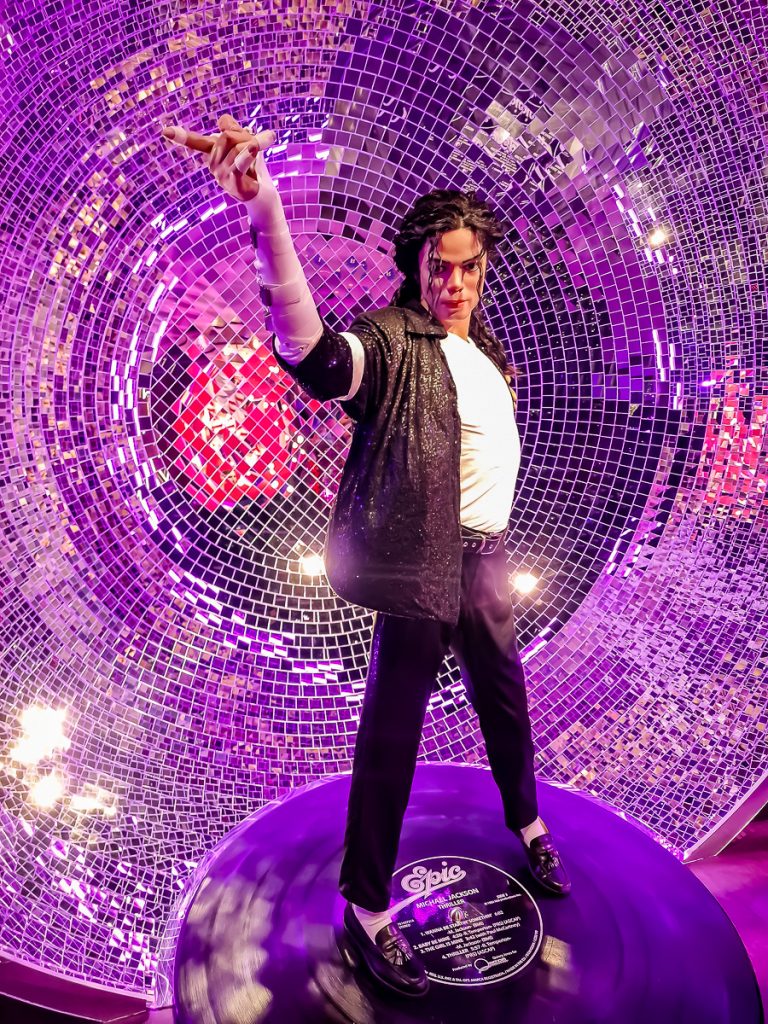
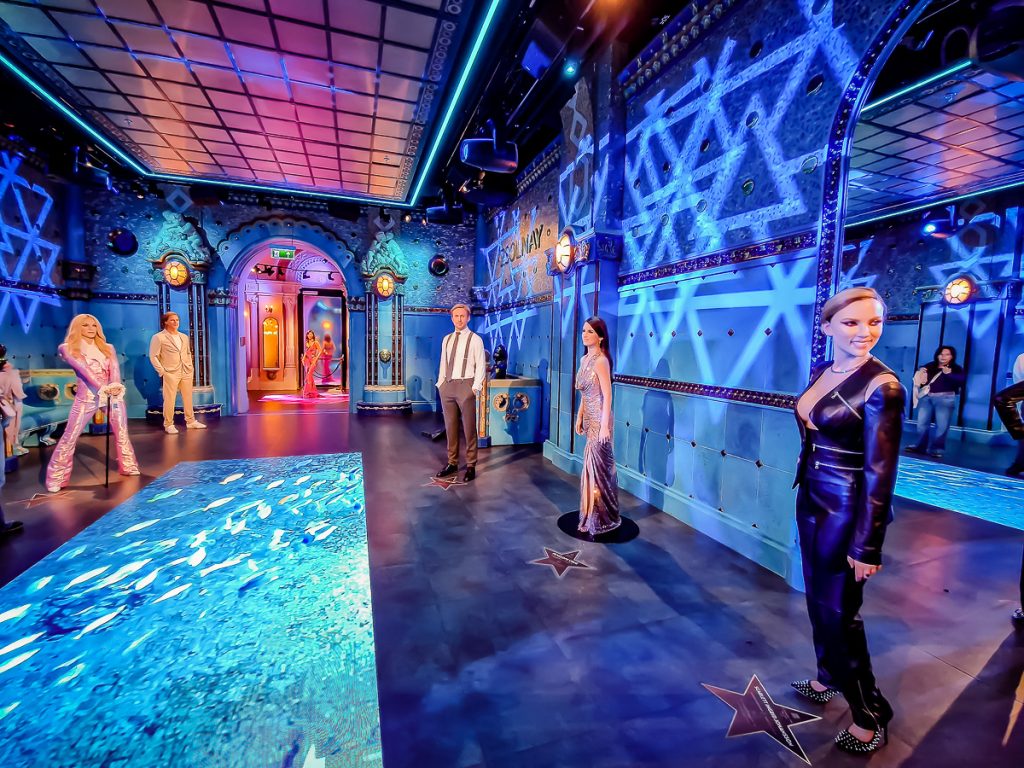
You’re instructed from the start not to touch the stars’ wax faces, but otherwise, you can take them by the arm, lean on their shoulder, or even get into bed with them… I made friends with a few of them on the spot 🙂
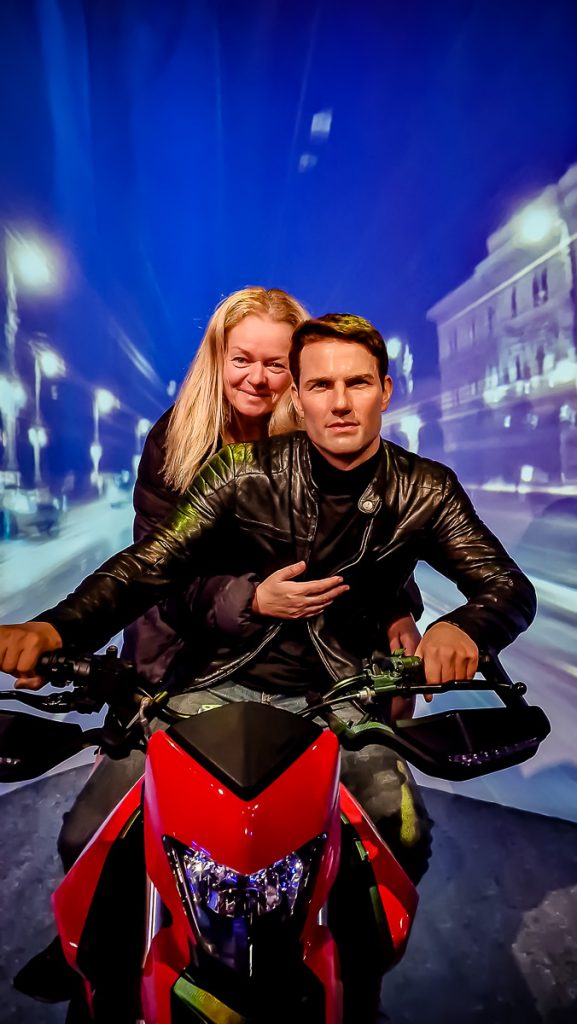
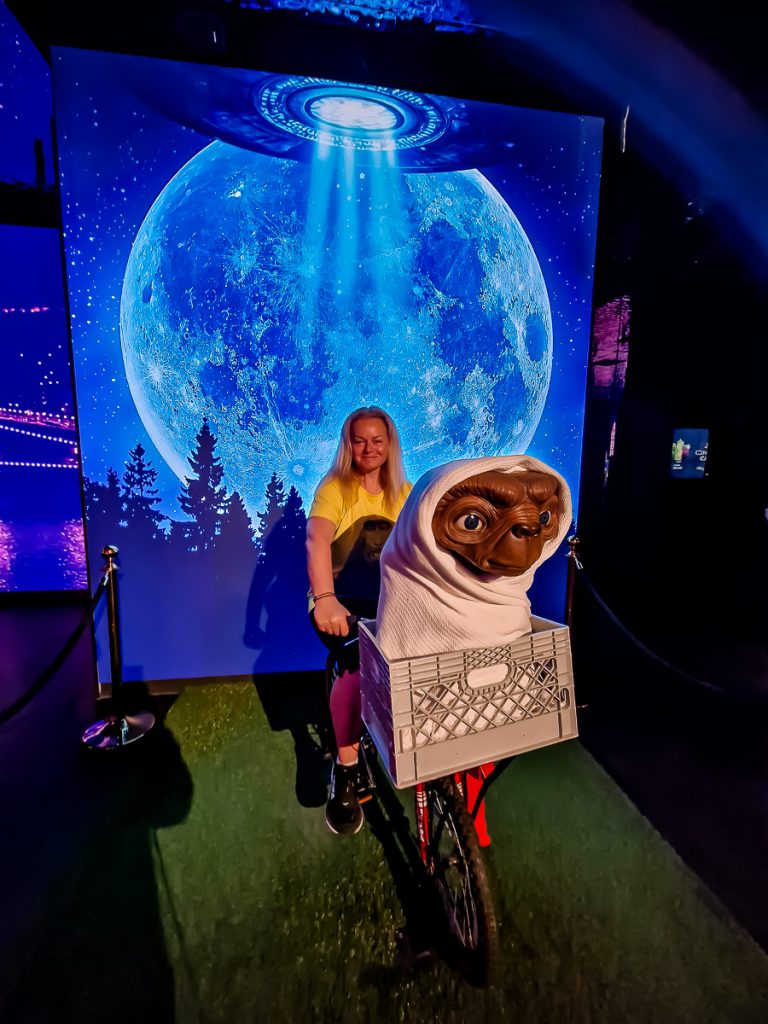
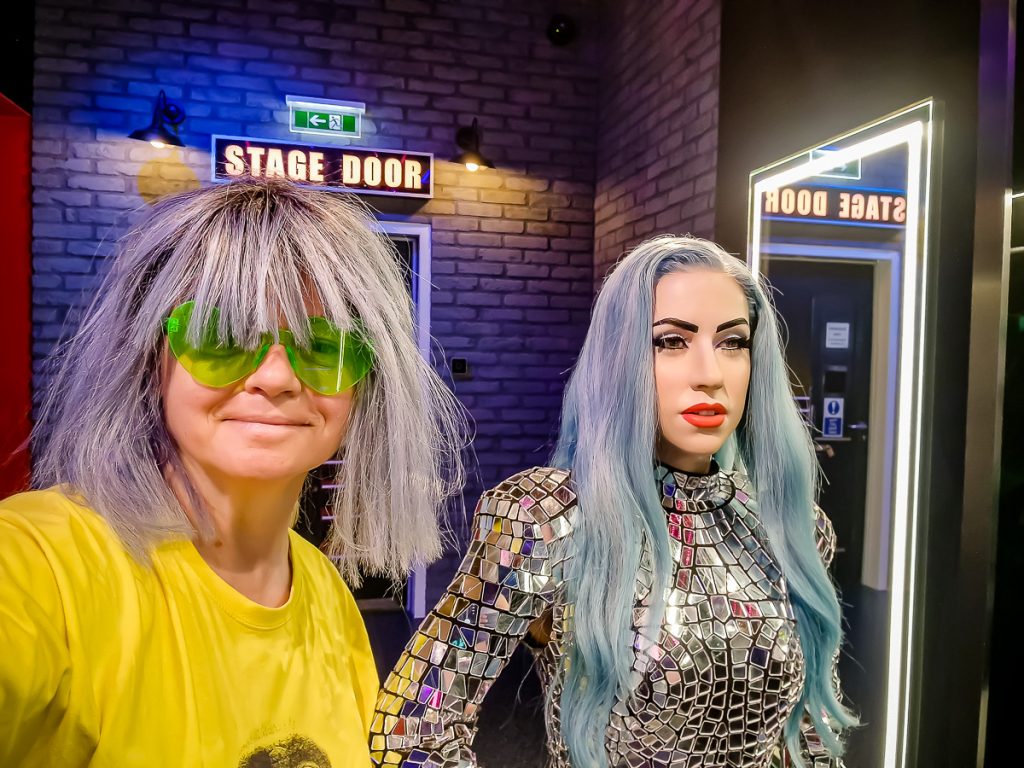
And in an instant, I went from Empress Sisi’s carriage to Trump’s Oval Office!
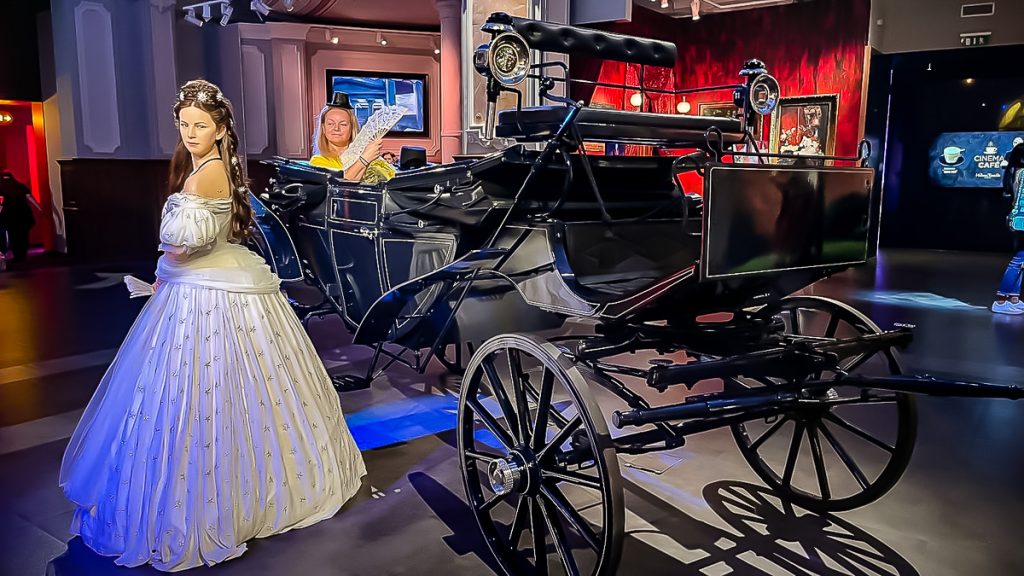
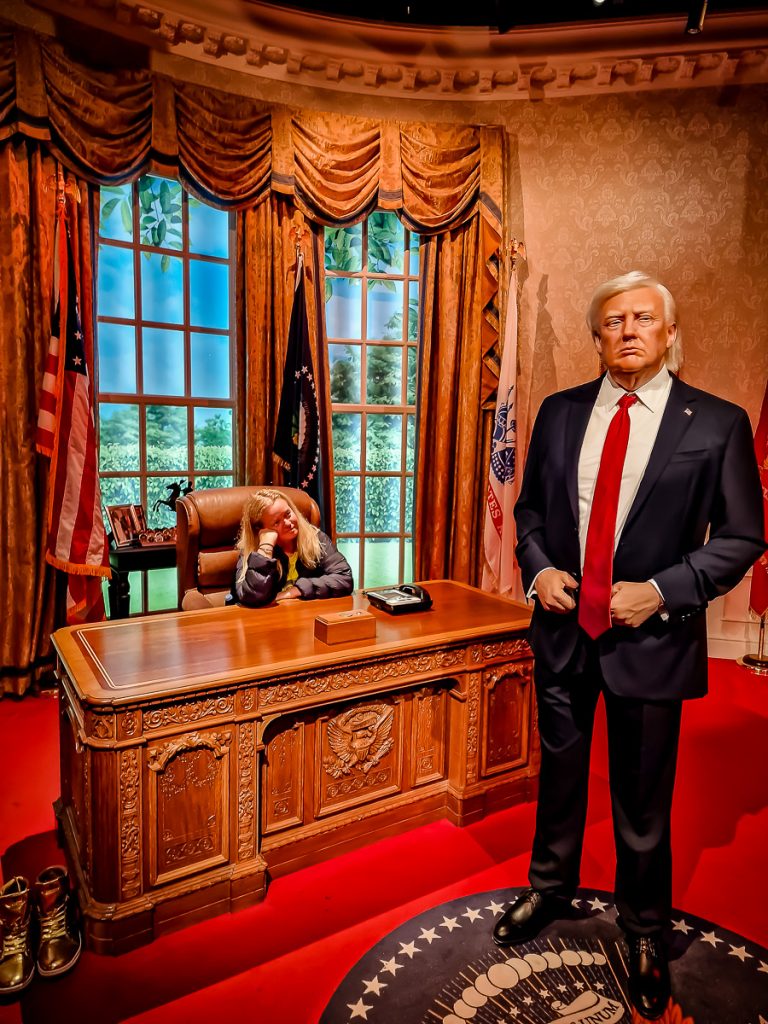
I even questioned the American president on a few matters of strategic importance, then left him be, as my stomach was growling with hunger.
WHAT TO EAT IN BUDAPEST
When in Hungary, let’s eat Hungarian food! It would be a shame not to, right?
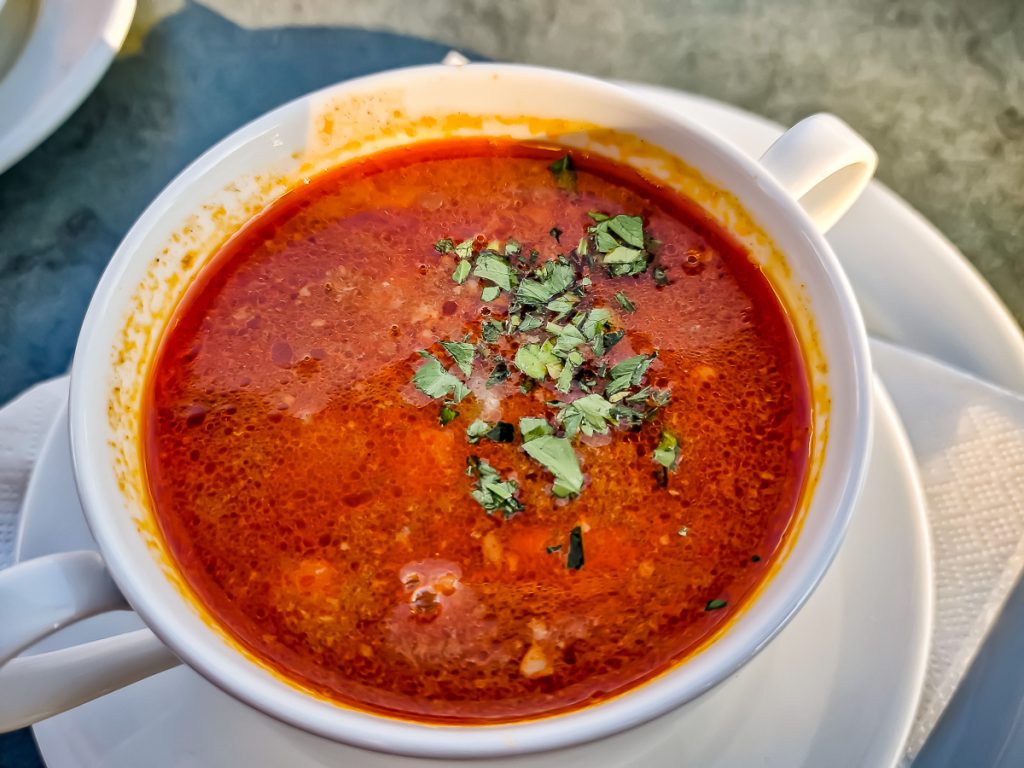
Goulash. Oh my, how delicious it is!!! And definitely not as spicy as it’s made back home.
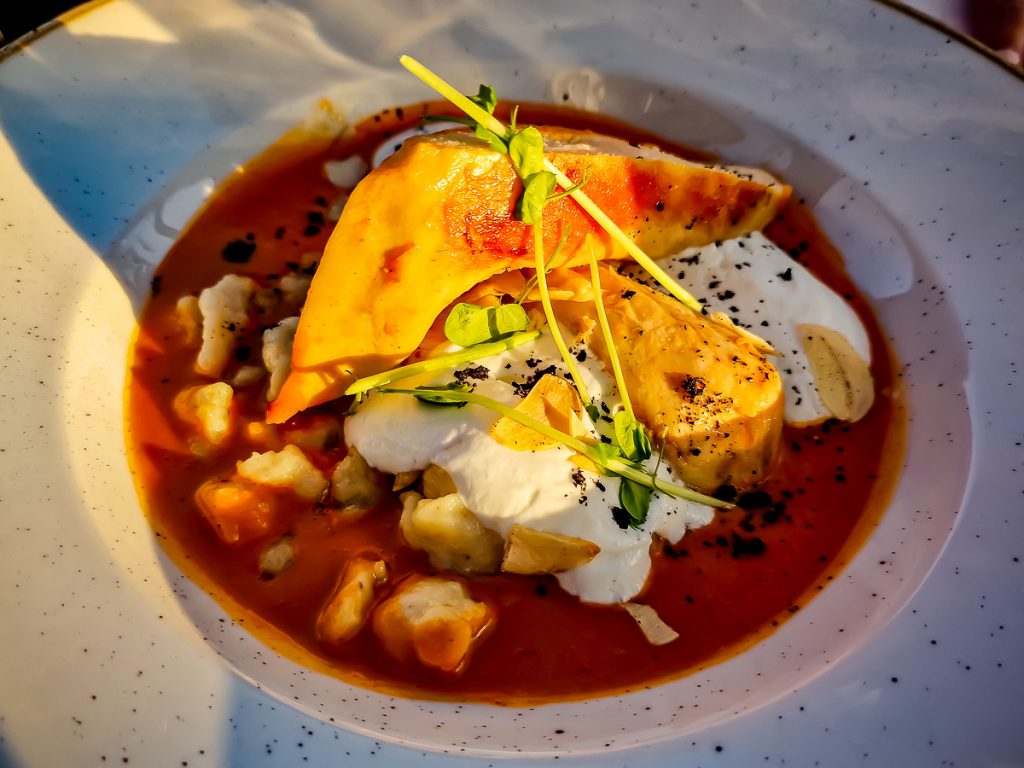
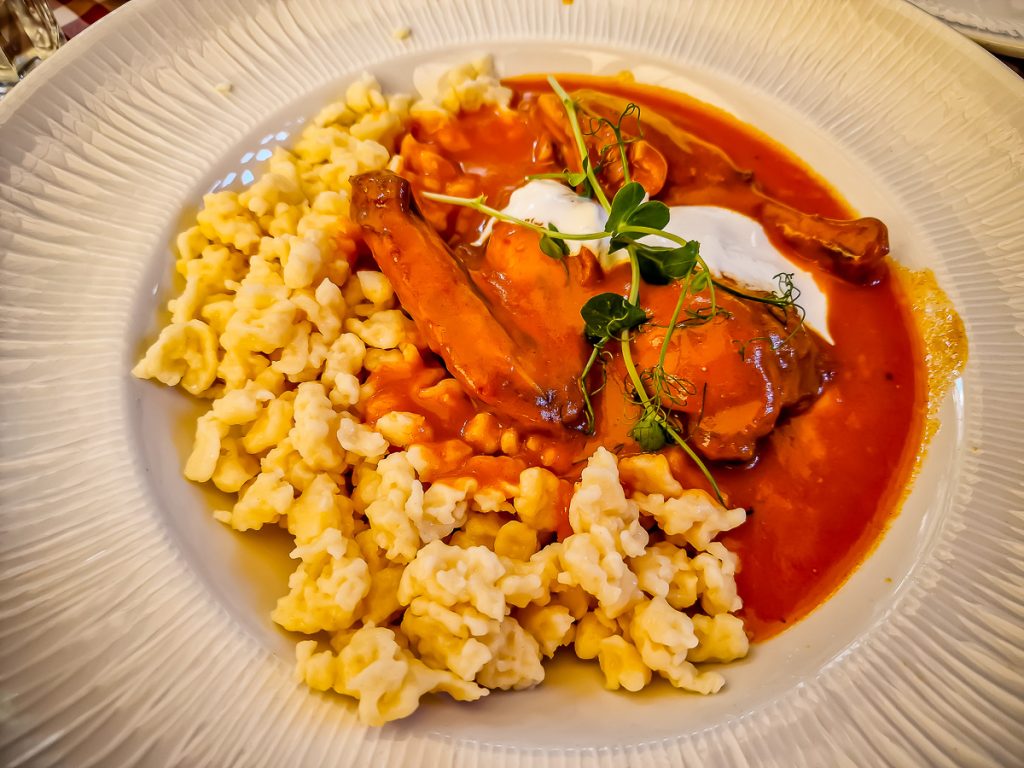
Paprikash. Tasty!
And I thought a lángos would be good as a snack. But I soon discovered it’s not just a snack, my friend – it’s practically a meal!

For them, lángos is an excuse to eat… a sort of Hungarian pizza. You can get a simple lángos or one with cheese, one with cheese-sour cream-garlic, or you can go all out and choose a lángos with various ingredients or the “Hungarian style” lángos: cheese, sour cream, onion, pepper, salami, bacon… “With everything” let’s say 🙂

I got myself a classic one: with cheese and sour cream. Huge and smelling amazing! If you’ve seen a TikTok video with someone trying to take a bite out of a lángos the size of their face, that was me hahaha.

With every visit to Budapest, I’ve gotten myself one.
I also ate at a recommended place:
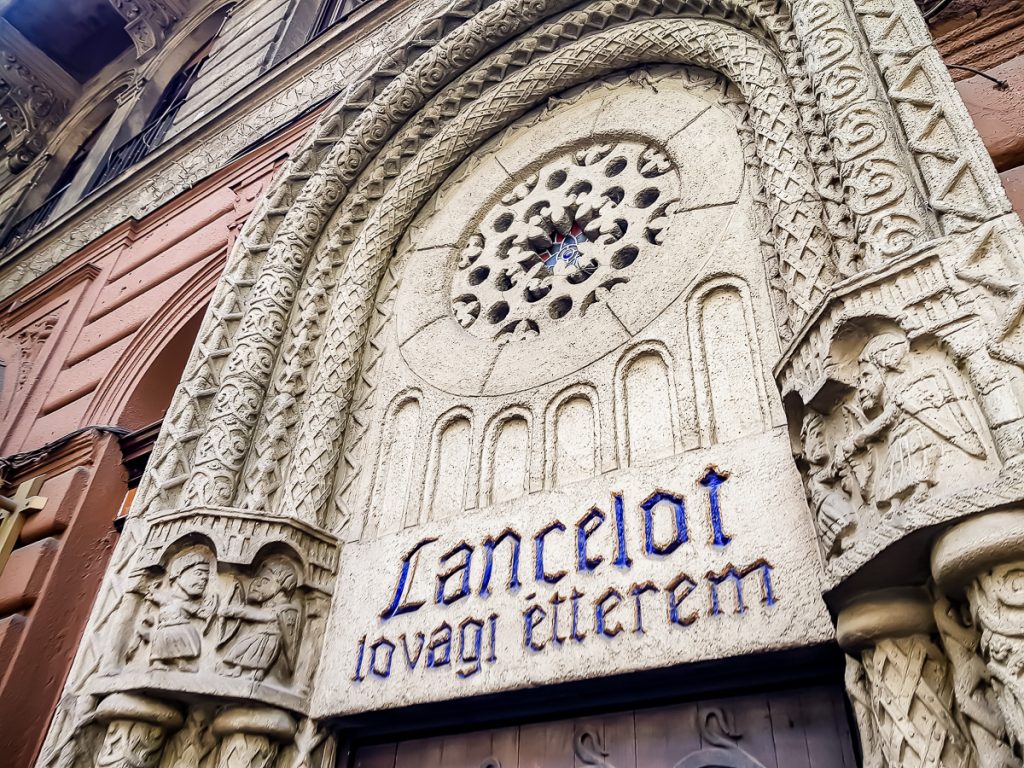
Sir Lancelot – a medieval-themed restaurant that offers a unique experience: the staff is dressed in costumes, you witness sword fights, and you eat the meat (game) with your hands, wiping your hands on… your belly, because they give you an apron. At least, that’s how it was when I first went there.
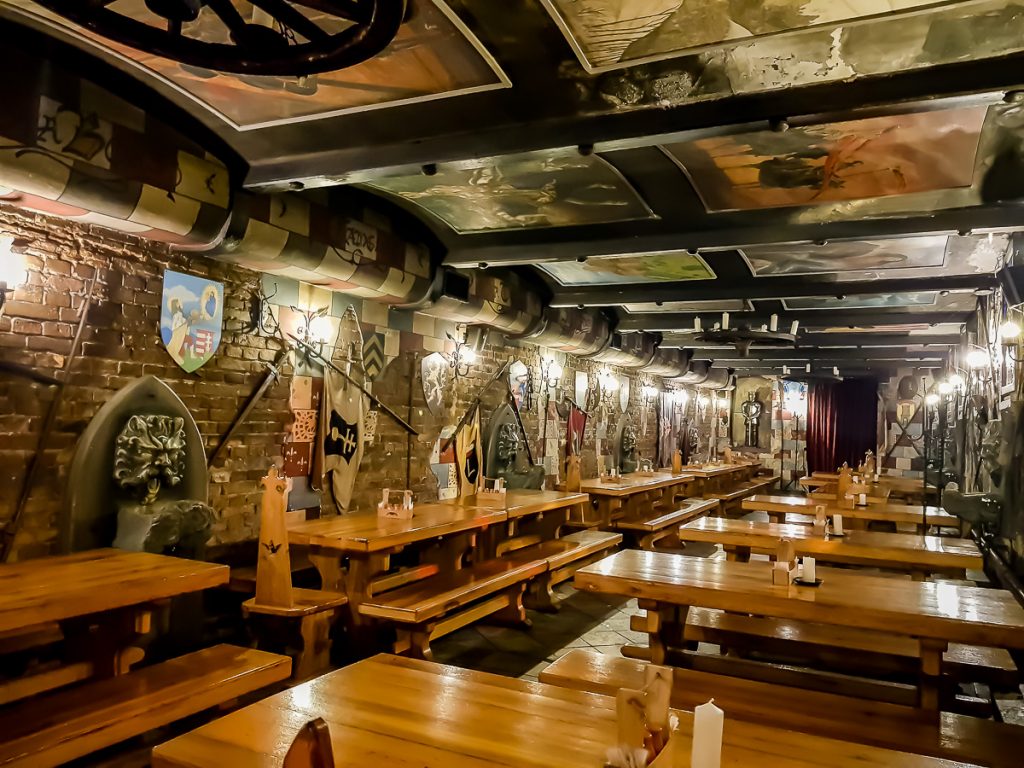
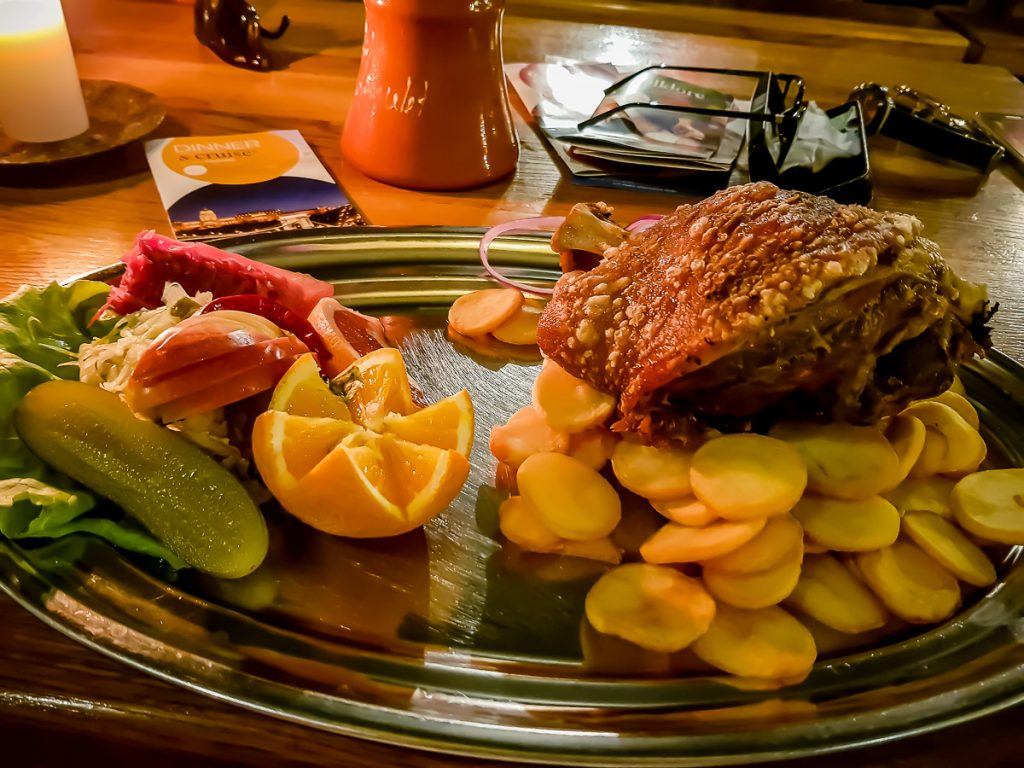
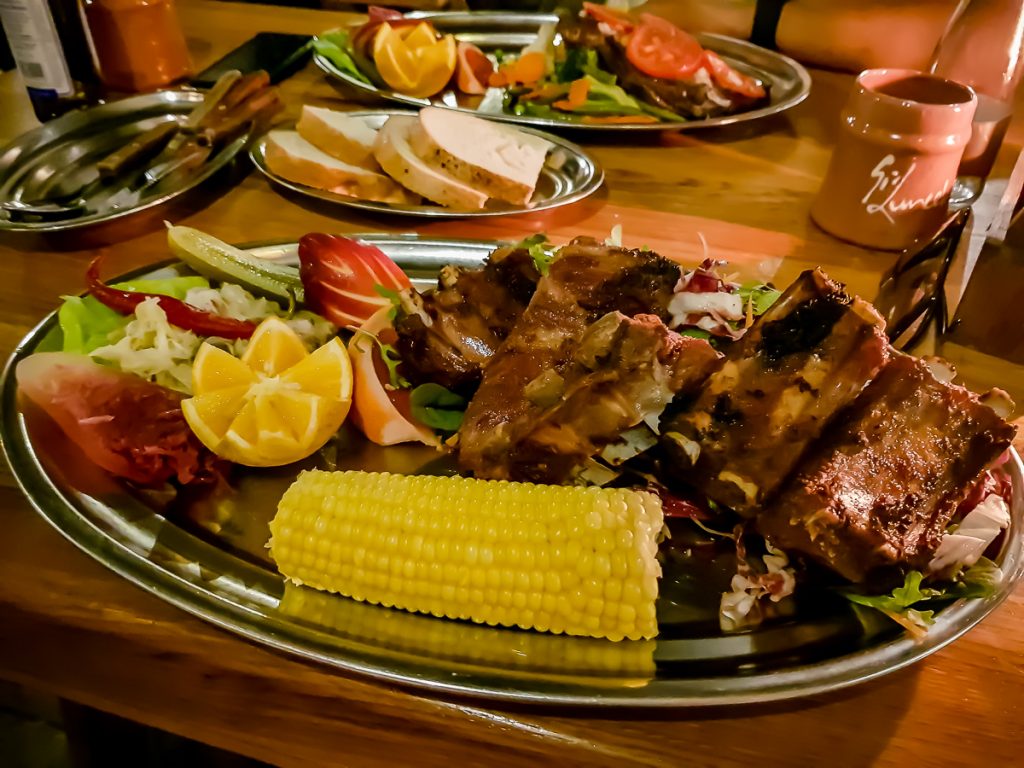
CHIMNEY CAKE
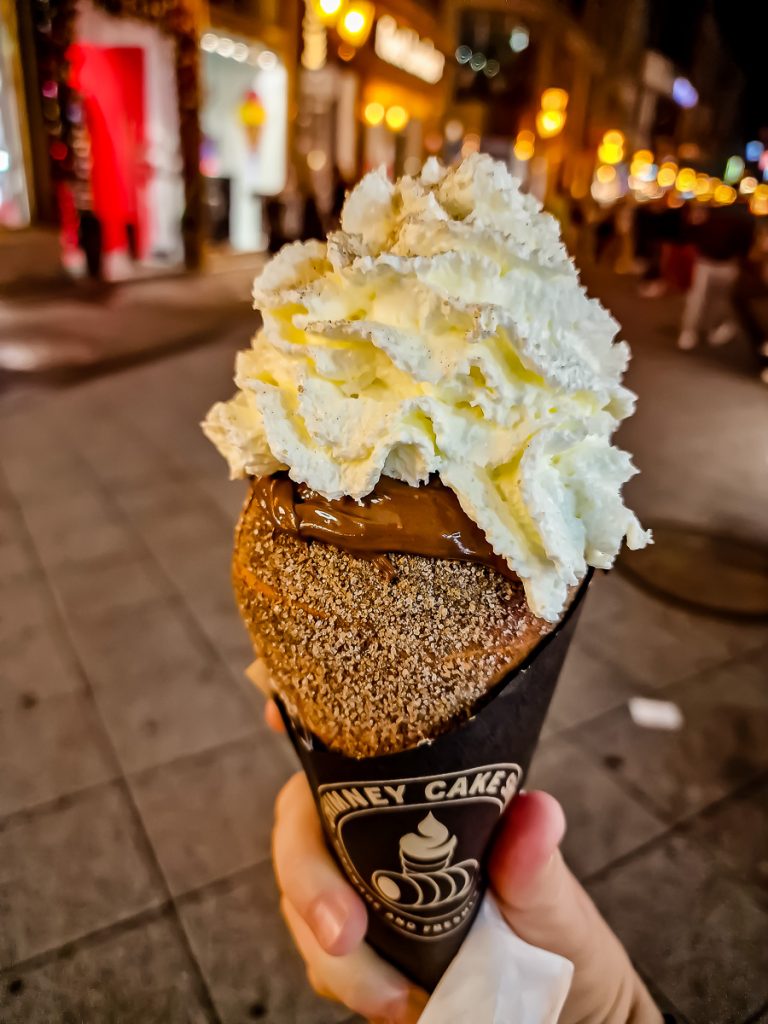
You just can’t miss this! Especially since it’s everywhere!
What is it? It’s basically a kürtős, but smaller than the ones we have back home and shaped like a cone, so the bottom is “closed”. This cone is filled with all kinds of goodies, and the moment I saw them, my mouth started watering!
It costs between 3,000 and 3,500 forints (€8–9), depending on what you choose. And if you want an extra topping like Nutella, that’s another 500 forints (about €1.5).
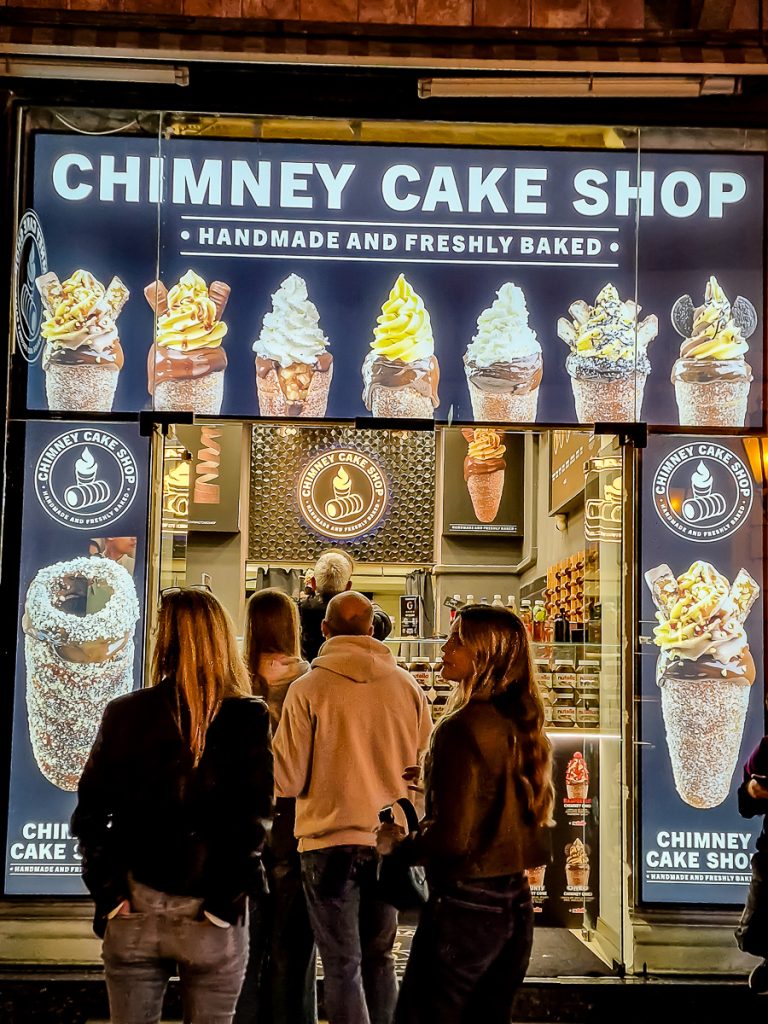
This year (2025) it seems even more popular than in previous years when I visited. This time it completely won me over, and I treated myself to several of them!
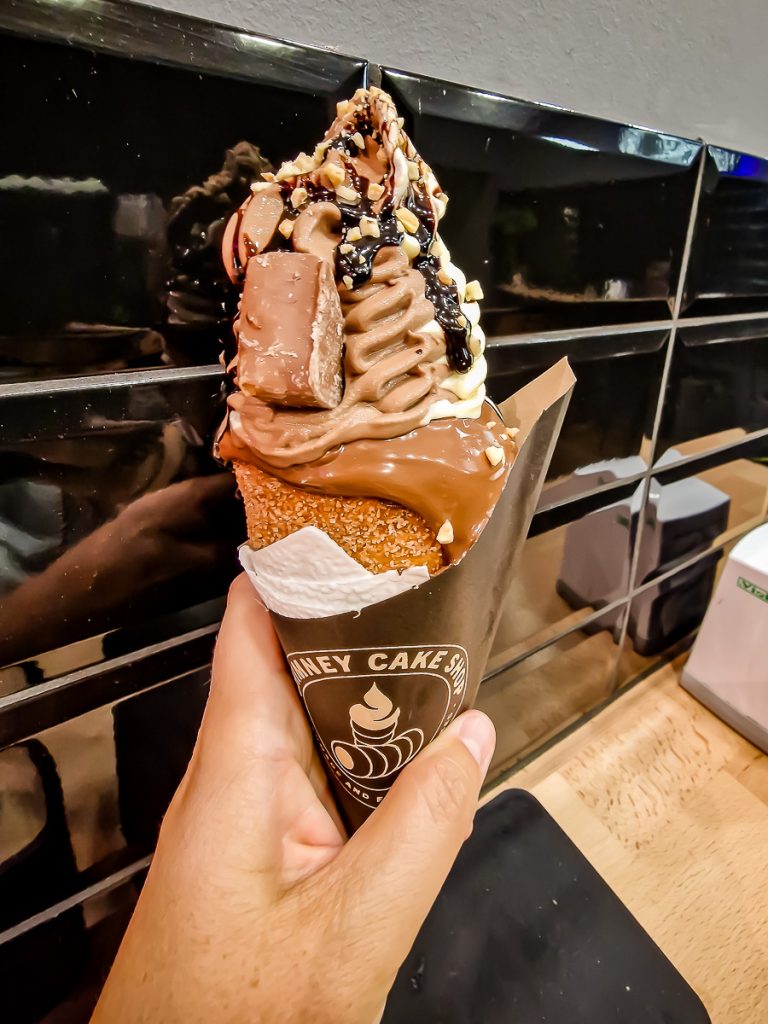
This one’s the ultimate indulgence, haha. Filled to the brim with Nutella, two kinds of ice cream, chunks of Snickers stuck inside, plus a drizzle of chocolate sauce and a sprinkle of nuts on top…
Don’t even ask me how many calories it has – I didn’t dare to think about it!
FAMOUS CAFES IN BUDAPEST
GERBEAUD

This historic cafe, dating back to 1858, is located in Pest, right in the city center.




You can come here just for a dessert, and there are plenty to choose from! I had a Dobos cake because I wanted to eat the Hungarian Dobos in Hungary. It was really good!
That’s when I found out that the cake is named after its inventor, Mr. József Dobos, a Hungarian chef.
You can eat inside, at marble round tables, or, if the weather is good, on the outdoor terrace.

You can also come here for breakfast, lunch, or dinner. It’s expensive, but hey, you can say you’ve been to a special place with history… My savings will be history too if I keep visiting places like this 🙂
And, guess what, I did it again because I couldn’t miss “the most beautiful cafe in the world”, as it’s considered.
NEW YORK CAFÉ

An absolute gem! It’s hard to describe in words, and I’m not sure if the photos will do justice to the beauty of the place!




You’re practically inside a palace, where you can’t take your eyes off the ceiling, walls, and pillars.







I even took pictures of the way to the restroom:

That’s how I discovered the lower area of the café, where there are more tables and different arrangements.



I’ve been here twice, in two different years. Compared to three years ago, now the policy has changed a bit: due to the high number of reservation requests, you can only make reservations for dinner. Otherwise, it’s first-come, first-served.
There’s always a line at the entrance – people trying their luck and waiting a long time for a table to free up so they can enter.
Beyond coming for the food or drinks, you come here to take photos 🙂 Because New York Café is an “Instagrammable” place, so you have to have your own shots too…



Well, did you think I was any different? I took a… tour of the café, with stops for photos.

The atmosphere is maintained by a pianist who plays well-known melodies, but from time to time, a folk band appears at the top of the stairs and livens up the café with famous songs.
Note: I have about 200 more photos taken here… I could open an exhibition!
But for now, I’ll show you a few dishes from the menu, some very close to my view, others already friends with my stomach:





Let me go see what’s in my fridge because I suddenly got hungry!
…………………………. (meal break)
SHOPPING IN BUDAPESTA
I came prepared with forints, which I bought from an exchange office back home. But I could have easily just carried euros, as in many stores (especially souvenir shops), the prices were already listed in euros, not forints!
You can wander through neighborhoods and streets full of shops – some very charming, others quite expensive – but here I’ll mention two key and convenient spots for shopping.
VÁCI UTCA
Váci Street is a famous pedestrian street in the heart of Budapest.

It’s incredibly lively, with stores from major international chains as well as boutiques filled with souvenirs and all sorts of curiosities.
You can also rest your feet after filling your bags with goodies, as there are plenty of terraces, cafés, and restaurants to choose from.
If you start at one end (Vörösmarty Square, where you’ll find the Gerbeaud Café and a metro station) and walk the 1.2 km to the other end, you’ll reach a monumental building that houses a famous market.
THE GREAT MARKET HALL (KÖZPONTI VÁSÁRCSARNOK)
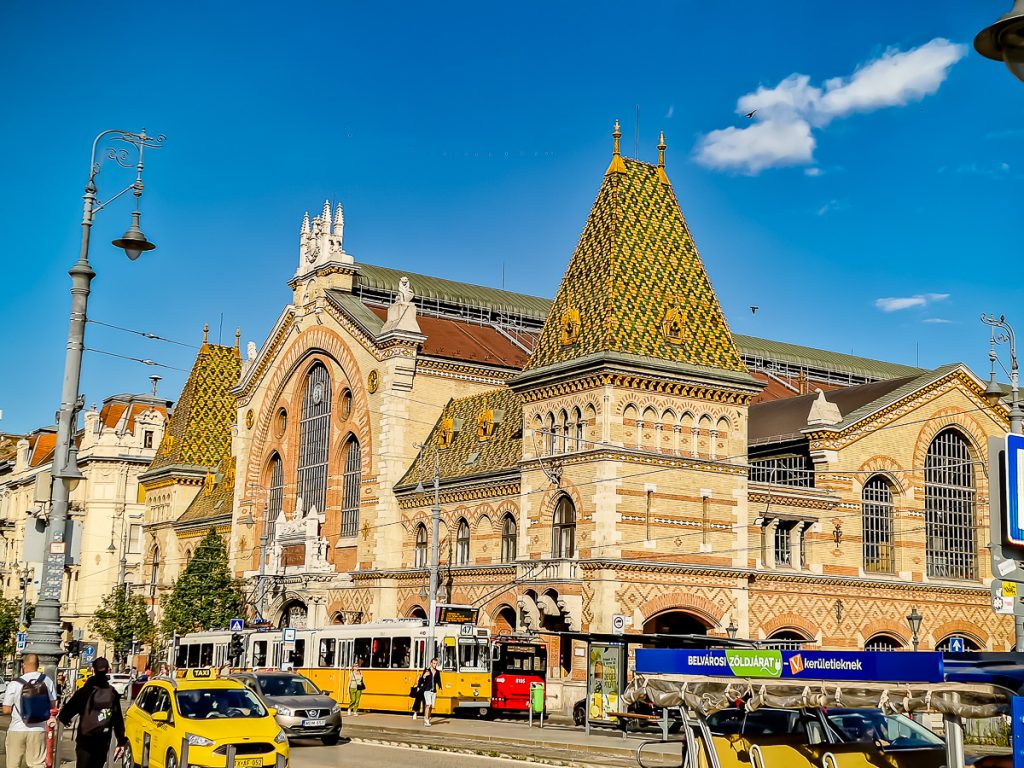
Dating back to 1897, it’s considered one of the most beautiful brick buildings in Hungary!
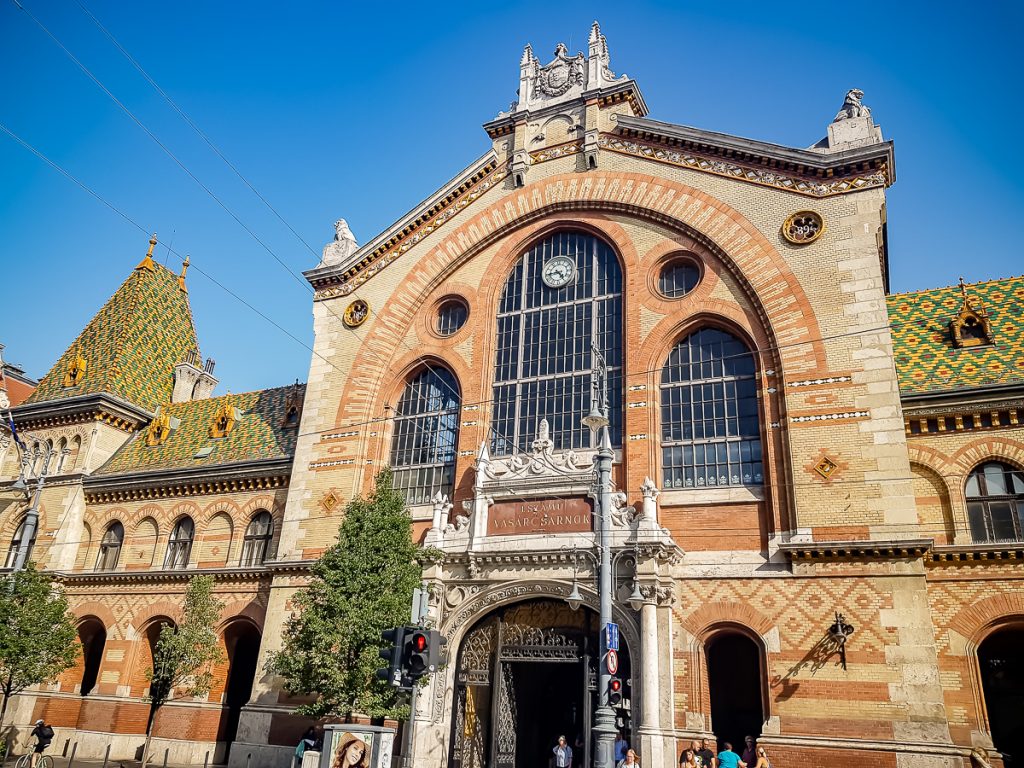
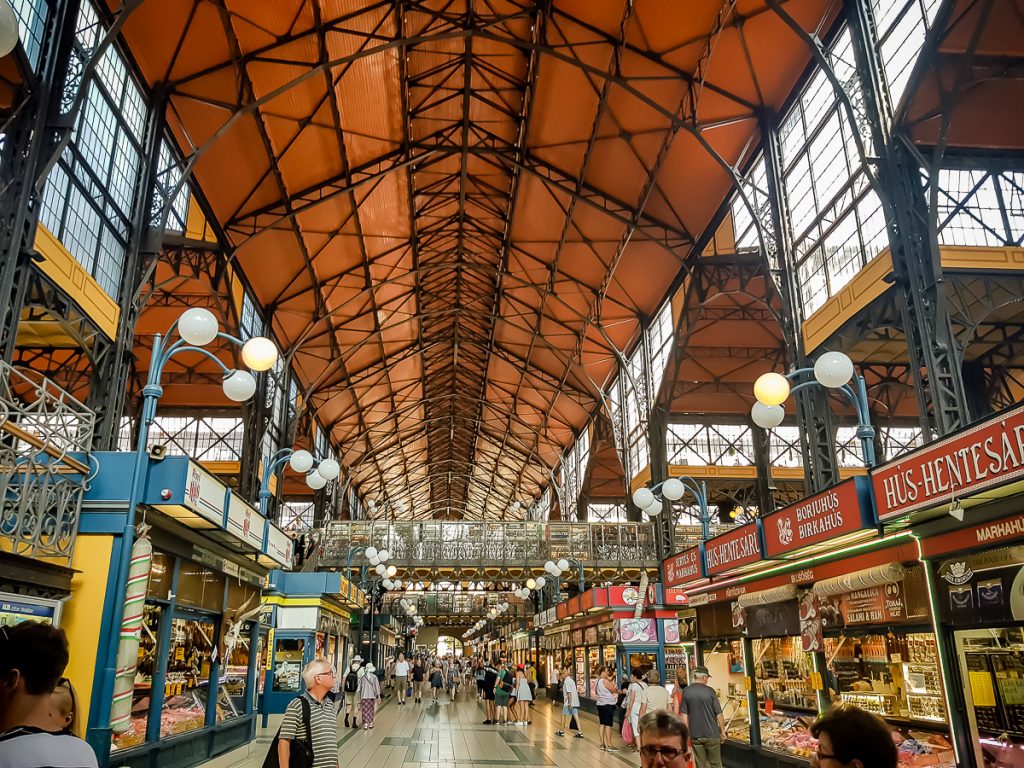
Both locals and tourists from all over the world come here because the selection is vast, and from what I understand, the prices are much better than elsewhere.
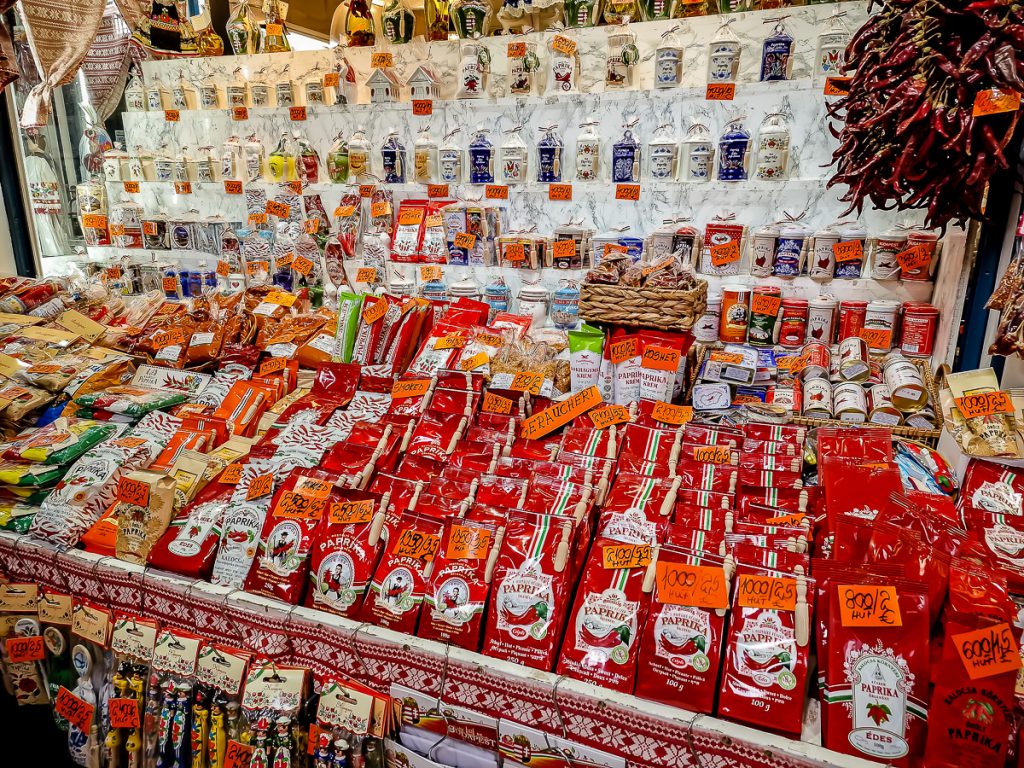
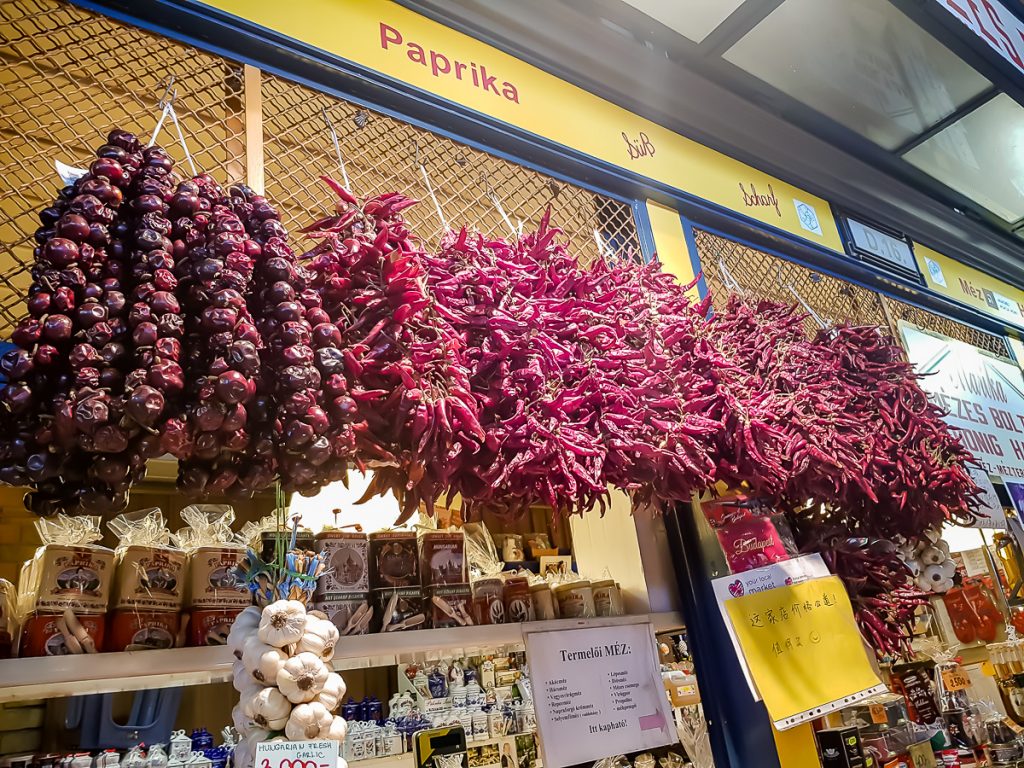
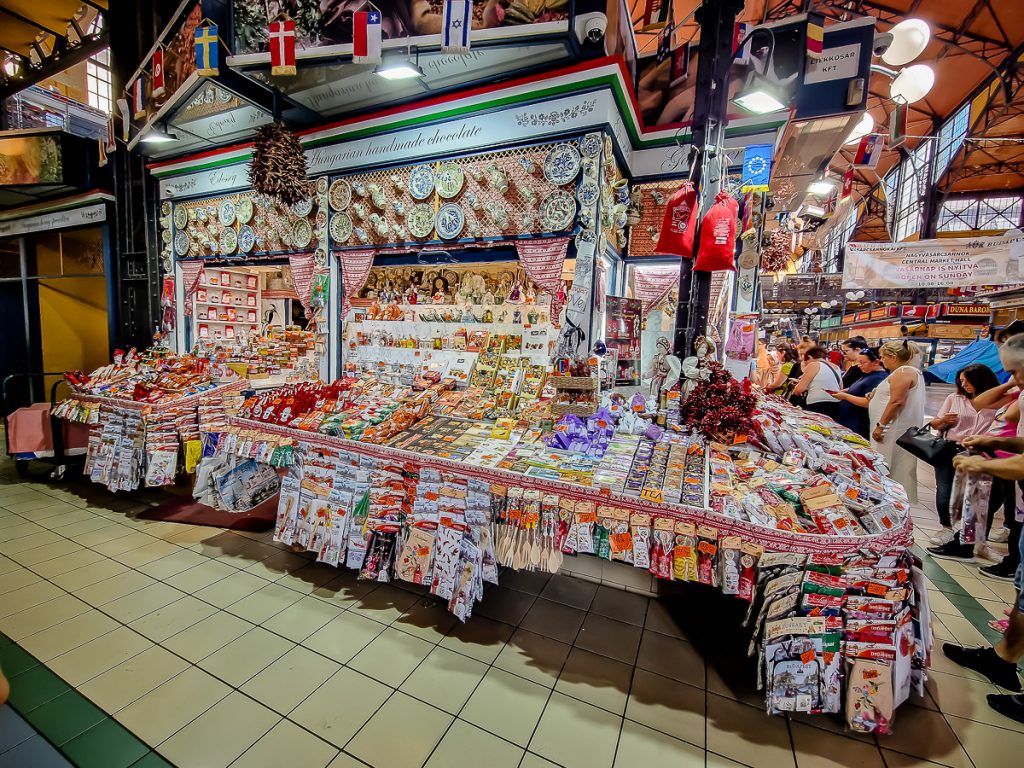
This immense hall has its classic section – a market for vegetables, fruits, and all kinds of food – and a section dedicated to souvenirs, a whole bazaar of items, clothing, bags, and especially their signature product, paprika, packaged in every possible form.
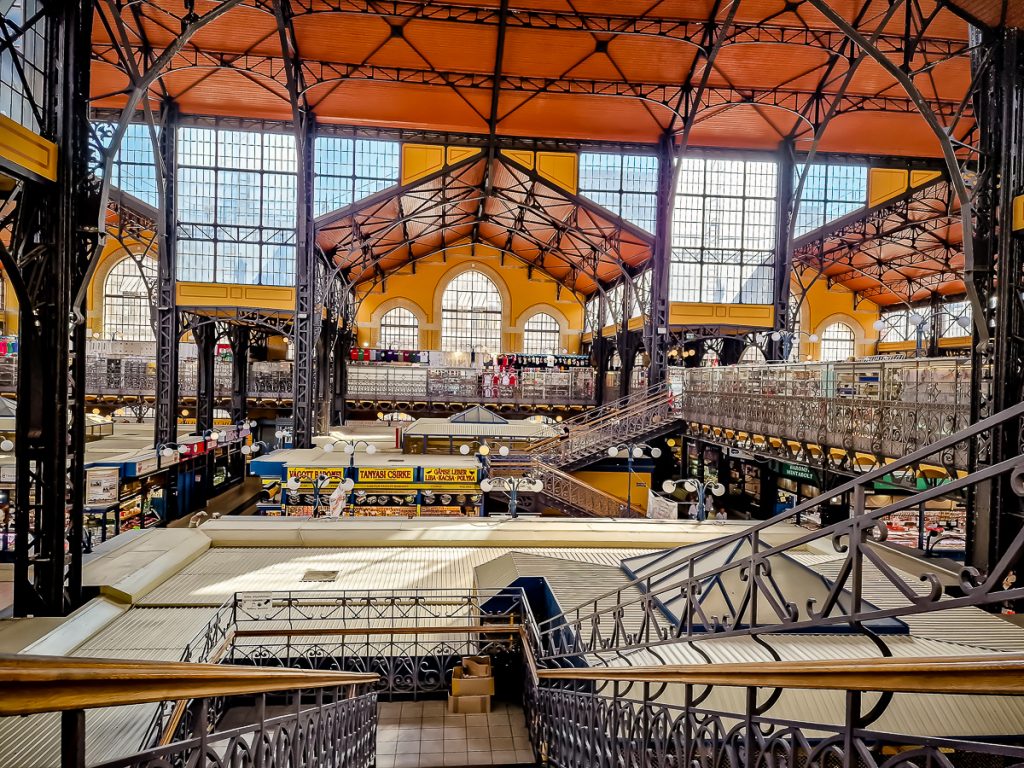
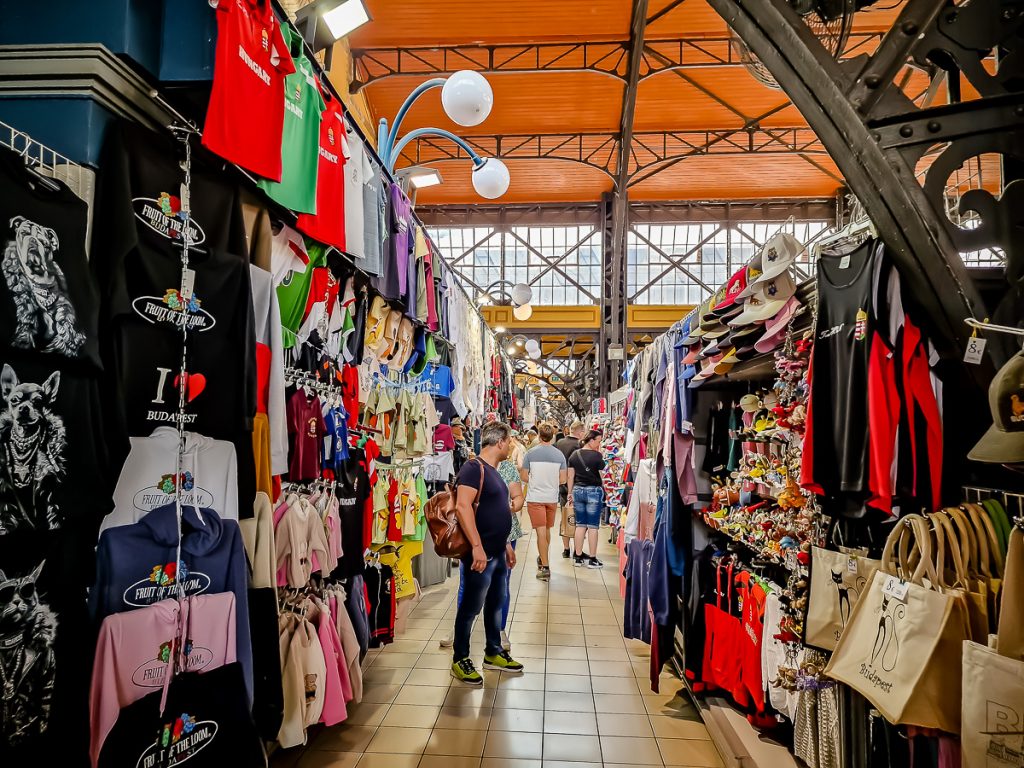
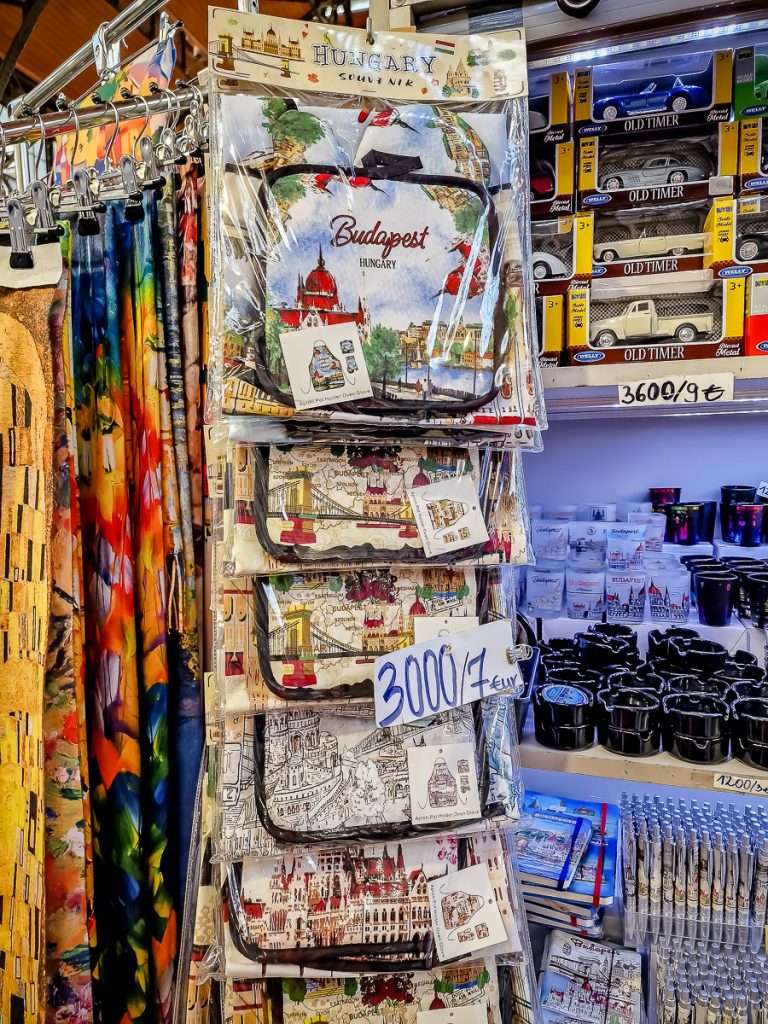
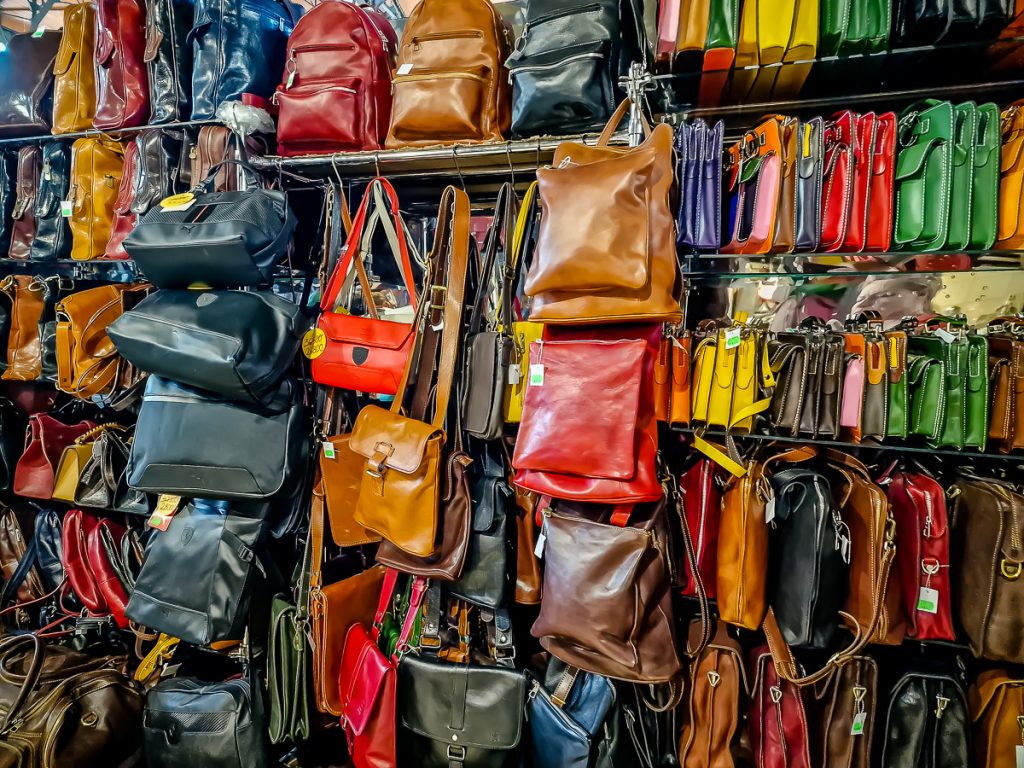
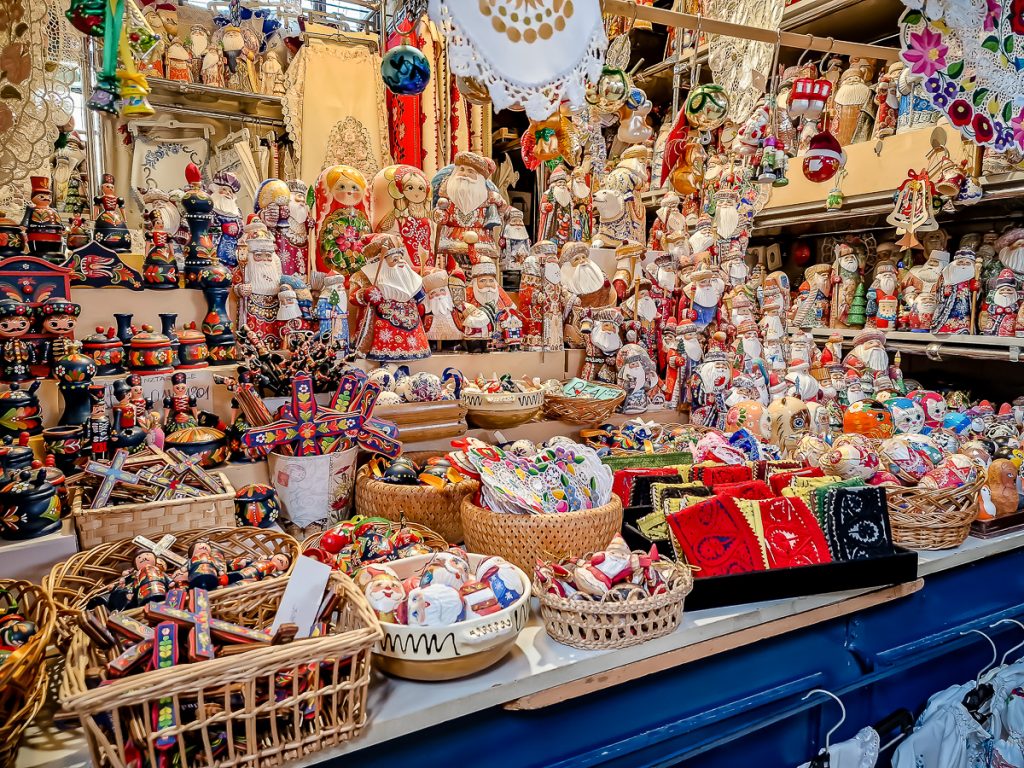
On the upper floor, where it’s almost impossible to move through the dozens of stalls selling everything from bags, traditional items, and toys, to mugs, cloths, ashtrays, or Budapest magnets, there’s also a bistro area where you can sit and enjoy traditional dishes.
I didn’t stay because I was focused on grabbing souvenirs quickly so I could rush to the airport.
